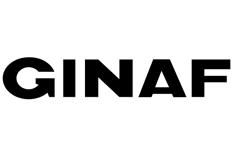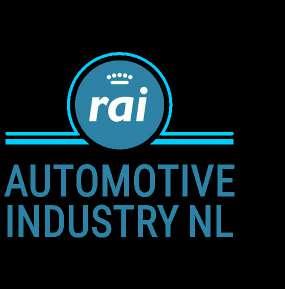INDUSTRY MAGAZINE


Sustainable Mobility
Sustainable and Smart Manufacturing
Digitalization (Smart Mobility)
Human Capital
Design & Materials
Internationalization
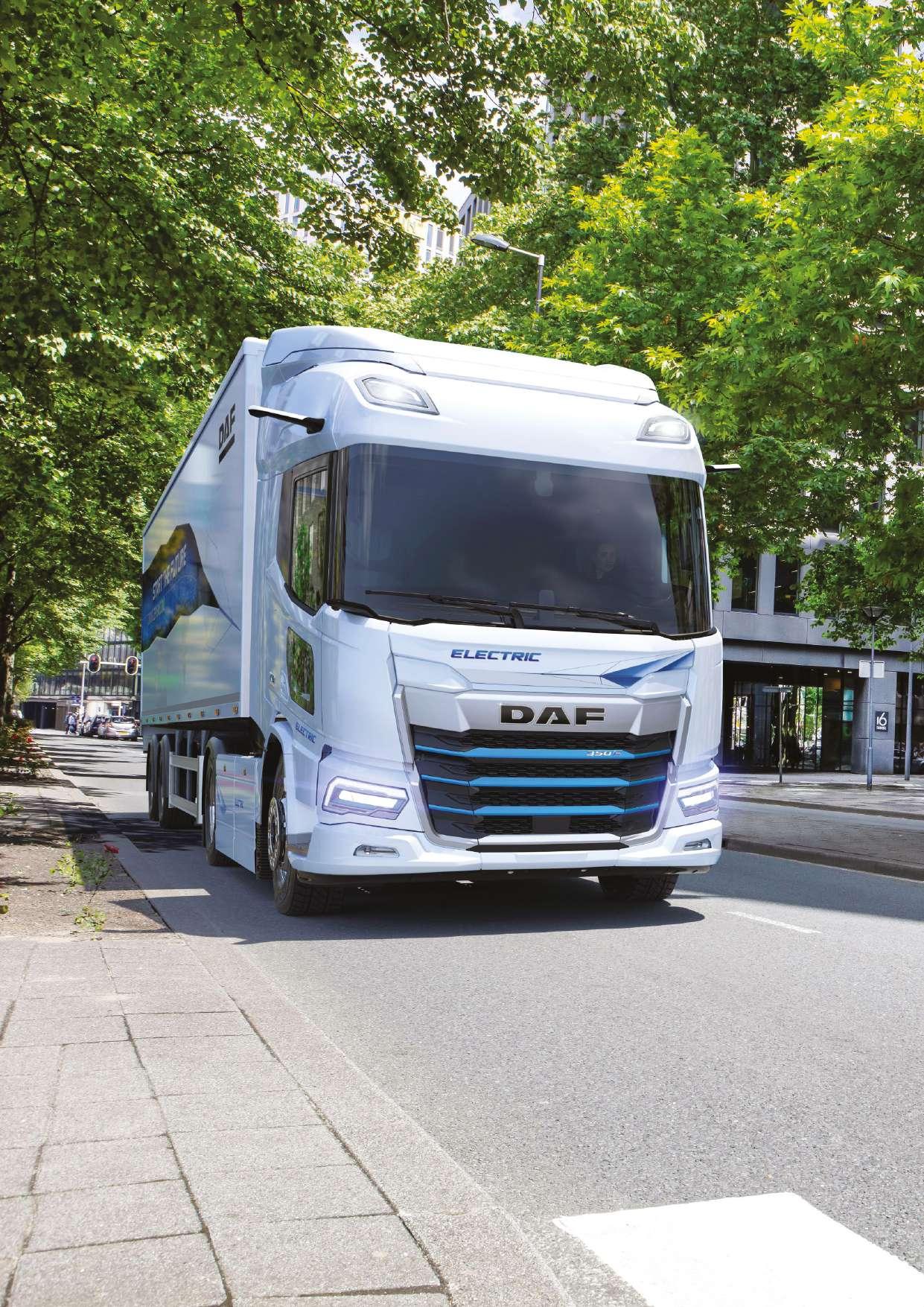

INDUSTRY MAGAZINE


Sustainable Mobility
Sustainable and Smart Manufacturing
Digitalization (Smart Mobility)
Human Capital
Design & Materials
Internationalization

Dear reader,
As the Chairman of the Board of RAI Automotive Industry NL, I am proud to present this special edition of our magazine, which delves into the dynamic and transformative journey of the Dutch automotive industry. In a landscape characterized by rapid advancements and global challenges, our industry stands as a beacon of innovation, sustainability, and resilience.
This edition highlights our main themes: smart & green mobility, sustainable manufacturing, human capital, design and materials and internationalization.
Our members integrate cutting-edge digital technologies into our mobility solutions from autonomous vehicles to intelligent traffic management, delivering driving efficiency, safety and convenience on the roads. We cover some of our networks groundbreaking projects and collaborations.
Dutch manufacturers embrace the logic of maximizing productivity and quality while reducing environmental impact by using renewable energy, circular economy principles and smart technologies. We show sustainable practices and smart manufacturing from our industry members. Cooperating on smart, safe and sustainable projects which ensure a bright future for automotive industry in The Netherlands.
This edition features stories of teams who are driving innovation and excellence, highlighting the importance of
continuous learning, inclusivity and collaboration. Our talented and diverse workforce is at the heart of our industry’s success. Their development ensures that the Dutch automotive industry remains agile and forwardthinking.
This magazine explores the latest trends and innovations in design and materials. Our members collaborative network motivates all of us to work, improve and grow together. Enabling advancements in materials from lightweight developments to sustainable alternatives making our product proposal for global markets future proof.
Our industry is truly global with an international history. Strong trade relationships have been cultivated over the years. This publication underscores the strategic importance of our export activities and the collaborative efforts that make us a key player on the global stage.
As we navigate the future, the Dutch automotive industry remains committed to excellence, innovation and sustainability.
I invite you to explore this edition and discover the remarkable achievements and aspirations that define our journey. Together we are driving the future of mobility.
Dennis van Well Chairman of the Board RAI Automotive Industry NL
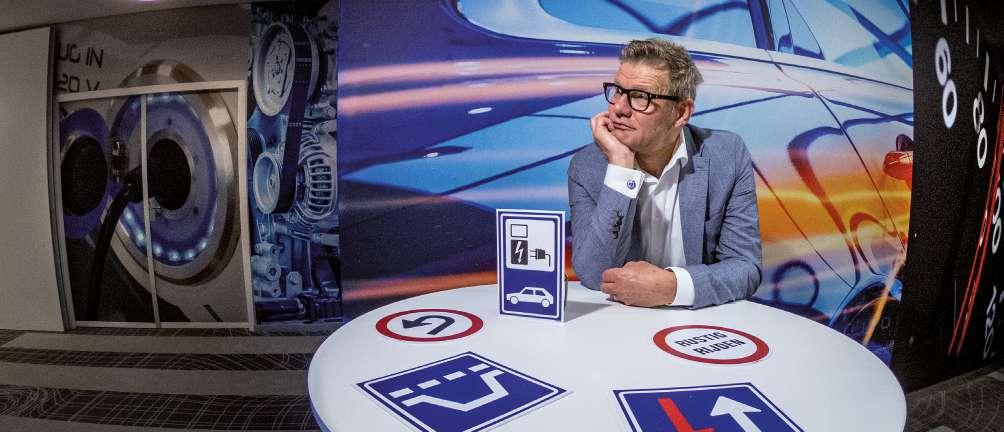

Cooperating
CLEPA
The
Sustainable
The
Precision
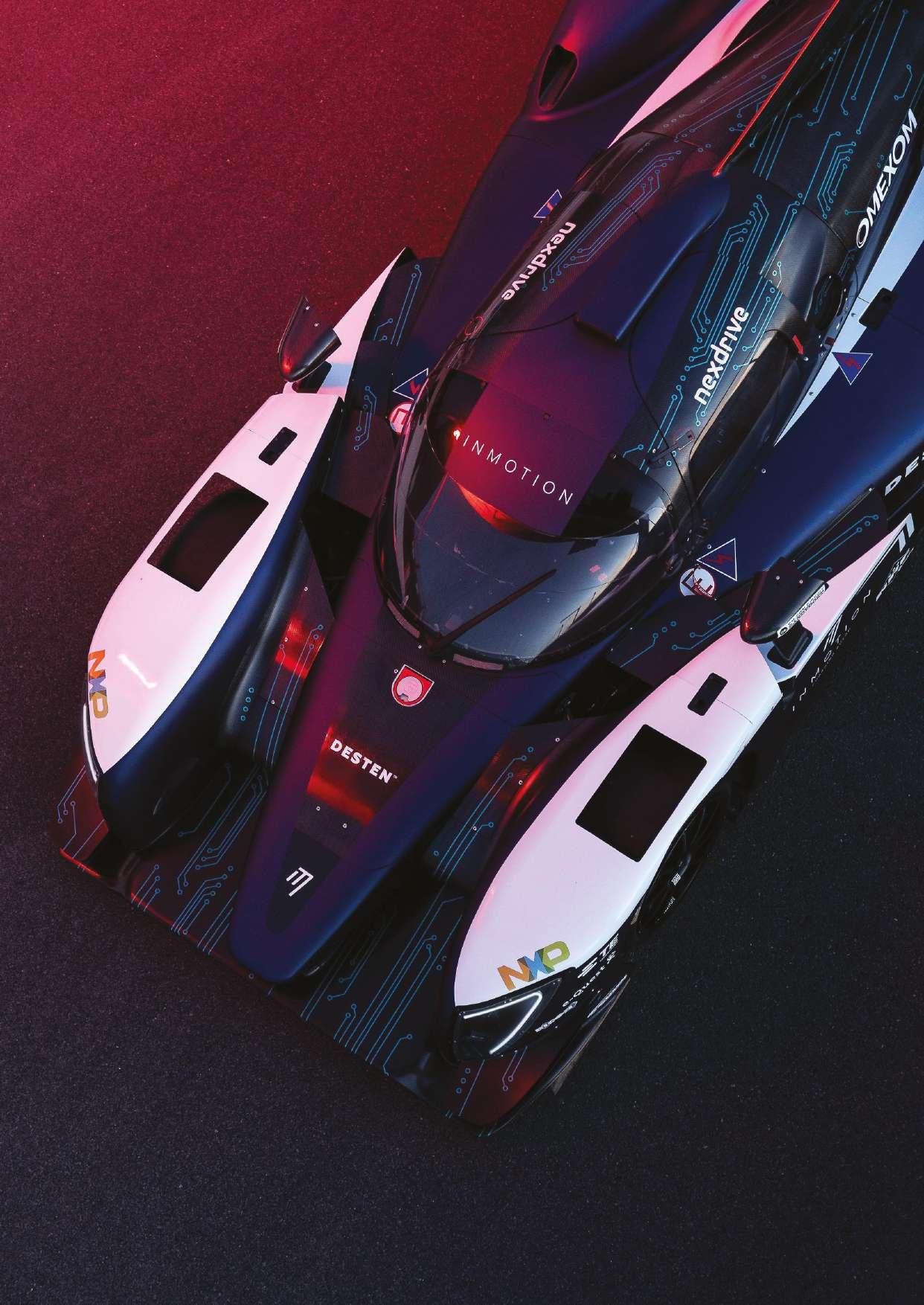

RAI Automotive Industry NL is the cluster organization of the Dutch automotive industry, mobility sector and related knowledge and education centres with about 200 members. RAI Automotive Industry NL supports the innovative Dutch automotive sector by profiling and representing the sector, nationally and internationally. An important basis is formed by the national ecosystem that is part of the innovative Top Sector High Tech Systems & Materials (HTSM), in which industry, education, science and governments parties actively work together.
The Netherlands is one of the most innovative countries globally, according to Global Innovation Index (PwC), Automotive Disruption Radar (Roland Berger) and Autonomous Vehicles Readiness Index (KPMG).
RAI Automotive Industry NL promotes the enforcement of the international market position of its members and promotes the business climate in The Netherlands by continuously strengthening the Dutch business innovation ecosystem.
Our purpose is to:
• Connect internal- and external stakeholders
• Represent the Dutch Automotive Industry
• Facilitate initiatives and joint interests
• Inspire & energize
• Share best practices and intelligence
• Stimulate cooperation and innovation
Your membership supports the strengthening of the Dutch Automotive Sector through:
• Promotion of the Dutch Automotive sector at home and abroad
• Highly specialized knowledge transfer through workshops and on-the-job training courses
• Strengthening automotive education at all levels so that more and better-qualified graduates become available to enhance the growth of your business
• Widening the Automotive network to other sectors of excellence and networks needed to realise broad mobility innovations.


The Netherlands is one of the twenty largest economies in the world and is a leading global knowledge economy. As a country, we have a longstanding history of invention. In times of global, social and economic challenges, we as Dutch find ways to ‘grow’ innovation and trade, through entrepreneurship by international cooperation, and of course sharing knowledge. We act as a catalyst in the fields of innovation and education. How do go about it? One of the secrets of a great innovation heritage is the way we collaborate in The Netherlands. Leo Warmerdam, executive director of Holland High Tech, the top sector High Tech Systems and Materials, sheds light on the intricacies of Public Private Partnerships (PPP) and its influence on driving innovation.
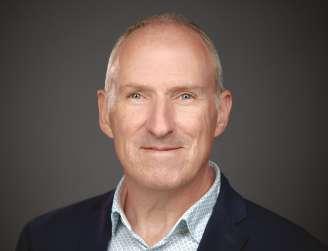
Leo Warmerdam, Executive Director
Leo Warmerdam: “The Dutch government has a clear goal: in the future, mobility must not only be affordable, but also climate-friendly and intelligent. Long-term innovation in sustainable mobility in The Netherlands is one of the levers to accelerate the transition towards a zero-emission society. The Netherlands is a frontrunner* in developing technologies
that will define innovation in the automotive industry, in particular through a solution-driven collaborative spirit.”
“The only way we can reach our goal is by joining forces. In The Netherlands, knowledge institutes, the industry and the government research a wide field of innovations for and made possible by the automotive industry. We focus on a wide
field of technologies and applications: from the transition to hydrogen and battery driven mobility now, to fuel systems beyond our current expectation in the future, from semiconductor applications for autonomous and safe driving and efficiency, to composites and digital twinning for smart mobility. We also focus on how we develop these new innovations. We work in learning

communities where students and industry workers join researchers from technical universities as well as their industry counterparts to ensure life long learning.”
“Another aspect is our drive to join forces on an international level. In The Netherlands, we have already made good progress in redesigning mobility and our infrastructure. We expand and further develop our innovations in bilateral cooperation in order to jointly develop competitive, intelligent and climate-friendly mobility in model projects, for instance in the Sustainable Mobility Cooperation programme, an international Public Private Partnership we have with our neighbouring country Germany.”
“Both Germany and The Netherlands strive to modernise their mobility
infrastructure and make it sustainable. Both countries learn from each other, look for common economic benefits of new mobility forms and take on a pioneering role at a European level when it comes to a sustainable and advanced mobility system. Our goals are to exchange views and share experiences at European level. PPP is the way forward for sustainability in The Netherlands and beyond. In this way, we can work together more easily across borders and cooperate in preferred fields.”
“As the top sector High Tech Systems and Materials, we are very happy that we have RAI Automotive Industry NL as one of our industry partners to drive innovation in The Netherlands and across borders to maintain and strengthen our international innovative


lead through mutual cooperation and in collaboration with government and knowledge institutions. The focus on green and smart mobility, smart manufacturing and the use of new, lighter materials, as well as more intensive re-use of existing materials (such as high-grade steel and aluminium) are the key ingredients of a more sustainable future.”
* According to the Global Innovation Index (PwC), the Automotive Disruption Radar (Roland Berger), and the Autonomous Vehicles Readiness Index (KPMG), The Netherlands is one of the most innovative countries in the world.
Holland High Tech, the top sector High Tech Systems & Materials (HTSM), develops and produces highquality end products, semi-finished products, components and materials for customers around the world. Dutch high-tech products are intelligent, precise and efficient. They are used worldwide in, for example, medical devices, semiconductor production, cars, logistics systems, aircraft, satellites and energy systems.
As one of the ten top sectors, we are the great coordinator for hightech innovation in public-private partnerships in The Netherlands and abroad. We realize a positive impact for urgent transitions in society: we turn innovation power into a serious business model. We initiate and stimulate technological solutions and thus contribute to the mission-driven innovation policy of The Netherlands. Together with our ecosystem, we arrive at solutions to societal challenges. How can we contribute to the urgent transitions we are now facing? How do we make The Netherlands circular, sustainable, safe, habitable and keep ourselves healthy? We share that and more in our VISION 2030.
www.hollandhightech.nl
The mobility sector is undergoing a significant transitional phase. The shift from conventional fossil fuel-powered combustion engines to electrically driven vehicles has gained considerable momentum in recent years and is expected to accelerate further in the coming years. This transition is affecting all sectors in which RAI Vereniging members are active and could have profound implications for their business models.
The electrification of the mobility sector is leading to the emergence of new players in the market. This is resulting in changes to existing market structures and distribution networks. Moreover, electric vehicles require different and less maintenance, which will, in turn, lead to new dynamics within the market. For the supply industry in the Netherlands, it is crucial to stay aligned with the development of new knowledge and technologies, particularly in the
field of (heavy-duty) batteries. A critical success factor in this process is the availability of an adequate charging network that can meet the rapidly growing demand for electricity in the coming years. Alongside batteryelectric vehicles, renewable fuels and hydrogen-electric vehicles will also play a role in achieving climate goals.
Vehicles are increasingly becoming rolling computers. Access to the data generated by these vehicles is essential for their maintenance and repair, as well as for the development of new mobility services in the form of Mobility as a Service (MaaS). Particularly in the passenger car sector, there are significant conflicts of interest between

the OEM channel and the independent aftermarket, and the coming years are likely to see intense debate over vehicle and driver data and the conditions under which it is shared. In the heavyduty vehicle sector, vehicle data is already widely shared among parties for the maintenance of trucks and trailers.
The Netherlands is expected to continue to urbanise in the coming years. This will lead to mobility issues, particularly in city centres. To improve the quality of life in urban areas, increasingly stringent environmental requirements for traffic are being introduced, and car usage in city centres is being discouraged. New hybrid-electric vehicles, known as Light Electric Vehicles (LEVs), are adding to the congestion on cycle
paths. The growing speed differentials are increasing traffic safety risks. The government is attempting to manage this negative trend through a new National Admission Framework for LEVs, but since this framework merely tries to fit new vehicles into existing categories, it is unlikely to provide a sufficient solution.
In response, RAI Vereniging has proposed a new, more future-proof vehicle classification that considers the new modes of transport and aims to enhance traffic safety in urban areas. The implementation of ADAS systems is also expected to have a positive impact on traffic safety. The reduction of car use in cities and the development of MaaS services present opportunities for bicycles, scooters, and motorcycles in commuter traffic.
“In the ever-changing world of mobility and the evolving demands from both government and consumers, the role of RAI Vereniging is more important than ever. By informing our members, encouraging collaboration, and advocating for appropriate policies from The Hague and Brussels, we are working towards a future where mobility remains accessible, sustainable, affordable, and safe for everyone.”
- Frits van Bruggen, President of RAI Association
Finally, the shift from vehicle ownership to vehicle usage will significantly shape mobility in the Netherlands in the coming years. Private leasing and shared concepts are on the rise and will have important consequences for the dynamics in the new sales market and vehicle maintenance. As providers of private lease vehicles and shared concepts strengthen their market position, they will be able to negotiate more aggressively when purchasing new vehicles and maintenance contracts. Not only RAI Vereniging members but also the board and the various sections within RAI Vereniging will need to adapt to these changes in their market.
We are RAI Association RAI Association voices the needs and interests of all road users and is always ready to discuss the role of mobility in The Netherlands with the government and other organizations.
www.raivereniging.nl

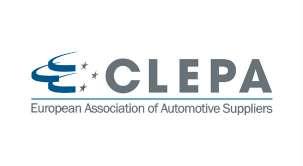
Benjamin Krieger has worked in EU policy and communications for the past 15 years, with positions in the European Parliament, as a consultant, and as part of the CLEPA team.
Mr. Krieger assumed the role of CLEPA Secretary General as of 1 September 2022. Working closely with the team, members, and key stakeholders, he aims to ensure that the EU policy community embraces the CLEPA vision to be the leading provider of innovative technologies and solutions for safe, sustainable and smart mobility around the world.
Preceding his role of Secretary General, Mr. Krieger led Government Affairs for CLEPA. Before joining CLEPA, he advised clients on public affairs and strategic communications, working across a broad range of topics at the intersection of industry, sustainability, digitalisation, and trade for businesses and associations across different sectors.
journalist by training, Benjamin started his career in the European Parliament, first managing the office of a Member of the European Parliament (MEP) and later becoming the spokesperson to a delegation of 12 MEPs.
CLEPA is the European association of automotive suppliers. Based in Brussels, the organisation closely follows and influences EU regulation and UN harmonisation rules shaping the future of mobility, while simultaneously raising awareness about the industry’s key contributions. With 120 members across Europe designing a wide range of components, parts and systems, and 12 national associations, including RAI, CLEPA’s membership actively advances sustainability, safety and comfort of vehicles on our roads.
CLEPA leverages a series of events to bring a wider network of stakeholders together to highlight the vision and priorities of European suppliers, defined and agreed by expert working groups and taskforces. A prime example of event is the CLEPA Innovation Awards, offering organisations across the automotive supply industry, from SMEs and start-ups to multinational companies, a top platform to showcase their latest green and digital technologies in front of EU, industry and media representatives at the Awards Ceremony held in Brussels each year.

How can the EU boost the auto industry’s competitiveness?
As many other sectors today, the automotive industry faces challenges caused by the economic slowdown following the COVID-19 pandemic and ensuing cost-of-living/energy crises, but also increased competition. There is a concerning trend of growing job loss and a shift in investments away from the supply industry in EU countries. Our report, the CLEPA Data Digest, shows that while other regions see more positive projections, European suppliers experienced job losses in the first 60 days of 2024 equal to the previous year’s total. Europe’s industrial and competitiveness policies must now be aimed at nurturing a fair and competitive market, delivering on the EU’s transition and growth targets.
Europe will need further integration and a fully functional Single Market, with an innovation-friendly legal framework across European borders. Further collaboration also includes public funding, which will play a crucial role for the development of green and digital innovations. R&I programs such as Horizon Europe allow collaboration on precompetitive innovation, and by incorporating transparent eligibility criteria and award procedures, they can ensure predictability and maintain a long-term perspective for Europe’s innovative drive.
Access to the right skills will be essential for future competitiveness in Europe, and there should be a concerted effort to aid with the reskilling of workers as an integral component of the overall transformation of businesses, workforces and production facilities. We welcome EU programmes under the ‘Pact for Skills’ which enable large-scale partnerships in the region.
What is the Dutch supply industry’s contribution at European level? (production levels, employment, etc)
In terms of employment, the Dutch supply industry is one of the smaller players in the EU, employing roughly 7,000 in comparison to 1.7 million workers across the EU. However, the
sector plays a crucial and outsized role in advanced electronics, the development of autonomous and connected driving functions. This is highlighted by the incredibly high value add per worker, which we estimate to be roughly 3.5 times higher than the EU average and 2.5 times higher than Germany. The country benefits from a strong semiconductor cluster in the area around Eindhoven and has built a position in cutting edge innovation thanks to leading technical universities in Eindhoven and Delft, as well as the automotive campus in Helmond. There is still untapped potential in electrification, where The Netherlands could benefit from its strong chemical industry and competence in material innovation as well as its thriving ecosystem of battery startups.
How do EU climate policy objectives impact the automotive industry’s future?
The automotive industry needs to have clear regulations so it can fully invest in the green transition and develop the needed technological solutions. Companies must be able to increase their profitability by exploring all the available avenues that could lead to smarter and more efficient road transport, under a technology-neutral approach.
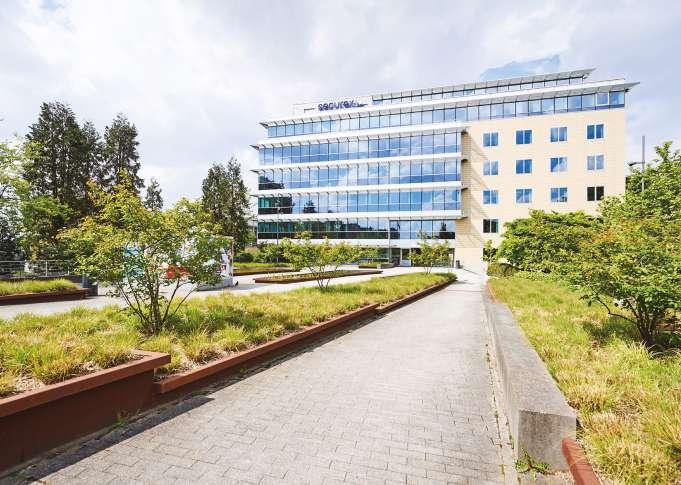
CLEPA recently welcomed the Commission’s update to the Net-Zero Industry Act (NZIA), which recognises hydrogen storage systems, electric propulsion, and other hydrogen technologies as net-zero technologies. Meeting the EU’s ambitious transition goals will require such initiatives under a clear regulatory framework that encourages more free innovation for future mobility.
Furthermore, what is key for climate regulations is the consideration of all emissions associated with a vehicle’s production and use - a ‘lifecycle approach’, that fairly represents ecological impact. Suppliers are increasingly designing technologies for maximising the efficiency of resources and energy use related to a vehicle’s life cycle, which will play a pivotal role for achieving more sustainable mobility.
What’s needed for suppliers in the EU’s digital transition?
The software-defined vehicle, alongside electrification, is a primary catalyst for industry transformation, offering exciting opportunities. To position the EU as a digital mobility leader, key regulations are essential, encompassing digital infrastructure, communication standards, type approval for autonomous vehicles, virtual testing, cybersecurity, and an AI framework. European R&I funding plays a crucial role in advancing these technologies. A noteworthy regulatory focus on in-vehicle data access rules, if appropriately handled, can unlock tremendous untapped potential for new consumer services.

Battery testing facilities. Self-driving cars. Alternative fuels. Electric powertrains. Smart navigation and dynamic road signs. Or cars made from ultralight or even natural materials. The mobility solutions of the future are developed here, at Automotive Campus: the national and international hotspot when it comes to smart and green mobility.
It is the preferred location for companies and knowledge institutes that have a worldwide impact. Here, they can easily connect through the open community: sharing knowledge and interesting collaborations stimulate innovation. Thanks to the available high-tech test labs and research (test) facilities – from virtual reality to real-life testing on the A270 motorway – innovative ideas can be turned into smart mobility solutions in a fast and cost-efficient manner.
For organizations, the decision to locate on Automotive Campus goes far beyond just a land position or empty premises added value of an eco-system. The businesses and knowledge institutes at the Automotive Campus all have the same goal in mind: developing new smart mobility and green mobility technologies and applications, and successfully introducing these to the market. Automotive Campus not only offers them the facilities they need, but also provides a place to connect with like-minded businesses and people. The added value is proven every day. All the innovations seen
on and around the roads these days were developed here. In most cases, these products are the result of several companies and knowledge institutes working together. The added value of an ecosystem: an important consideration is the preconditions that a campus offers.
These days, the campus is now home for over 1500 people – including around 600 students – who are working on the mobility solutions of the future. When it comes to education, Automotive Campus is unique. No other campus in The Netherlands has both global businesses and hyper-modern test facilities as well as educational institutes on location. All educational levels are represented and add great value to the ecosystem and their residents. From the M.A.C. (MBO Automotive Centre)


and the ACE (Automotive Centre of Expertise) to the Fontys University of Applied Sciences, Summa College, and automotive student teams from the Eindhoven University of Technology.
The campus is also hometown for partner RAI Automotive Industry NL: contact with interesting parties is easily established as a result. RAI Automotive Industry NL, one of the 9 sections of RAI Vereniging, encourages effective cooperation relations between companies in the automotive sector and governments, international sector organisations and companies in our high-tech region. Throughout the year, a variety of seminars, conferences,
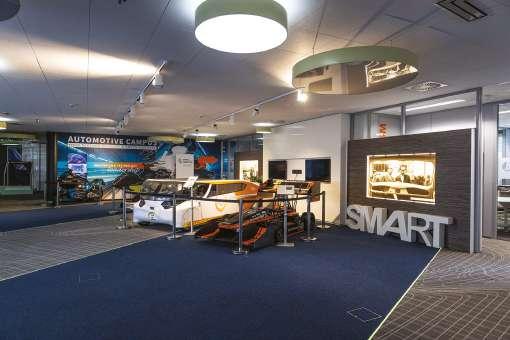
workshops, and networking events are organized in collaboration with them for campus residents and members of RAI Automotive Industry NL. These events provide opportunities to stay informed, network, and share knowledge with one another. This intense collaboration with RAI Automotive Industry NL is therefore crucial for our campus residents.
Ike Wouda, Community Manager at the campus, underscores that relevance: “RAI Automotive Industry NL is the representative of the Dutch Automotive Industry and for that reason alone a very important partner. Their role in co-defining the innovation programmes for the automotive industry in The Netherlands and beyond, is crucial to
us as an innovation-focused campus. They set the direction, the future, and we connect with them. Jointly organising content-focused meetings, sessions for sharing knowledge and being able to their international programmes and exhibition is so valuable for campus residents”.
Pieter Rahusen, Business Development Manager at Automotive Campus, provides a fitting example: “Sekisui, a Japanese global player, is experiencing rapid growth here as they enter and serve the European market.” Starting from the soft-landing flex concept, it has grown into its own office and is now located on the ground floor with a complete experience center where they develop innovative concepts for

the European automotive market. Their future goal is to develop a building on our campus and we provide the space and support for that too. Thanks to the coordinated efforts of RAI Automotive NL, together with our campus organisation, Sekisui is making good progress in their positioning in Europe. Connecting national and international networks, such as the BOM, Brainport and the NFIA, also plays a helpful role in this successful cooperation. And all this is making Sekisui an excellent ambassador for our international network. Their presence has helped us attract more Asian companies to our campus. A wonderful textbook example of how a campus should work; give and take to help each other move forward”.
Do you want to know more about the possibilities of settling on our campus grounds? Or want to hear more about organising your event in this inspiring environment?
Please contact us at +31 (0) 492 56 22 11 or automotivehouse@automotivecampus.com www.automotivecampus.com

batteries include their use in stationary energy storage systems, which can help balance grid demand and store renewable energy. This approach not only maximizes the utility of batteries but also reduces waste and supports the circular economy.
As the world grapples with climate change and environmental degradation, the Dutch automotive industry is pioneering efforts in sustainable mobility. Through innovative technologies, strategic collaborations, and a strong focus on reducing emissions, The Netherlands is setting new standards for climateneutral transportation.

Central to this mission is RAI Automotive Industry NL, which plays a crucial role in fostering industry collaboration, innovation, and sustainable practices. This article explores the current landscape, advancements, and future directions in sustainable mobility within the Dutch automotive sector.
The automotive industry faces significant challenges to achieve climate-neutral mobility by 2050. To enhance battery performance and longevity, researchers are exploring new materials and innovative designs. Solidstate batteries, for example, promise higher energy densities and improved
safety compared to traditional lithiumion batteries. These advancements could significantly extend the driving range and reduce charging times, further encouraging the adoption of electric vehicles.
In addition to vehicle energy systems, the reuse of batteries for electric storage and hydrogen storage using molecular techniques is being explored. Second-life applications for EV
The continuous improvement of battery technology and the expansion of charging infrastructure are critical components in the transition to a sustainable and efficient mobility system. By addressing the challenges of range, charging convenience, and battery reuse, the Dutch automotive industry is paving the way for a greener future in transportation.
The transition to sustainable mobility requires support from the energy sector, particularly through the availability of renewable energy carriers. The industry recognizes that there is no single path to achieving these goals. Instead, a combination of renewable electricity, renewable hydrogen, and e-fuels (power-to-X) is considered essential for meeting future decarbonization targets cost-effectively.
As the Dutch automotive industry strives to achieve climate-neutral mobility, the focus has shifted towards identifying and utilizing the most effective energy carriers. The integration of these carriers is essential to meet the ambitious emission reduction targets and support the development of a robust and sustainable transportation ecosystem. Today, three primary energy carriers are central to the Dutch automotive industry’s sustainable mobility strategy:
1. Renewable Electricity: This is the most promising energy carrier for two-wheelers, light electric vehicles (LEVs), and passenger cars. Battery electric vehicles (BEVs) are increasingly prevalent, driven by advancements in battery technology that enhance range and efficiency. In urban distribution and smaller
trucks and buses, BEVs offer significant environmental benefits by reducing local emissions. Fuel cell electric vehicles (FCEVs) are also expected to play a significant role, particularly in areas where longer ranges and quicker refueling are required. The infrastructure for renewable electricity, including charging stations, is rapidly expanding to support the growing number of electric vehicles on the road.
2. Renewable Hydrogen: Hydrogen fuel cells and/or hydrogen engines are critical for applications where batteries are less practical, such as long-haul transport and heavyduty trucks. Hydrogen offers a high energy density and quick refueling times, making it suitable for vehicles that require long-range capabilities and minimal downtime. Hydrogen internal combustion engines (H2ICE), in particular, provide a viable solution for these sectors, offering the necessary power and range while producing minimal emissions at the point of use with a competitive TCO.
“Hydrogen combustion engines are essential for decarbonizing heavy-duty transport, particularly where battery solutions may not be sufficient,” says Angelique Berden,
Marketing Director at Westport Fuel Systems, an alternative fuel technology provider. “The ability to leverage new or existing internal combustion engine infrastructure while drastically reducing emissions offers a fast and practical pathway to decarbonization.” The development of hydrogen infrastructure, including production and refueling stations, is essential to support the widespread adoption of hydrogen-powered vehicles.
3. E-fuels (Power-to-X): These synthetic fuels, produced using renewable energy, are essential for specific use cases where electrification or hydrogen is not feasible. E-fuels can be used in existing internal combustion engines with minimal modifications, providing a practical solution for reducing emissions from the current vehicle fleet. They offer the flexibility of being compatible with existing fuel distribution infrastructure, making them a valuable component in the transition to sustainable mobility. E-fuels are particularly beneficial for applications such as aviation and maritime transport, where electrification poses significant technical challenges.

Advancements in battery technology are crucial to supporting the widespread adoption of electric vehicles. Current developments focus on extending the range of batteries to cover distances of 300 to 800 kilometers, making electric vehicles more practical for a broader range of applications, from daily commuting to long-haul transportation.
To enhance battery performance and longevity, researchers are exploring new materials and innovative designs. Solidstate batteries, for example, promise higher energy densities and improved safety compared to traditional lithiumion batteries. These advancements could significantly extend the driving range and reduce charging times, further encouraging the adoption of electric vehicles.
Jeroen Bleker, Co-founder of offhighway equipment battery solutions company Eleo, indicates his company is putting high efforts in maximizing the useful life of batteries through for example thermal innovations, before second use and recycling methods are applied.
“Next to an optimized lifetime,” Bleker adds, “it is critical to consider in design and logistic processes how batteries, after a potential second use case, through recycling finally get their valuable materials recirculated within the industry. This is vital for building a truly sustainable energy ecosystem that supports the rapid electrification of transportation and construction.”
In addition to vehicle energy systems, the reuse of batteries for electric storage and hydrogen storage using molecular techniques is being explored. Second-life applications for EV batteries include their use in stationary energy storage systems, which can help balance grid demand and store renewable energy. This approach not only maximizes the utility of batteries but also reduces waste and supports the circular economy.
The continuous improvement of battery technology and the expansion of charging infrastructure are critical components in the transition to a sustainable and efficient mobility system. By addressing the challenges of range, charging convenience, and battery reuse, the Dutch automotive industry is paving the way for a greener future in transportation.
RAI Automotive Industry NL supports its members through various initiatives, including technology workshops, information sharing, and facilitating international cooperation. By connecting industry stakeholders, knowledge institutions, and government agencies, the association helps advance the innovative and economic position of the Dutch automotive industry.
Key projects under RAI Automotive Industry NL’s sustainable mobility initiatives include:
• Green Transport Delta –Hydrogen: This project focuses on developing hydrogen as a viable energy carrier for the transportation sector. It includes research and development of hydrogen production, storage, and utilization technologies.
• Green Transport Delta –Electrification: This initiative aims to enhance the electrification of the transportation sector, focusing on improving battery technologies and expanding the electric vehicle infrastructure.
• Battery Competence Cluster – NL: This project is dedicated to advancing battery technology, which is crucial for the future of electric vehicles. It involves research into new battery materials, manufacturing processes, and recycling methods.
A notable aspect of the Dutch approach to sustainable mobility is its collaboration with leading automotive countries in Europe, such as Germany, France, and Sweden. The Sustainable Mobility Cooperation project between The Netherlands and Germany, for example, aims to modernize and make the mobility infrastructure of both countries more sustainable. This bilateral initiative facilitates the exchange of views and experiences at the European level, fostering cross-border solutions and business developments in the mobility sector. By working together, both nations aim to leverage their strengths and address common challenges in the transition to sustainable mobility.
The Public-Private-Partnership (PPP) programs, initiated by the Dutch Ministry of Foreign Affairs in collaboration with the Ministries of Economic Affairs and Infrastructure and Water Management, underscore such cooperations with other European countries These aim to transition the mobility system through close partnerships with clusters and private stakeholders from both countries. Similarly, The Netherlands also has a partnership with the United States, particularly the Michigan region of the US. Such a partnership is essential for driving innovation and ensuring that new technologies and practices are implemented effectively in all participating countries.
Essentially, one key objective of the European cooperations is to develop and implement cross-border mobility solutions that can be scaled up across Europe. This includes integrating charging infrastructure for electric vehicles, developing hydrogen refueling stations, and deploying smart mobility solutions that enhance connectivity and efficiency. By sharing knowledge and best practices, The Netherlands and its European counterparts aim to create a seamless and sustainable mobility network that benefits the entire region.
An important aspect of the collaborations is the focus on research and development. Joint R&D projects are being undertaken to explore new technologies and innovative solutions that can address the specific mobility needs of the countries. These projects often involve universities, research institutions, and private companies working together to push the boundaries of what is possible in sustainable mobility.
In addition to technological collaboration, the partnership also focuses on developing policies and regulatory frameworks that support sustainable mobility. By aligning their legislative efforts, the partnering countries can create a more conducive environment for the adoption of new technologies and practices. This harmonization of policies is crucial for ensuring that cross-border mobility solutions are feasible and effective.
Despite significant progress, the Dutch automotive industry faces several challenges in achieving sustainable mobility. One of the primary obstacles is the availability and cost of renewable energy carriers. Ensuring a stable and affordable supply of renewable electricity, hydrogen, and e-fuels is critical to the industry’s success. This requires substantial investment in renewable energy production and distribution infrastructure, which can be both costly and time-consuming.
Another major challenge is the development and deployment of charging and refuelling infrastructure. As the number of electric and hydrogen vehicles continues to grow, there is an increasing need for a comprehensive network of charging and refuelling stations. Public and private sector investments are essential to build this infrastructure. However, coordinating these investments and ensuring they are distributed evenly across urban and rural areas can be complex.
“Raw materials are scarce, and it takes a lot of energy to extract them,” explains Freek de Bruijn, program manager of design and materials at RAI Automotive Industry NL. This scarcity highlights the need for efficient recycling and reuse of materials to minimize environmental impact and reduce dependency on finite resources. Initiatives focused on retracting materials from existing vehicles are crucial in addressing this challenge and promoting a circular economy.
Despite these challenges, there are significant opportunities for growth and innovation in sustainable mobility. The advancement of battery technology, for instance, opens new possibilities for electric vehicles, making them more efficient and accessible. Improvements in battery range and charging times can drive wider adoption of electric vehicles, reducing emissions and reliance on fossil fuels.
Hydrogen technology also presents promising opportunities, particularly for heavy-duty and long-haul transport. Hydrogen fuel cells offer a high energy density and quick refuelling times, making them suitable for applications where batteries are less practical. Continued research and development in hydrogen production and storage can further enhance its viability as a clean energy carrier.
The future of sustainable mobility in the Dutch automotive industry lies in continuous innovation and collaboration, driven by a shared commitment to environmental stewardship and technological advancement. As global pressures to reduce emissions intensify, the industry is poised to play a pivotal role in creating a greener, more efficient transportation system. Key areas of focus include:
• Advancing Battery Technology: Research into new materials, manufacturing processes, and recycling methods will enhance battery performance and sustainability. The Battery Competence Cluster - NL is at the
forefront of these efforts, building a better battery ecosystem.
• Hydrogen Development: Projects like Green Transport Delta – Hydrogen are critical for establishing hydrogen as a mainstream energy carrier. This includes improving hydrogen production, storage, and distribution technologies.
• E-fuels: Developing and deploying e-fuels will provide a flexible and sustainable energy source for applications where electrification or hydrogen is not feasible.
• Infrastructure Expansion: Building a robust network of charging and refueling stations is essential to support the growing number of electric and hydrogen vehicles. Public-private partnerships will play a crucial role in this effort.
• Policy and Regulation: Strong governmental support and clear policy frameworks are necessary to drive the adoption of sustainable mobility technologies. This includes incentives for renewable energy use, infrastructure development, and vehicle adoption.
The Dutch automotive industry is at the forefront of the global transition to sustainable mobility. Through innovative projects, strategic collaborations, and a strong commitment to reducing emissions, The Netherlands is setting new benchmarks for climate-neutral transportation. RAI Automotive Industry NL plays a pivotal role in this journey, fostering industry collaboration and supporting technological advancements. As the industry continues to evolve, the Dutch automotive sector is poised to lead the way towards a sustainable and efficient future in mobility.
When it comes to innovations for automated driving, V-tron often plays a role. Not because we are so eager to lift our finger, but because we are unique in the way we facilitate innovation in mobility with connectivity and practical use cases. We believe that autonomous driving will become a reality in the (very?) long term, but until then, automated mobility will play the leading role. As OES, we focus on transition technology to accelerate the future through the aftermarket.
V-tron has focused on the deployment of telemetric technology in the mobility sector since 2007. Our three pillars support organizations in and around the sector with products, services, and projects. Communication of digital data always plays the main role in this. Our product line supports fleets in safe, efficient, and effective use. We offer governments and road authorities services to improve digital infrastructure in their areas of operation. Our projects continuously pave new roads for innovative vehicle automation.
Since early 2024, V-tron has also been part of the Digital Infrastructure for Future-proof Mobility (DITM) consortium. In this we are working out various use cases for public and enabling them on public roads. Within this Brainport Eindhoven project, we add the teleoperation functionality for the VDL-buses, whereby control at the marshalling yard is taken over by a ‘driver-in-office’, who puts buses in place from behind screens. One driver can thus drive dozens of buses through the car wash, drive it to the charge stations and, put them away or get them ready for use. In DITM, we also focus on the further development of our ISAFIT and C-ITS services. Our aftermarket ISA-FIT system is already available on the market but is being enhanced in DITM by incorporating new data sources such as C-ITS communication.
ISA-FIT is an intelligent system that constantly monitors vehicle speed,
ensuring drivers do not unintentionally exceed speed limits. This system can be retrofitted to any vehicle. It primarily utilizes the detection of traffic signs and a provided national digital speed map as its main information sources to determine speed. In DITM, a third data source is introduced: Hybrid C-ITS communication. Within DITM, this third data source is equipped with Trust over both long-range and short-range data channels.
Previous projects, such as Concorda, ISA-FIT, ReVeAL and 5G Blueprint proved V-tron’s ability to deploy connectivity for localization, vehicle integration, vehicle automation, and remote control of driving tasks in the vehicle. In ongoing projects, such as FlexShield (BSI), Smartzone Buffer (DMI) and thus DITM, we will further develop these facilities.

In the market for over 30 years, TRIDEC develops and produces, independent from axle or trailer manufacturer, mechanical, hydraulic and electronic steering systems, as well as special wheel and axle suspensions. Since 2008, TRIDEC is part of JOSTWorld, which contributes to strong worldwide local representation, serving its customers optimally. Its proven reliability is demonstrated by over 80,000 systems delivered worldwide. TRIDEC employs over 200 people in The Netherlands (headquarters) and Portugal (production facility).
For many years, TRIDEC systems have been used in a large range of applications in diverse conditions and terrains. Previously inaccessible destinations, are now reached with larger loads. A reduction in the number of runs cuts costs significantly. Improving the maneuverability lowers fuel consumption and reduces tire wear. Most important, TRIDEC systems offer total control and are the safest
cornering option. The custom-made systems are modular, offering a unique solution for any kind of trailer. The brand remains the market leader for steering systems and special wheel and axle suspension.
The industry is facing pressure for immediate action and solid solutions, due to demand for more efficient transport and growing legislation around safety and environment. This represents for TRIDEC a great opportunity to help its customers.
As an example of environmental orientated solution, TRIDEC is known for its independent wheel suspension systems. This type of suspension is characterized by the absence of a mechanical connection between the left and right wheel hub, allowing the space between them to put to good use: storing cargo, creating a sustainable transport concept – The Double Deck Trailer. It significantly increases the cargo volume, up to 60%, implying
two double-deck trailers carry more than three conventional trailers. The double-deck trailer keep the permitted standard dimensions adding to the cost saving and environmental advantage, allowing transport in large urban centers, with narrow streets and difficult access.
TRIDEC is focused on future of Smart Mobility as the investment in innovative ideas has been for years a priority. While the world is shifting to a more electric approach, and cybersecurity is still the biggest concern of the authorities and customers, TRIDEC is already focused on the next steps.
In this challenging context for the industry, steering systems can in fact be an important part of the solution and contribute to the new shape of Smart Mobility worldwide. With TRIDEC knowledge and experience on steering, the customers have a better shot to thrive and find optimal solutions that will last in the future.
V-tron BV, info@v-tron.eu,
+31 570 745 430
Zweedsestraat 8A-22
7418BC Deventer, Nederland
Automotive Campus 30
5708JZ Helmond
Rathausufer 22
40213 Düsseldorf, Deutschland
Konrad Zuse Platz 8
81829 München, Deutschland
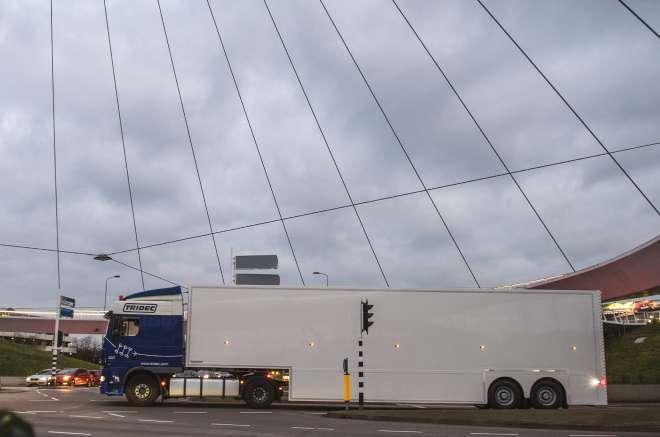
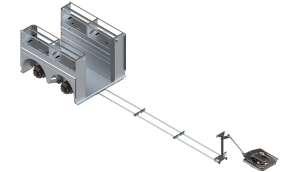

As Europe accelerates its journey towards zero-emission areas, leading to a greener automotive landscape, the challenges in electrification stand at the forefront of innovation and transformation. When we think of cities, we envision a diverse array of vehicles, including buses, distribution vans, trucks, reach trucks, and especially in big cities, various electric people movers like bikes and scooters.
In this article, we delve into the most important trends, primary challenges, and the leading role of EMOSS Mobile Systems in this fast-changing electrification landscape.
Regulations: Ambitious emission targets set by governments are driving automakers towards electrification.
Measures such as zero-emission zones, subsidies, and incentives play a pivotal role in shaping consumer and industrial behaviour and market dynamics. Currently available solutions are limited to standard OEM vehicles such as passenger cars, 12-meter buses, and trucks. The same regulations apply to special vehicles such as ladder trucks used for relocations, railway maintenance trucks, or vacuum trucks. There are no exceptions for this type of rolling equipment.
Technological Advancements: Rapid advancements in battery technology, coupled with innovations in electric drivetrains and vehicle platforms, are expanding the capabilities and applications of electric drives across various vehicles. From increased range to enhanced charging efficiency, these

innovations are driving the evolution of electric mobility. The advancing technologies are bridging the gap between the specific platform needs and their application in terms of power, reliability, and safety.
Embracing a modular approach is essential for scalability and efficiencies in electric vehicle production. Modular architecture is pushing the standard in the deployment of electrification, challenging suppliers to meet new standards, resulting in electric solutions becoming increasingly economically attractive. This will support the development and reliability of nonstandard electric vehicles, driven by higher standards in the market for component suppliers and common regulations on automotive safety levels.

All-purpose electric powertrains
EMOSS Mobile Systems is a Dutch manufacturing company that specializes in the electrification of on-road and off-road vehicles, ranging from light to heavy-duty vehicles. With over 20 years of experience, EMOSS is a market leader in electrifying vehicles and has delivered more than 800 vehicles during this time.
The product range includes trucks and dedicated special-purpose vehicles such as street sweepers, waste collection vehicles, construction machines, and buses. EMOSS provides a total solution for customers, handling component selection, integration, testing, and functional safety and cybersecurity releases.
EMOSS also offers full vehicle conversions, including on-road homologation, for virtually any truck or vehicle (new or second-hand) in Europe, including hook-arm trucks, buses, tractors, and garbage trucks. This is how EMOSS started and gained expertise in various types of trucks.
EMOSS gives vehicles a second life and helps its customers achieving their circular economy goals while saving on the investment in a new truck, all within a short and interesting lead time.
Our goal is to support our customers with zero-emission solutions and contribute to a cleaner world with a team of bright minds that understand customer needs.
Since 2020, EMOSS has been a 100% subsidiary of Precision Camshaft India (PCL). Precision Camshaft is one of the largest suppliers (>20% market share) to OEMs in the car industry. PCL is investing in the R&D of EMOSS to bring EMOSS technology to a higher standard and align with the quality norms and standards used in automotive industry.
• EMOSS powers big brands without people knowing it.
• EMOSS was the first company to build a 50-ton semi-trailer EV-tractor in series.
• EMOSS had a 4% market share worldwide in EV trucks.
• EMOSS exclusively uses LFP batteries to meet safety demands.
• EMOSS stands for Electric Mobility One-Stop Shopping.

Emoss Mobile Systems Visserijweg 2 4906 CJ Oosterhout
The Netherlands
+31 (0) 162 420 005 info@emoss.nl www.emoss.nl

At DLS we have over 55 years of experience in drive line solutions for heavy duty mobility and machinery. Traditionally we have been a reliable partner for the design and delivery of high performance, efficient, and high quality powertrain products. Nowadays, we also provide solutions for green and smart mobility to anticipate and move along with market changes.
A healthy, livable and sustainable world becomes more and more important. As a result, emission requirements become more strict, both in terms of nitrogen deposition, soot emissions and greenhouse gases, as well as in general environmental standards and working conditions. Our green mobility solutions for better conditions for people, climate and environment help to make drive systems and stationary equipment more sustainable. They are suitable for both new (OEM) drive systems and
drive systems of existing vehicles and machines (retrofit). Our green mobility solutions include emission technology, fuel cells and ePTOs.
Automation and computerization are indispensable in (heavy duty) transport and machines. In our smart mobility solutions we use modern data communication systems to make vehicle information available in real time. You can see information about the

drive system as well as other vehicle information. This way you always have up-to-date data of your vehicle(s) at hand, you can easily generate management information and predictive maintenance, and based on this make decisions that improve your business operations. This ensures that you are in control of your fleet, always and everywhere.
Learn more about our solutions or contact us via the DLS website: www.dlsbv.nl

When considering outdoor applications, autonomous mobility is developed for both industrial areas and public roads. In most cases specifically with one of those markets in mind. Although technological solutions can be similar for both fields, regulations, and therefore safety requirements as a crucial aspect, are different.
Pushing cross-market autonomous innovations, manufacturers might encounter a switch in regulatory boundaries impacting the original design assumptions of the core product. Imagine autonomous heavy duty container carriers driving in city like environments. Perfectly fine in the original controlled environment, a huge risk in the new operational driving domain.
Identifying efficient approaches in safety cases and managing those projects in combined applications requires knowledge and experience in automotive legislation and industrial safety. Nowadays both worlds start to merge, leading to remarkable opportunities to reach conformity. While being complex, it is offering practical and costeffective solutions. MST Groep brings more than a decade of experience in solving this puzzle.
Contr buting to solve technical, regulatory and organisat onal challenges faced by today s heavy transport and mobil ty innovators and OEM's. Mobil ty, which is increas ngly autonomous, safe and sustainable. On-road, on-premises and off-road.
Product management
Safety and homologation
System design and integration
Validation

When talking about autonomous applications, manufacturers face challenges beyond their core competences. MST Groep offers strategic services such that manufacturers can focus on their core strength and added value. MST accelerates innovation and reduces business risk, getting things done. Reach out to learn how.
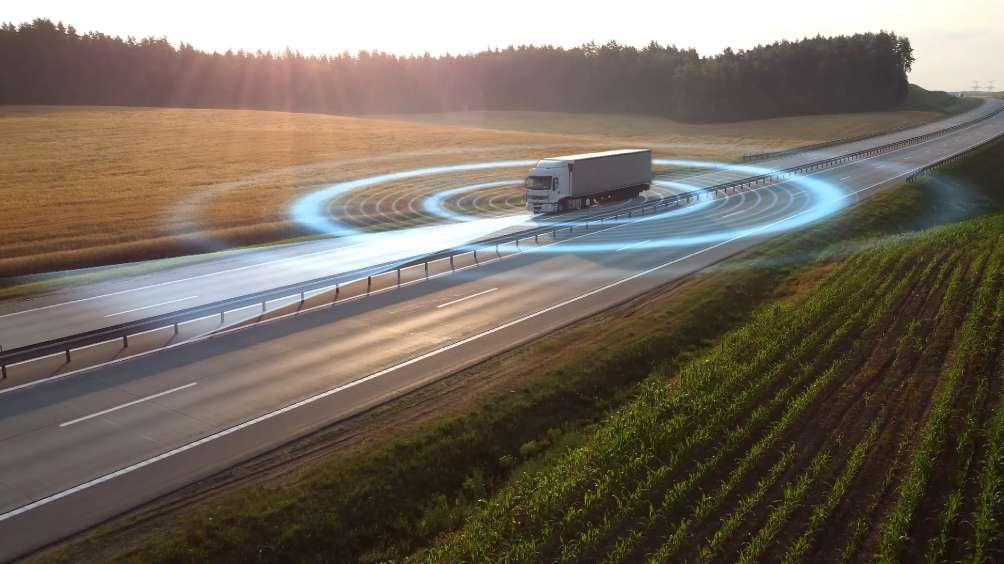
Meliskerke - Helmond - Oradea
www.mstgroep.nl nfo@mstgroep.nl
Harald Seidel, DAF President:
With a history stretching back almost 100 years, DAF is one of the key companies within the Dutch automotive industry. The number 1 in Research and Development spend in its sector, DAF has grown into a leading European truck manufacturer and is a shining example of how successful the manufacturing industry in The Netherlands can be.
‘Innovation, quality and continuous improvement are among the keys to our success,’ states DAF President, Harald Seidel.
Hub van Doorne started his small blacksmith company in the city centre of Eindhoven back in 1928. In the early 1930s, after his brother Wim had joined the small-sized enterprise, the company began producing semi-trailers and the name was changed to Van Doorne’s Aanhangwagen Fabriek before becoming Van Doorne’s Automobiel Fabriek in 1949 when the first commercial vehicle left the production plant. Today, DAF is a leading hightech company exporting over 90% of its output to more than 70 countries worldwide and employing over 10,000 people in its organisation throughout Europe.
a complete city
Going through the main entrance of the company’s headquarters in Brainport Eindhoven is like entering a complete city. The site covers an area the size of 100 soccer fields and features stateof-the-art product development and production facilities, including a brand new Electric Truck Assembly plant and the unique DAF Digital Technology Center, that clearly illustrate DAF’s main
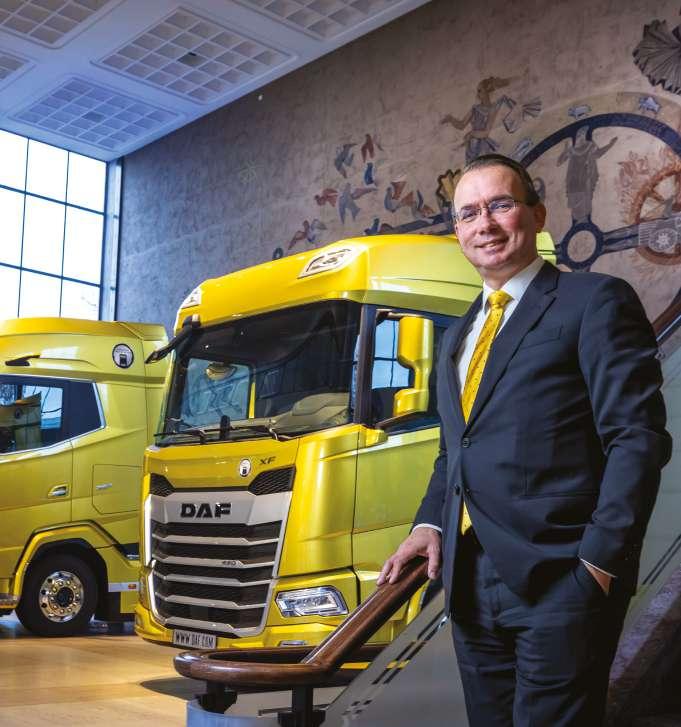
focus areas. ‘The world is changing rapidly and we are constantly on the move to stay ahead of the game,’ says Harald Seidel. ‘Vehicle connectivity, whereby trucks are connected overthe-air with their homebase to allow transport operators to constantly monitor the performance of their fleet, will become even more important. At the same time, we are already delivering and developing a range of new technologies on the path to sustainable road transport. Our latest fully battery electric New Generation DAF trucks are leading the way with zero-emission ranges of no less than 500 kilometres.’
and fuel efficiency. Thanks to the lower window belt lines, a new standard in direct vision and safety was set as well, while cab space and comfort now represent the best a driver can get. And that is important in times when our customers lack sufficient people to drive their trucks. Whoever has the drivers gets the transport job. Whoever has the best trucks gets the drivers.”
DAF has grown from small beginnings into a premier commercial vehicle manufacturer in Europe that is
spreading its wings globally. A genuine success story, in other words. Are there any challenges left? ‘Oh yes, of course,’ Harald Seidel replies without a moment’s hesitation. ‘First of all, what we need as an industry is consistent legislation throughout Europe. Deviations and exceptions in individual member states are hard to develop on, while at the same time consistency also has to ensure a level playing field for all manufacturers throughout the EU. Secondly, one has to realise that all trucks are different and they all have their specific applications. This means, especially in terms of a sustainable future, that there is simply no one-size-fits-all solution. So what we need is technology neutrality. Let
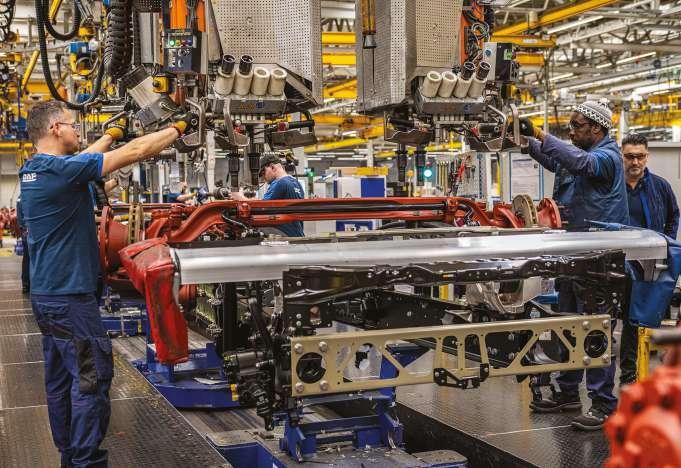
““Leading the way” is also applicable to the entire range of medium and heavy duty trucks that DAF has launched over the years and which resulted in the prestigious title of ‘International Truck of the Year’ two times in a row. ‘We are the first truck manufacturer to have introduced a completely new vehicle design that meets the new EU masses and dimensions regulations,’ says the DAF President. ‘Having more freedom in vehicle length allowed us to come up with industry-leading aerodynamics
‘The world is changing rapidly and we are constantly on the move to be ahead of the game’
‘You don’t have to be an expert to conclude that we have to act now’
the industry and the market figure out what the best technological solution is for which application instead of prescribing specific techniques. When decarbonising we leave no stone unturned and are offering or exploring the full suite of options: battery electric, hybrid, fuel cell hydrogen, the hydrogen engine – they are all within our reach.”
Harald Seidel continues: ‘The last thing I would like to mention, as a challenge we need to meet, is the shortage of electricity and a sufficient electricity grid. In Europe, we are committed to a 45% reduction in CO2 for commercial vehicles by 2030. This will translate into roughly 400,000 zero-emission trucks by then, either battery electric or hydrogen. To satisfy this additional green energy demand, we will need a charging network of 400,000 depot chargers, around 50,000 public chargers all across Europe and 2,500 hydrogen refuelling stations. You don’t have to be an expert to conclude that we are lagging behind and that we have to act now, together as a society, so that when our children or their children meet in 2040 they will look back and proudly ask each other: how did you manage to do all that? And DAF will have proudly contributed to this, by providing the best sustainable trucks and transport solutions. By continuously focusing on our customers and delivering the best quality, I am convinced we have further growth and a successful future ahead of us.”


Welcome to the RAI Association (RAI Vereniging) Word Search Puzzle! The RAI Association is at the heart of innovation and progress in the mobility and automotive industry in The Netherlands. This puzzle is designed to help you explore the key elements that make RAI Vereniging a leader in shaping the future of transportation.
• Find and circle each of the words hidden in the grid. Words can be arranged horizontally, vertically, or diagonally, and can be read forwards or backwards.
• Check the word list for all the terms related to the RAI Association and the broader mobility industry that you need to find.
• Enjoy the challenge and gain insights into the advancements and initiatives driven by the RAI Association!


The Dutch automotive industry is evolving at an unprecedented pace, driven by digitalization and advanced technologies redefining manufacturing processes and competitive dynamics. Given the challenge of high labor costs and the industry’s strong emphasis on innovation, The Netherlands is leveraging cutting-edge technologies to maintain its position as a major player in the global automotive market.
This transformation is not just about keeping up with global trends but also about setting new standards in manufacturing efficiency and sustainability to ensure circularity and pave the way towards climate neutrality. At the core of this transformation is RAI Automotive Industry NL, the leading authority in the Dutch automotive manufacturing and supply chain industry. With a focus on global automotive and mobility solutions, RAI Automotive Industry helps accelerate innovation and education and brings together a network of companies and industry leaders to maintain The Netherlands’ status as “one of the most innovative countries in the world.”

Digitalization has enabled the Dutch automotive industry to overcome the challenges posed by high labor costs. Technologies such as digital twins, automation, Artificial Intelligence (AI), augmented reality (AR), and virtual reality (VR) are integral to these systems, enabling high efficiency and reduced labor costs. Digital twins, for instance, allow manufacturers to create virtual replicas of physical assets, processes, and systems. This technology helps optimize production lines, predict maintenance needs, and improve overall operational efficiency.
In a conversation with Jean Pierre Heijster, section manager at RAI Association and responsible for Smart and Sustainable Manufacturing and an automotive industry expert, he discussed how the Dutch automotive industry is leveraging digitalization to enhance its manufacturing processes. “The Netherlands is quite an expensive country in terms of labor costs,” Heijster notes. “Yet, we are still a relatively big manufacturing country. This is only possible with our highly digitalized production system.”
Embracing advanced digital technologies is at the core of the Dutch automotive industry’s evolution. The integration of AI, robotics, AR, and VR in production has been a game-changer. These technologies facilitate a highly automated, smart manufacturing environment that offsets the high labor costs and enhances productivity. Heijster explains that these advancements are crucial for The Netherlands to remain competitive, especially in producing complex systems with high-mix, lowvolume outputs.
Robotics and AI are particularly significant in this context. Robotics enhances precision and speed in
manufacturing processes, while AI provides the capability to analyze vast amounts of data to improve decisionmaking and efficiency. For example, AI-driven predictive maintenance can foresee potential equipment failures before they occur, reducing downtime and maintenance costs.
This competitive edge is particularly evident in adopting additive manufacturing (AM). While not adopted for the high-volume production of commodity parts, AM is revolutionizing the production of high-complexity, low-volume components. “We can see its use with metal printing and plastic printing for both automotive parts and tools,” says Heijster. “This enables 3D-printed parts to have higher quality in terms of their materials and material properties.”
Additive manufacturing (3D printing) has been a part of the Dutch automotive industry’s toolkit for decades, primarily in prototyping. However, its role is expanding significantly. AM allows for the creation of complex geometries that would be impossible or prohibitively expensive to achieve with traditional manufacturing methods. This is particularly useful for producing bespoke parts for high-end or specialized vehicles.
With the growing demand for more complex and personalized parts, shortening production cycles, and sustainability becoming more critical than ever, traditional supply chains face significant challenges. In essence,
industry production demands are intensifying. Lately, more companies have adopted AM for actual production rather than just prototyping. This shift is driven by the need for greater customization and the ability to produce parts on demand, reducing the need for large inventories.
Particularly in high-mix, low-volume (HMLV) production, AM offers unparalleled flexibility and efficiency. HMLV manufacturing involves creating a wide range of products in small quantities. This approach is typically used to produce unique and complex items that meet specific quality standards. For instance, luxury car manufacturers are increasingly using AM to produce customized interior components and intricate engine parts.
The implications of AM extend beyond
manufacturing. It also plays a critical role in the maintenance and repair sector. With the ability to produce parts quickly and on-site, AM reduces vehicle downtime and dependence on large, centralized production facilities. This decentralization of production capabilities can lead to more resilient supply chains, a crucial advantage in the face of global disruptions.
The evolution of AM technology continues to break new ground. Lightweighting is a significant trend in the automotive industry, particularly with the rise of electric vehicles that require lighter structures for improved efficiency. AM enables the creation of stronger and lighter parts than traditional methods, which is crucial for both highperformance (e.g., race cars and luxury models) and heavy-duty vehicles (e.g., trucks). These vehicles often require

specialized, customized parts that can benefit from the unique advantages of AM, such as producing complex geometries that enhance performance while reducing weight
The Dutch automotive industry’s commitment to sustainability and circularity is significantly bolstered by AM. By enabling localized production, AM reduces the emissions associated with transporting parts over long distances. This localization cuts down on transportation emissions and allows for more efficient use of materials, thereby minimizing waste and promoting a more sustainable production process. The application of AM in producing low-volume, high-value parts, especially for electric and luxury vehicles, highlights The Netherlands’ strategy of integrating advanced technology with environmental goals.
This plays a significant role in maintaining the Dutch automotive industry’s competitive edge. The synergy between AM and other digital technologies, such as AI and robotics, enhances the capabilities of smart manufacturing systems. This integration improves efficiency and productivity and supports the industry’s sustainability and climate neutrality goals.
The Dutch automotive industry’s commitment to sustainability is evident in its robust recycling and remanufacturing practices. Heijster highlights that at least 98% of a car’s parts are recycled in The Netherlands, placing the country at the forefront of automotive sustainability in Europe and possibly the world. This high recycling rate is a testament to the industry’s dedication to reducing its environmental footprint.
Applying the principles of the Six

remanufacture, recycle and recover), the industry has long embraced the reuse of automotive parts. “Remanufacturing was prevalent in the ’50s, the ’60s, and the beginning of the ’70s. Every single car manufacturer had a remanufacturing department for gearboxes, alternators, motors, steering housing, water pumps, and so on,” explains Heijster. “From the mid-’70s until about five-ten years ago, parts were produced with low complexity and high volume and made in relatively low-cost countries.”
With the industry’s current tendency towards circularity, we will see new ways of bringing parts back into the loop. This approach is being revitalized by the EU’s new legislation and circular economy action plan, which encourage remanufacturing and circularity. In fact, a lot of remanufacturing currently takes place in The Netherlands, especially powertrain parts, where many companies remanufacture such parts in highly automated systems. DAF Trucks, for example, has a dedicated remanufacturing department poised for growth in the coming years to ensure not only reusable products and parts but also the tools and equipment necessary for remanufacturing.
While remanufacturing helps conserve materials and energy, it also offers a cost-effective alternative to new parts. The Dutch automotive industry is leveraging advanced technologies to enhance remanufacturing processes. Automated inspection and refurbishment systems ensure that remanufactured parts meet stringent quality standards, while digital tracking systems help maintain a clear record of each part’s history. The Netherlands has quite a good number of great companies and players who are building towards a more sustainable automotive industry by leveraging sustainable practices and smart manufacturing.
One such player is VDL, a member of RAI Association. VDL Group is at the forefront of smart manufacturing in the Dutch automotive sector, leveraging advanced technologies to enhance production processes. Mr. Henri Koolen, Executive Vice President at VDL, emphasizes the importance of integrating automation and digitalization into manufacturing. “At VDL, we focus on creating highly flexible production lines that can quickly adapt to changing market demands,” Koolen states.
One notable example is VDL’s implementation of a fully automated assembly line for electric vehicle components, which significantly reduces production time while maintaining high-quality standards. “This level of efficiency is crucial for The Netherlands to remain competitive globally,” he adds.
Reflecting on the current state of the Dutch automotive industry, Koolen notes, “The industry is undergoing a transformative shift towards sustainability and innovation, driven by digital technologies.” Looking ahead, he predicts, “In the next 5-10 years, we will see a substantial increase in smart manufacturing practices, with AI and robotics becoming integral to production. This evolution will not only enhance operational efficiency but also support our sustainability goals.”
As the Dutch automotive industry continues to evolve, the integration of sustainability and smart manufacturing technologies becomes more central
to this transformation. This involves optimizing production methods and resources and leveraging cutting-edge technologies to forge positive contributions to societal and environmental challenges, such as carbon emission reduction. Not only does this forward-looking approach address the environmental challenges, but it also ensures that the industry remains competitive on a global scale.
The evolution of AM and the integration of digitalization technologies, such as AI, robotics, digital twins, and augmented reality (AR), will be core factors in revolutionizing the manufacturing processes within the Dutch automotive industry. These technologies enable the creation of smart manufacturing systems that enhance efficiency, reduce labor costs, and improve overall operational productivity.
From digital twins providing virtual replicas of physical assets to optimize production lines to AI-driven predictive maintenance foreseeing equipment failures, such technologies can help reduce downtime and maintenance
costs, thereby enhancing operational efficiency. Robotics are also particularly significant in this context. Robots can enhance precision and speed in manufacturing processes, while AI analyzes vast amounts of data to improve decision-making and efficiency. This integration of advanced technologies ensures that the Dutch automotive industry remains at the cutting edge of innovation, particularly in producing complex systems with highmix, low-volume outputs.
The Dutch automotive industry is poised to further integrate digitalization, smart manufacturing, and sustainability into its core operations in the coming years. By harnessing the power of data, Dutch automotive manufacturers can optimize every aspect of their operations, from design and production to maintenance and recycling. The emphasis on highcomplexity, low-volume production is likely to expand, driven by the demand for personalized automotive solutions. The continued evolution of remanufacturing and recycling practices will support the industry’s sustainability goals.

The synergy between AM and digital technologies, such as AI and robotics, enhances the capabilities of smart manufacturing systems and supports the industry’s goals of sustainability and climate neutrality. The Netherlands is well-positioned to lead this transformation, setting benchmarks for global automotive innovation. The commitment to circularity and climate neutrality ensures that the Dutch automotive industry remains a pioneer in combining advanced technology with sustainable practices, paving the way for a resilient and eco-friendly future.
The Netherlands’ embrace of digitalization and commitment to sustainability are key drivers of its competitive edge in the global market. It is also expanding its global footprint through international collaboration. By partnering with leading automotive hubs worldwide, Dutch companies are accessing new markets and technologies. These collaborations facilitate the exchange of knowledge and best practices, further enhancing the industry’s innovative capacity.
RAI Automotive Industry NL is at the forefront of Dutch automotive innovation, bringing together industry stakeholders to drive advancements in green mobility, smart mobility, manufacturing, materials, human capital, and international business development. Their initiatives focus on sustainable and intelligent solutions, leveraging cutting-edge materials and technologies to achieve zero emissions, reduce traffic congestion, and enhance road safety. By collaborating with government bodies, knowledge institutions, and international partners, RAI Automotive Industry NL aims to maintain The Netherlands’ leadership in global automotive innovation.
For more information, visit our website and become a member of RAI Automotive Industry NL.
The climate goals are clear. In 2050 we should have a sustainable society that will be CO2 neutral. The transition that is required for this involves a whole range of solutions in all industries. We are still facing enormous challenges. How do we tackle energy transition in a fair and affordable way and turn the industry green? Perhaps the car industry is changing the fastest and most of all. Investments are necessary, innovations are demanded, new competition appears and new markets are created. A volatile and hard to predict situation.
Despite the challenges we undoubtedly all experience, we acknowledge the enormous opportunities that exist for our (high-tech) manufacturing industry in The Netherlands. It is time to peel off our layers of identity and show what we are really capable of. To use our unique competences and the means we have to lead the transformation. To profit from our current business to finance the innovation journey and create our own sustainable future, for our industry and our own companies. Time for the Dutch manufacturing industry to step up and use its expertise, its people and its infrastructure to explore these new business fields and make our industry sustainable.
It is that innovation journey that we embarked on just under a decade ago. At the time, Bosch Transmission Technology in Tilburg, market leader in the development and production of pushbelts for continuously variable transmissions, was still growing. Even breaking sales and production records

year after year. Despite this highly successful business situation, we started investigating which technologies are needed in the future, which we can make with our specific engineering and manufacturing skills. We looked for the sweet spot to create our innovations: high quality thin metal products for sustainable technologies. Technologies which can only be created with specific material science and production processes, we already master. There were plenty of ideas and within a decade, we expanded the product portfolio to include new high-tech thin metal components such as e-stacks and air foil bearings. The e-stack, a stack of delicate electrical steel sheets for high-performance electric machines, forms the core of an electric motor and can be used in many segments and industries. The air foil bearing is, among other applications, part of an electric air compressor that reaches speeds of over 100,000 revolutions and can be used in, amongst others, fuel cell systems. Our series production of e-stacks and air foil bearings began at the end of 2023. In

Han-Hein Spit , Vice President Marketing, Sales and Project Management Bosch Transmission Technology B.V.
2025 the production of high-tech metal plates for fuel cells will start. Thanks to the knowledge that has been built up during the development of electrolyser stacks and through developing plates for fuel cells and electrolysers, we also became the development center for electrolyser development within Bosch. We believe that our strength is that we drive ourselves to think and act as an innovative entrepreneur by looking at potential new business while benefitting from the processes and skills of an established business under the wings of Bosch. Together with our pushbelt, a very successful and established product in the market, we have the right mix to create a sustainable future for our company. Now, under the new tradename of Bosch Thin Metal Technologies.
We invite the Dutch manufacturing industry to join us on this innovation journey. We believe that we have the right people and competences right here in our region to drive this journey of transformation in the automotive industry and beyond.
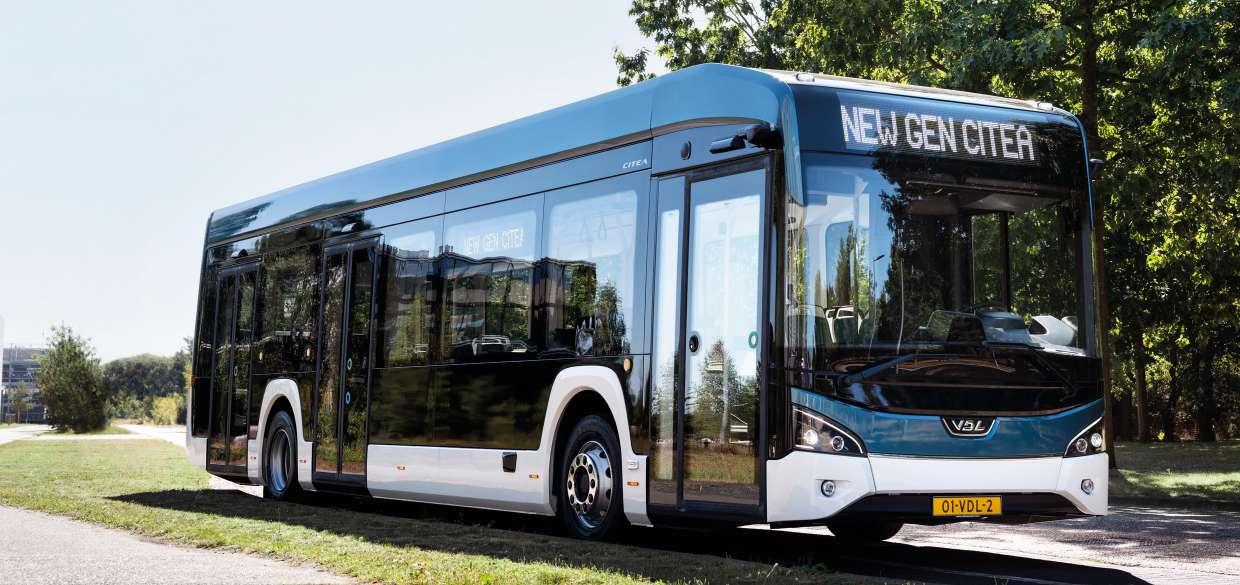
To contribute to a cleaner and more sustainable world, VDL Groep is fully engaged in developing and producing mobility solutions, electrification of vehicles and reducing emissions. We are a prominent player in the changing landscape of sustainable mobility. Originally, we started as a supplier of metal and plastic parts for the automotive industry. Since then, our activities have expanded to include the development and production of electric buses and coaches, electrification of heavier vehicles and vehicle assembly. In this, we play a leading role in Europe. At the same time, we focus on ‘smart’ mobility issues, such as design, electrification, connectivity, energy management, autonomous driving, mobility as a service and battery as a service. We design mobility solutions in-house, making them applicable to other forms of transport.
We focus on the following product platforms: coach, public transport, vans, trucks and automated guided vehicles (AGVs). Also, we are increasingly developing vehicles as 'data collectors', feeding back not only their own performance but also their impact on the living environment. In the world of Mobility, our goal is to contribute to a better and cleaner world for future generations through the development and production of smart mobility solutions. Below we will zoom in more on VDL Groep's activities in the world of Mobility with regard to vehicle production.
With the lack of concrete new vehicle projects as yet, at least for the time being, after almost 1.2 million cars produced in Born since 2014, independent car building at VDL Nedcar is coming to an end. Press parts production has also now come to an end. The initial activities of VDL Special Vehicles and the Mobility Innovation Centre (MIC) in Born - the (re)construction of special vehicles and the assembly of battery packs - are the first contours of our pursuit of greater independence from market and geopolitical developments, on the one hand, and a stronger earnings model, on the other.
The MIC delivers new and sustainable mobility solutions and aims to be a flexible and expert innovation and industrialisation partner. The MIC will initially focus on the following areas: industrialisation and assembly of battery and energy systems for mobile applications and initiatives in new transport concepts such as autonomous vehicles and fuel cell modules.
The long-term outlook offers good prospects.
The chosen strategic direction to focus on only electrically powered public transport buses is in line with the continuously growing demand for zero emission public transport in cities and for regional transport, which is necessary to comply with the proposed EU regulations.
VDL Bus & Coach is also actively involved in innovations, such as autonomous functions and hydrogen as a fuel, which will be required for public transport applications in the coming years and VDL Bus & Coach is thus preparing itself for the future. With a team of software engineers, developers and testers, VDL Bus & Coach also focuses on 'smart' mobility issues, such as connectivity, energy management, autonomous driving, mobility as a service and battery as a service, thus
THE YEAR 2024 WILL BE THE YEAR OF INTEGRATION OF TWO DIFFERENT BUSINESS PROCESSES AT THE NEW COMPANY SITE IN BORN.
relieving customers of concerns and making the transport of the future more sustainable. VDL Bus & Coach is and proudly remains an important player in the European high-end manufacturing industry, a premium brand that creates tomorrow's sustainable mobility solutions today through our strength through cooperation.
VDL Special Vehicles specialises in electrification of medium- and heavy-duty vehicles and building hydrogen trucks. From 1 July 2023, a division of VDL Special Vehicles from Eindhoven will merge with VDL Bus Venlo and focus on the following activities: emergency response vehicles, contract manufacturing and zero emission vehicles. Driven by innovations, VDL Bus Venlo delivers smarter mobility solutions for on- and off-road vehicles.
The year 2024 will be the year of integration of two different business processes at the new company site in Born. Through this merger and relocation, VDL Special Vehicles will further develop at the Born site into a specialist in vehicle bodywork and conversion, electrification of heavier vehicles, autonomous driving and contract manufacturing.

Vredestein Tyres’ highly-anticipated Vredestein Ultrac Pro ultra-ultra-high-performance (UUHP) summer tyre is launched, showcasing a groundbreaking lightweight design that maximises performance and comfort while dramatically reducing weight and environmental impact.
The substantial weight reduction leads to a lower rotational mass, improving steering response, acceleration and braking performance. Due to the lower mass, the tyres can also be kept in contact with the ground more efficiently.
Vredestein Tyres’ global R&D team in The Netherlands has focused on minimising the amount of material required for the tyre’s structure and tread to meet ambitious targets with respect to sportiness, while maintaining durability and comfort. This has been realised through the introduction of a novel bead configuration, which affords a more sophisticated mono-ply construction in a significant number of sizes, instead of the two-ply format commonly found in the segment. This innovative design results in a dramatic reduction in materials required and a consequential fall in overall weight.

The results of a comprehensive new tire assessment, carried out by the independent Spanish testing and engineering company Applus+ IDIADA, have been published. The assessment aimed to evaluate and benchmark the attributes of the new Vredestein Ultrac Pro in comparison with six leading rival products in the ultra-ultra-highperformance (UUHP) category.
best results for both front and rear axle excitation. Overall, the Ultrac Pro outperformed the rival touring-centric tyres for comfort, and far exceeded the comfort levels of the high-performance tyres in the test.
“deservedly receives our ‘exemplary’ seal of quality.”
Discover unrivalled elegance and comfort on every journey thanks to the new Ultrac Pro.
Discover ultimate performance and thrilling sportiness with every turn thanks to the new Ultrac Pro.
The Ultrac Pro claimed top position for its performance over both smooth and rutted road surfaces, registering the least vibrations during vertical acceleration. Compared to the bestperforming dedicated comfort tyres, it also excelled over more challenging u-shaped surfaces, recording the
Leading German automotive magazine Auto Bild Sportscars also awarded the all-new Vredestein Ultrac Pro. The publication singled out the product as “exemplary,” and highlighted its impressive grip and traction in both wet and dry conditions. Commenting on its performance, Auto Bild testers praised the Ultrac Pro for offering the “highest level of safety and driving pleasure,” saying it is a “balanced, comfort-oriented all-rounder” in the high-performance tyre category. They added that the Vredestein tyre
The Ultrac Pro, which is being launched across Europe this spring, dominated the aquaplaning assessment, securing first place in a test that simulates high-speed driving in heavy rain and on saturated highway conditions. Testers praised in particular the Ultrac Pro’s “balanced driving behaviour.” The Vredestein tyre also impressed in braking and handling tests, demonstrating high levels of lateral support at speed.
The Ultrac Pro will be offered in a versatile range of sizes from 18- to 24-inch, catering to a broad spectrum of sportscars, supercars, high-performance saloons, hatchbacks, and SUVs.

Efficiency in production processes relies on the ability to measure accurately. This makes companies dependent on the correct and calibrated measuring instruments. Trescal Benelux offers a range of services for this purpose, from performing calibrations in-house or on-site to precise measurements in the nanometer range using the latest optical 3D measuring machine.
The world of accuracy and calibration is one of knowledge and experience. Understanding what references are, which tools are needed, and what quality they must meet is essential. Trescal is a specialist in this field. The company’s origin lies in the calibration department of Air Liquide (FR), which became independent in 2007 and is now represented on every continent with more than 5,000 employees, about 500 of whom are in the Benelux.
While the calibration of measuring instruments for various sectors is central – as many as 3.3 million (!) instruments are calibrated annually by Trescal – Trescal also offers other services. These include the repair and maintenance of instrumentation, validation and qualification, asset management, procurement support, and training on measurement techniques and accreditation processes. In addition to technical services, Trescal also
assists in the acquisition of measuring systems and solutions for managing measuring equipment, based on digital management systems among others.
Sales manager Kasper Pijs: “For all these services, Trescal has a team of skilled professionals who not only have technical knowledge but are also closely involved in the industries they work for. Process engineering, for instance, uses different measuring equipment with different requirements than companies in the food or pharmaceutical industries. For performing the actual calibrations,
optimization. Kasper Pijs: “And although most calibrations are performed in our own laboratories – for which we have our own transport service – we also have a team of specialists to perform your calibrations on-site.”
Developments in measurement and calibration technology continue to advance. Particularly with regard to highly precise measurements, demand is increasing, and measuring in the nanometer range is no longer exotic. For these customers, Trescal recently invested in an optical 3D measuring machine: the Alicona µCMM. This purely optical system measures without contact and is the most accurate system in its class. It achieves an accuracy starting from 0.8 µm according to ISO10360-8, with the most accurate objective having a resolution of 10 nanometers.
Kasper Pijs: “With this new measuring machine, we combine the advantages of tactile coordinate measuring technology with optical surface measurement to measure dimensions, position, shape, and roughness of components with a single sensor. Because measurements are carried out only on truly relevant measurement points, very short inspection times can be realized. And since the measurements are contactless, this machine will not damage the surface of the highly accurate products. Moreover, it can reach places where other measuring machines cannot.”
The new measuring machine will primarily be used for quality purposes of products made from common industrial materials. This includes composites such as PCD, CFRP, ceramics, chrome, and silicon, regardless of whether they are matte, polished, or reflective products.
With an impressive portfolio of services, Trescal is steadily expanding its customer base. Kasper Pijs concludes: “With our experience in various sectors, our team is also ideally positioned to contribute to the most efficient process for carrying out measurements or inspecting products. Based on provided CAD files and associated quality requirements, for example, we can develop measurement programs that are ready even before the first product comes out of the machine. This allows companies to perform the correct quality measurements in the initial trial phase to determine whether and what changes need to be made to the production process. Proactive planning accelerates company performance.”








we have modern laboratories equipped with advanced technology to calibrate a wide range of instruments; from electronics and mechanical and geometric devices to temperature, humidity, and pressure equipment.”
As part of the Trescal Group, a world leader in calibration services, Trescal Benelux strictly adheres to international standards. This means that the company can also help maintain the quality and reliability of specific customer activities. This is typically a part of asset management and process









www.vdo-fleet.nl



Tachographs and peripherals, tachograph data analysis software, telematics and workshop equipment - all available in one place for both fleets and workshops.
From the tachograph makers, with a network of authorised partners and certified DTCO Ready workshops.
Your partner for an efficient and safe transport future.
The European Mobility Package has created a lot of dynamics in the transportation market. It defined several objectives to improve working circumstances for drivers. For example, promoting fairer competition between internationally operating companies and improving the social conditions under which drivers have to do their work (think of wages and working hours).
As a result -which is in fact also one of the objectives- road safety should improve. Thanks to the legal right to adequate rest for drivers while at work, they will be less likely to be involved in unsafe traffic situations due to overtiredness.

Avoid shortages and time constraints. Do not postpone the tachograph retrofit, plan it now.
The device used to record driving and resting times is the tachograph. The stored data can be accessed by controlling authorities when enforcing the rules. Over the years, the tachograph has undergone a major change. From a paper disk behind the speedometer on which movements and time were recorded with a marker to today’s digital, satellite-controlled version.
Since August 2023, with the introduction of the latest smart tachograph, in several thousand vehicles analogue and digital tachographs have bene replaced (the retrofit). Yet for many transporters, the retrofit is not urgent enough, according to fairly low retrofit figures from the Dutch RDW.
That urgency needs to be there though, because the more companies wait until the last minute, the more difficult it will be to have all retrofits ready on time. Either because workshops are already fully booked on the day fleets want to make an appointment, or because tachograph manufacturers most probably cannot cope with the temporary peak demand for tachographs, resulting in poor tachograph availability on the desired day of conversion.
The EU will be unrelenting: the first retrofit-wave (for old analogue and digital tachographs) must be carried out by 31 December 2024. Failure to do so will result in fines.
This is the reason for our stating since mid-2023: if you, as a fleet, do not want any surprises, plan the conversion of your vehicle(s) now. That could be for the second, third or fourth quarter: as long as it is fixed, it’s OK and it will at least avoid the risk of a
“full” workshop or increasing delivery times for tachographs. Please ask your workshop for advice where necessary.
Part of Germany’s Continental, the tachograph maker can rely on more than 80 years of experience in tachographs, motion sensors and download equipment. For analysing tachograph data, there is proprietary software that tells transporters where they need to improve. Special VDO workshop equipment helps install and calibrate tachographs every two years.
www.vdo-fleet.nl
www.vdo-werkplaats.nl
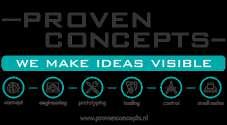
North Brabant, the beating heart of the Dutch automotive industry, is home to a family business that sets the standard for high-quality product development and prototyping in steel and plastic. Since its establishment in 2002 by Gerard Maessen, Proven Concepts has steadily gained ground, driven by a passion for innovation and an unwavering commitment to excellence. Proven Concepts consists of a team of twenty-three inspired professionals, many of whom have been involved with the organization since its pioneering days. The company is known as a leading player in the international automotive industry.
A family business in the truest sense of the word, Proven Concepts is now in the hands of the second generation, represented by Roger and Michel Maessen. Proud of their heritage and determined to carry on their father’s fame, they are at the helm of a company that thrives on perfection and craftsmanship.

“We literally bring ideas to life,” explains Roger. “We have the expertise and production technology in-house, making us flexible, fast, and cost-efficient.
Because of these attributes, we have built long-term relationships with our customers, who value us for our solution orientation, quality, honesty, and fast turnaround times.” With an extensive portfolio and decades of experience, they are uniquely positioned to bring even the most
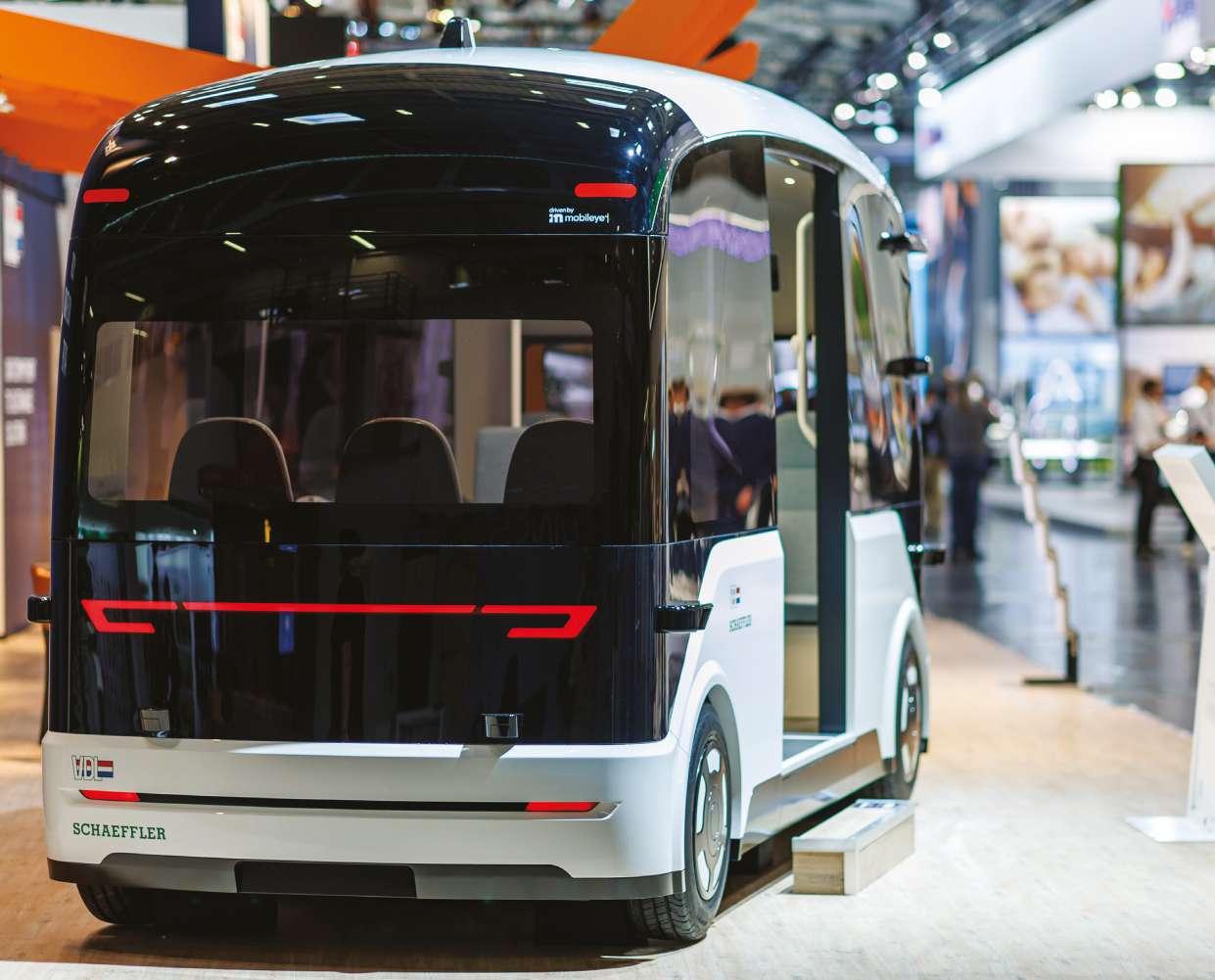
challenging technical issues to life.
“In addition, we believe it is important to provide a seamless and worry-free experience, managing and executing every aspect of the project. Whether it is pressing metal parts, PU casting, polyester lamination, or creating an entire mock-up,” elaborates Michel.
At the heart of Proven Concepts is a close-knit, multidisciplinary team driven by passion, knowledge, and a healthy entrepreneurial spirit. Their expertise spans a variety of industries, but the company’s roots are firmly planted in the automotive sector. Through years of collaboration with leading international clients, Proven Concepts has further developed, which means they now also operate in sectors such as agri, food, medical, transport, healthcare, and leisure.
A recent example of Proven Concepts’ activities is its collaboration with VDL in the development and construction of the People Mover. This is an innovative transport concept for metropolitan areas, integrating connectivity, electrification, and autonomous driving.
In the remarkably short timeframe of three months, Proven Concepts built the complete prototype, after which it was presented at the IAA Mobility in Munich.
For this, the company combined all its techniques; from concept to engineering, milling of necessary tools, and final production of all parts. With the end result being this stunning mock-up.
Proven Concepts is all about making ideas tangible. With their specialist knowledge and proven track record, they are a one-stop shop for everything in the field of high-quality product development and model prototyping. Their ability to innovate, anticipate changing needs, and always stay one step ahead makes them an indispensable partner in an everchanging world. Thus, even the most ambitious visions can become reality.
www.provenconcepts.nl

We are a design and engineering studio with a strong belief in our stylengineering philosophy, in which design and technical development go hand in hand. Thanks to this integrated strategy, we develop innovative products together with our clients that not only look good, but also function well.
Mobility is our specialty; we develop vehicles in the broadest sense of the word. From passenger cars to commercial vehicles such as heavy trucks, light last mile delivery solutions to cargo bikes. We are active in both the design of the vehicles themselves, as well as the design of production facilities
and the management of all processes involved.
Besides client projects, we also use our creativity to develop our own vision on mobility. We are a partner in various innovation processes and during the Dutch Design Week we showcased the EDAG CityBot; our vision on an integrated solution for urban mobility in which the livability of cities comes first.
We are a multi-disciplinary and multi-cultural team with a versatile background, which makes us extremely flexible in our services. That is why we not only use our expertise to develop
intelligent mobility solutions, but we are also happy to take on challenges in other sectors. As a result, we remain a fixed value for automotive OEMs, and we broaden our horizons in collaborations with small and medium businesses and start-ups.
Current ecological and economic challenges require future-proof solutions, where we can no longer design for today without understanding the world of tomorrow. Sustainable solutions are our standard, the ecological footprint of our designs is just as important to us as traditional design criteria such as weight, ease of use or cost price.


We can offer this extensive service portfolio because we connect our local presence in The Netherlands with the international competencies within the global EDAG Group. This portfolio is also scalable, so that we can offer our clients a tailor made project. Whether it concerns a special study into a solution for a specific technical problem or an initial sketch for a completely new mobility concept, we have the capacity
in house to answer any question. Despite our international presence we have certainly not forgotten our Dutch roots; we have been designing and developing mobility in the Eindhoven metropolitan region since 1982 under the former company name DuvedeC.
We continue to put this extensive experience, and our unique view on integrated product development into

Design
practice under the umbrella of the EDAG Group since 2016. Now located at the Automotive Campus in Helmond, we are still in the heart of the Dutch manufacturing industry, but we also quickly cross the national borders for international cooperation. Don’t hesitate to contact us for an introductory meeting to discuss your innovative idea or design challenge in more detail.

Using a digital twin to enhance and streamline software development
Advanced Driver Assistance Systems (ADAS) or Automated Driving systems (ADS) are in almost all new vehicles produced today. As expectations increase, so does the complexity of development. To keep up with demand, developers need to utilize the best tools to produce market-leading autonomous vehicles (AVs). Simulation and digital twins can enhance and streamline the AV development process to enable the creation of ADAS and ADS solutions that fulfil all requirements.

Legend: Safety according ISO26262 and SOTIF
Cloud-based autonomy solution to propel ADAS and autonomous vehicle validation
Siemens Digital Industry Software delivers the Simcenter Autonomy solution on AWS’s cloud services to help automakers scale Verification and Validation (V&V) processes for ADAS and Autonomous Vehicle developments. This collaboration combines Siemens’ expertise in testing and validation with
AWS’s secure, scalable cloud services, delivering the world’s first cloud-based end-to-end semi-automated V&V workflow and lifecycle management solution designed specifically for ADAS and Autonomous Vehicle development.
The progression towards higher levels of autonomy in vehicles has introduced a significant challenge — the scaling of Verification and Validation (V&V) processes has become a burdensome task for automakers. The Siemens Simcenter Autonomy solution on AWS directly addresses this challenge, providing a robust, integrated solution that significantly streamlines workflows and enhances efficiency.
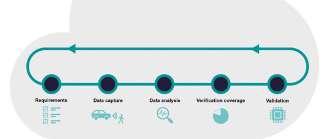
The key features of the Siemens Simcenter Autonomy Solution on AWS include:
• Automated V&V Workflow: A traceable semi-automated workflow for creating a digital thread compliant with industry standards and regulatory requirements.
• Collaborative Cloud Infrastructure: Deployed on the AWS cloud, the cloud-based architecture offers unparalleled scalability, supporting petabyte-scale storage for vehicle tracking and road-testing video streams. This infrastructure ensures instant global access for engineers
through an intuitive web-based interface, fostering seamless collaboration across teams.
• Maximum Test Coverage: Through a Real2Sim connector, recorded scenarios can be seamlessly transferred to virtual simulation and complemented with Siemens’ patented synthetic Critical Scenario Creation, ensuring maximal scenario test coverage for ADAS and autonomous vehicle feature development.
• Open Architecture: Seamlessly integrating with the existing ecosystem, fostering flexibility and adaptability in the V&V process.
• End-to-End: The solution captures the automakers’ requirements, integrates existing point solutions via the open architecture, optimizes the V&V process to include coverage analysis, and finally closes the loop back to automakers’ requirements.
Simcenter Autonomy Data Analysis is a web-based tool that runs on a cloud platform, so it can be accessed by anyone, anywhere. As part of Siemens Xcelerator, it ties everything together – Polarion, Simcenter Autonomy Data Analysis, Simcenter Prescan, coverage analysis. Other Siemens Xcelerator tools also enable hardware in the loop testing to check that the hardware can cope with the complexity of the algorithms or needs more CPU, RAM etc.
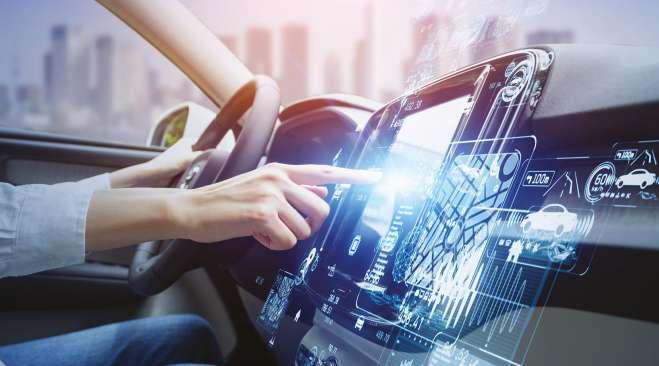
Automotive technology is ever evolving towards increased connectivity, with vehicles becoming linked to external networks due to advancing electrification and autonomous driving technologies. Yet, this development means vehicle systems will face the same vulnerabilities seen in current Internet-of-Things (IoT) systems, where the end-nodes in the network—here, the Electronic Control Units (ECUs)—often present the most significant security risks. Without real-time insight into the system configuration every vehicle becomes a highly vulnerable system. It’s not hard to imagine the dangers of unauthorized, counterfeited, safetycritical ECUs in a vehicle. The solution to this major challenge is unique, reliable, immutable identification and authentication of each ECU end-node.
Identification in this context means a “digital bar code” for every ECU, that can be read remotely, can not be tampered with, and provides a guaranteed unique identity. Authentication means confirming this identity, the equivalent of a digital passport. It protects the vehicle
against counterfeit parts and ensures compliance with safety standards throughout the entire vehicle lifecycle.
SandGrain is a Dutch start-up set to revolutionize the electronic authentication for (Industrial) Internetof-Things connected systems. Its unique solution is based on two perfectly complementary elements: a single, central, extremely secure cloud platform that manages all identities and provides the authentication service, in combination with small token ICs that are mounted on the end-node ECUs. The token IC and the cloud platform jointly perform a symmetrical authentication that can not be hacked. The IC is hard-coded including the embedded identity during production and is immutable. The fleet control centre or the vehicle central controller can authenticate the token at any moment through the ECU controller, based on a challenge received from the cloud platform.
Authentication technology is essential for the European Union’s Ecodesign for Sustainable Products initiative, particularly the Digital Product
Passport (DPP). Robust authentication enables the DPP to provide a digital, secure and verifiable digital identity.
By providing every battery module controller with a SandGrain token, the identity of every module can be guaranteed and traced during its entire lifetime, either in the vehicle or during a second life in a back-up system. Any non-authorised battery module will be immediately detected.
With vehicles becoming increasingly connected and dependent on guaranteed authentic modules for more autonomous driving functions, real-time knowledge of the integral system configuration becomes safety critical. Add to this the need for more circularity, tracking the whereabouts of system components throughout their life cycle, including the avoidance of counterfeiting, and it is obvious that such (automotive) systems can not live without the core basics: robust and secure authentication of the system end-nodes. SandGrain created a working prototype system that can do just that.
www.sandgrain.eu
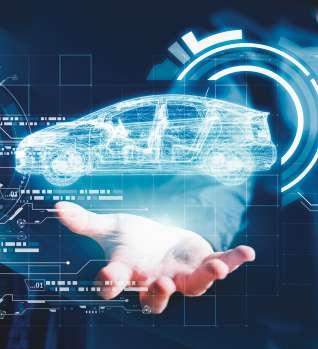
Assistance for vehicle occupants in the immediate aftermath of an accident is about to get better with incoming NextGeneration eCall (NG-eCall) services. Rohde & Schwarz already has solutions for testing the new equipment to realise the anticipated improvements in road safety.
As announced by the European Commission in February 2024, the European Union’s eCall automatic emergency calling system for road vehicles is migrating to LTE and 5G cellular standards, as mobile network operators seek to end 2G and 3G services. The transition brings opportunities to enhance eCall’s capabilities, leveraging the enhanced reliability, richer data transfer and enhanced voice communication that become possible with the 4G and 5G packet-switched networks. The planned next-generation eCall (NG-eCall) is thus expected to provide extensive and more accurate information for emergency services, ultimately leading to better outcomes for accident victims.
Extensive work is ongoing to finalize the new NG-eCall specifications which will become compulsory for vehicle manufacturers selling into the European market from January 2026. Moreover, the automotive industry will need upgraded test solutions to verify that the new NG-eCall modules correctly implement the later networks’ IP-based (IP Multimedia Subsystem, or IMS) connectivity and call signalling while supporting the enhanced NGeCall capabilities. These enhanced capabilities are likely to include an enlarged minimum set of data (MSD) for transferring additional media such as location data, video from dash cameras, text from speech, and support for remote control of car features such as sounding the horn, flashing lights, locking or unlocking doors, and disabling the ignition.

An approach based on field testing alone is likely to be time consuming, costly, and challenging due to uncontrollable events such as changes in environmental conditions. Laboratory testing capabilities will be vital to enable rapid and cost-effective delivery of NGeCall modules and systems. While NGeCall is planned for use only in Europe,
similar enhanced systems are expected in territories worldwide, including an upcoming Chinese eCall standard designed for 4G/5G packet-switched cellular networks.
As a leading supplier of advanced test equipment and supporting services to high-tech businesses in Europe and worldwide, Rohde & Schwarz has a pioneering role in helping to develop the new NG-eCall standards and assist vehicle suppliers and companies creating new devices and in-car modules to be deployed as early as possible. Rohde & Schwarz has solutions available now for laboratory testing of NG-eCall modules and is already working with leading module suppliers to prove their connectivity and support for the new NG-eCall functions.
The backbone of this test capability is the R&S CMX500 communication tester with the R&S CMX-KA098 5G eCall test option. Using these, engineers can simulate the NG-eCall public safety answering point (PSAP) and 5G/LTE cellular network, including the required IMS infrastructure, and so start testing NG-eCall in-vehicle systems (IVS) under laboratory conditions.
Also using the R&S SMBV100B vector signal generator for GNSS simulation, this setup can verify whether the IVS can trigger an NG eCall, select the right network, transmit the correct MSD data and establish the voice connection via a voice-over-LTE (VoLTE) or 5G call to the PSAP. The received MSD is available in raw and decoded formats, enabling users to check all transmitted values, including mandatory fields such as position information and number of passengers to ensure the data is complete and correct with no losses, always working fully independently of a real-world mobile network. Positioning information can be checked and the 2D position error is shown on a map. Thereby NG eCall developers can ensure the GNSS position is accurately transmitted.
Using the SMBV100B vector signal generator for GNSS simulation R&S additionally offers a GNSS performance test suite called the SMBV-K361. This helps ensure the conformance of the positional information.
As a highly versatile tool, the R&S CMX500 with the R&S CMX-KA098 software option can be effectively used for NGeCall testing under reliable and configurable 5G network conditions. This setup is also easily upgradeable to multi-cell scenarios, which is important for interoperability tests during the phase where there is limited NG eCall support either in the network or in the PSAP.
As NG eCall will become mandatory for all cars sold in the EU, achieving a fast transition to NG-eCall is seen as being vital to mitigate the legacy issues that will be associated with 2G/3G network turn-off as well ensuring compliance with future EU requirements. Uniquely, Rohde & Schwarz has a test setup that is ready to be used and has proved itself in recent successful projects with leading module providers and vehicle suppliers.
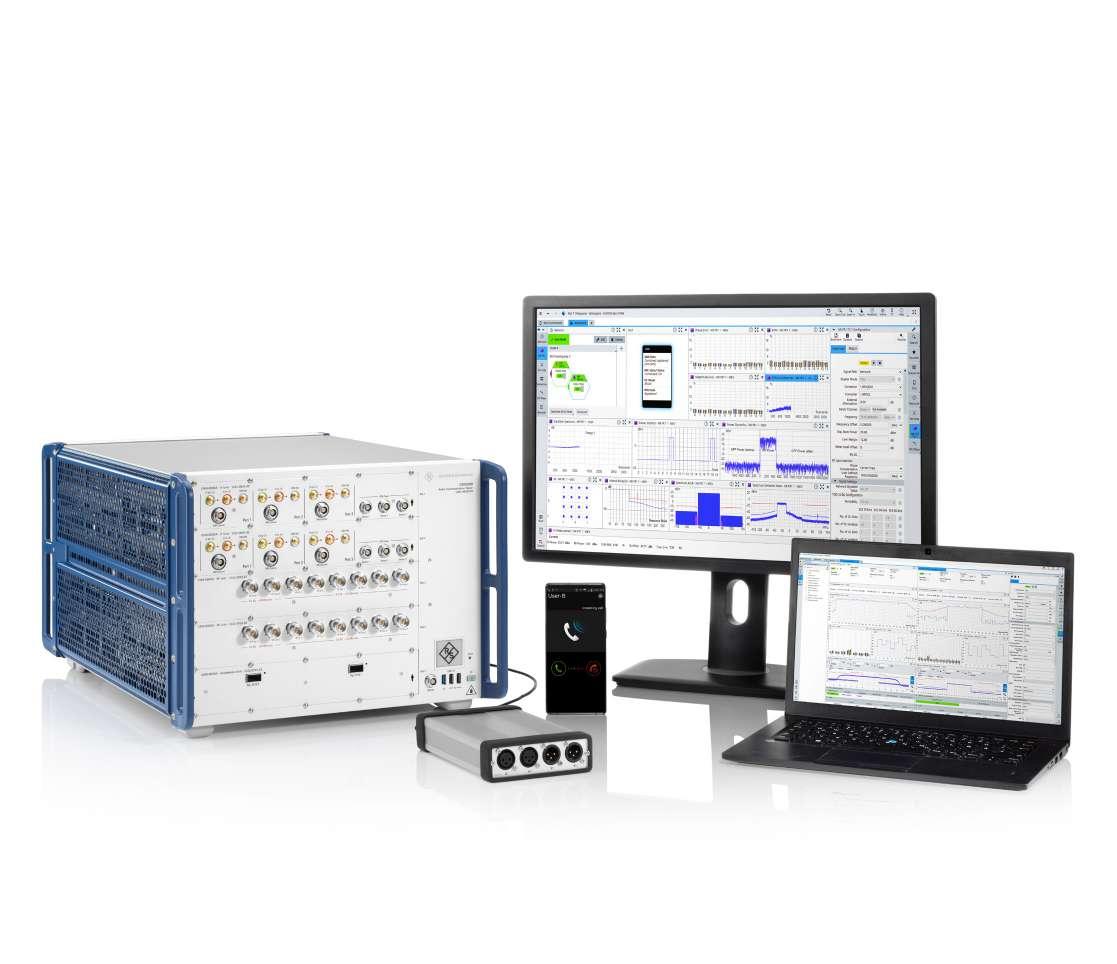

Solid Sands from Amsterdam answers a great demand from the automotive market with its SuperGuard Library Safety Qualification Suite. The C and C++ standard libraries are treated the same as any automotive software component, so the libraries should be tested and qualified with the same care and quality assurance. Especially for the C++ standard library, this looks like a challenge. The good news is that SuperGuard already supports companies with this challenge.
“....The SuperGuard Library Safety Qualification Suite closes a longstanding gap in the qualification of software components that, one way or the other, may result in defects being introduced into a safety-critical system. The standard library is a crucial component that is way too often overlooked. SuperGuard changes the picture completely and I believe standard library qualification will be a ‘must’ from now on.”

SuperGuard is a requirements-based test suite for the C and C++ standard libraries. It offers full traceability between the requirements derived from the ISO C and C++ language definitions and the individual library tests. It is designed to support the qualification of implementations of the C and C++ standard libraries for safety-critical applications, both for third-party (COTS) and for self-developed or maintained library implementations.
d Sands from Amsterdam answers a great demand from the automotive market with its erGuard Library Safety Qualification Suite The C and C++ standard libraries are treated the same as automotive software component, so the libraries should be tested and qualified with the same care quality assurance Especially for the C++ standard library, this looks like a challenge The good news is SuperGuard already supports companies with this challenge
he SuperGuard Library Safety Qualification Suite closes a long-standing gap in the qualification of ware components that, one way or the other, may result in defects being introduced into a safetyal system. The standard library is a crucial component that is way too often overlooked. SuperGuard nges the picture completely and I believe standard library qualification will be a ‘must from now on.”
erGuard is a requirements-based test suite for the C and C++ standard libraries. It offers full eability between the requirements derived from the ISO C and C++ language definitions and the idual library tests. It is designed to support the qualification of implementations of the C and C++ dard libraries for safety-critical applications, both for third-party (COTS) and for self-developed or ntained library implementations.


Scan for SuperGuard in 1 minute!


The Dutch automotive industry is one of the frontrunners in today’s smart mobility revolution, driving innovations that are set to redefine transportation on the European and global front. With a strong emphasis on digitalization, electrification, and automation, The Netherlands is rapidly emerging as a leader in developing future-proof mobility solutions.

Anchoring this progress is RAI Automotive Industry NL, which is instrumental in advancing The Netherlands’ smart mobility initiatives. Through strategic projects and collaborations, the organization focuses on digital infrastructure, cybersecurity, and protocol standardization essential for electric vehicles and autonomous driving. By working with 200 high-tech member companies, RAI Automotive Industry NL ensures that The Netherlands stays at the forefront of smart and sustainable transportation solutions.
Some of the most significant areas of development in the Dutch automotive industry are the advancement of digital infrastructure, cybersecurity, and connectivity technologies. The Netherlands boasts a highly developed and connected digital ecosystem, making it a leader in smart mobility solutions. With advanced communication networks such as vehicle-to-everything (V2X) connectivity, the country ensures
seamless integration of smart mobility systems. Despite the dense population and high labor costs, the Dutch automotive industry’s technological capabilities drive continuous innovation in mobility systems, ensuring high-quality and efficient solutions.
In a discussion with Bram Hendrix, program manager smart mobility at RAI Automotive Industry NL, he notes, “Protocols are key. We are known globally for our standardization protocols, which prevent the proliferation of incompatible systems that could hinder the user experience.”
Hendrix further explains that one of the critical aspects of digitalization is cybersecurity. “Our digital infrastructure will be a critical component of the future mobility landscape, so ensuring its security is paramount.” This focus on cybersecurity is evident in the ongoing projects that involve stresstesting systems through initiatives like hackathons, ensuring robust protection against potential threats.
Additionally, Hendrix highlights the importance of standardized digital infrastructure in supporting smart mobility. “We are actively working on projects like the Digital Infrastructure for Future-proof Mobility (DITM) to create an integrated and secure environment for smart vehicles,” he says. The DITM project is a comprehensive effort to link vehicles with the digital infrastructure in a seamless manner, incorporating advanced cybersecurity measures and developing protocols that enhance the reliability and efficiency of the network.
The DITM initiative includes multiple work packages, each addressing different aspects of smart mobility. One notable component focuses on creating a secure and reliable digital link between vehicles and infrastructure, incorporating robust cybersecurity measures to protect this critical ecosystem.
The DITM project exemplifies the Dutch approach to integrating advanced digital technologies into the automotive ecosystem. One of its key participants is TomTom, renowned for its navigation systems. TomTom is developing high-definition maps essential for autonomous driving, leveraging data from car sensors to ensure real-time accuracy and reliability.
“Human drivers can adapt to changes in the road environment, but autonomous vehicles require constantly updated maps,” Hendrix explains. The integration of real-time data from various sensors, including cameras, radars, and LiDARs, allows for the creation of highly detailed and accurate maps that are crucial for the safe operation of autonomous vehicles.
Another critical aspect of the DITM project is the collaboration between public and private entities to merge automotive and public maps. This integration ensures that both sectors have access to precise and current geographical data, enhancing the overall efficiency and safety of the mobility ecosystem.
By combining efforts, the project aims to create a unified mapping system that
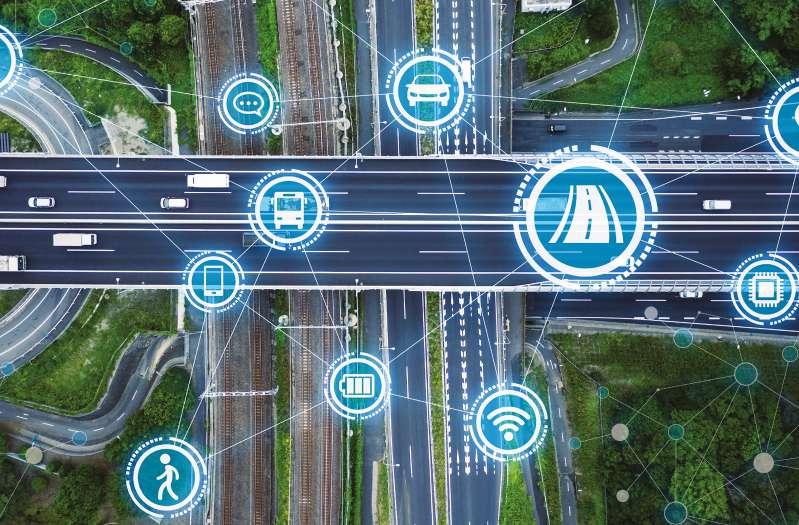
can be used for various applications, from traffic management to emergency response, thereby improving overall mobility and safety.
Moreover, the DITM project focuses on developing a comprehensive digital infrastructure that supports futureproof mobility solutions. This includes implementing advanced communication networks that enable seamless connectivity between vehicles and infrastructure. As Hendrix describes, The Netherlands is working towards a fully connected ecosystem where vehicles can communicate with each other and with the surrounding infrastructure in real time. This level of connectivity is essential for the deployment of autonomous driving technologies and the efficient management of traffic flow.
“Radar technology is fundamental in supporting the kind of precise, real-time decision-making required for autonomous driving,” says Kees Gehrels, Senior Director Automotive Business Development at NXP. “Our radar chips are designed to provide the necessary accuracy and reliability, enabling that vehicles can safely navigate complex environments.”
The project also addresses the need for robust cybersecurity measures to protect the digital infrastructure from potential threats. The security of the communication networks and data exchanges between vehicles and infrastructure is a top priority. “Cybersecurity is a critical component of our digital infrastructure strategy. We are implementing advanced security protocols to safeguard the data and ensure the integrity of the system,” Hendrix emphasizes.
The DITM project’s collaborative nature, involving various public and private stakeholders, underscores the importance of partnership in achieving sustainable and smart mobility goals. By leveraging the expertise and resources of different organizations, the project aims to create a resilient and adaptive mobility ecosystem that can meet the evolving demands of the future.
As part of advancing automation in transport, DAF Trucks is actively developing vehicle safety and automation technologies. Their efforts span various levels of automation, from advanced driver assistance systems (ADAS) to fully autonomous trucks, enhancing safety, efficiency, and sustainability in logistics.
DAF’s journey includes implementing systems like adaptive cruise control, lane-keeping assistance, and collision avoidance, representing lower automation levels (Level 1 and Level 2) where drivers still play a crucial role. At higher automation levels, DAF is exploring autonomous trucks capable of operating without human intervention in controlled environments. These vehicles are equipped with LiDAR, radar, cameras, high-definition maps, and real-time data processing to navigate complex environments safely.
“Our goal is to provide solutions that enhance productivity while ensuring safety remains paramount,” says Guus Arts, Senior Project Manager Advanced Technology at DAF Trucks. “By focusing on relevant automation solutions, we aim to address industry challenges like driver shortages and operational efficiency.”
Next to boosting transport efficiency, the aim of autonomous trucks is to alleviate the driver shortage in the truck industry for those parts of the route that are suitable for automation and typically involve repetitive and time-consuming tasks. Examples include yard operation or hub-to-hub traffic. However, factors like infrastructure, safety, and public acceptance will be crucial in determining their widespread adoption. Extensive testing ensures that these trucks can handle diverse scenarios like varying weather and dynamic traffic patterns. Yet, a robust regulatory framework is critical for advancing this technology.
As Harald Seidel, CEO of DAF Trucks, noted to Politico, “This is not a problem now, but it will eventually be an obstacle to larger-scale deployment in the future.” Seidel advocates for European testing permits and harmonized digital infrastructure to support automated driving, stressing that commercialization depends on legislation and societal acceptance. He stresses that “taking it a step further and commercializing it structurally on European roads will depend on the legislation we end up with,” highlighting the need for societal acceptance and the development of business cases for different levels of autonomy.
VDL Enabling Transport Solutions (ETS) is another key player that focuses on integrating autonomous driving systems into city buses, ensuring they are technically compatible with other systems. VDL ETS also develops user profiles and designs use cases for depots where buses operate autonomously. It aims to create buses that detect and respond to road conditions, obstacles, and pedestrian movements.
VDL ETS is actively advancing Autonomous Yard Maneuvering, a technology that enables buses to independently move within depots, such as from parking areas to washing stations or charging points. The focus is digital integration, connecting vehicles with real-time maps and data about moving objects outside the driver’s view.
“Urban environments pose unique challenges for automated buses, from navigating dense traffic to ensuring passenger safety,” says Glenn Haverkort, Managing Director at VDL ETS. “Our technology is designed to address these challenges, allowing for smoother and more reliable public transport in cities.”
Another initiative involves automatic halting at bus stops, where buses stop precisely at designated points, improving passenger boarding
and reducing minor damages. This enhances safety and comfort while maintaining the driver’s role with maximum support.
Additionally, VDL ETS focuses on platooning technology, where multiple buses autonomously follow a leading, human-driven bus. These buses communicate with traffic lights, using the Green Light Optimal Speed Advisory (GLOSA) system to receive timing information on red and green lights. This helps optimize transport capacity without requiring additional drivers. All these technologies are rigorously tested in controlled environments to accurately simulate various urban scenarios and ensure efficiency and safety, aligning with VDL ETS’s strategy to enhance urban mobility.
The advancements by DAF Trucks and VDL ETS exemplify The Netherlands’ commitment to leading the smart mobility revolution. By developing and implementing cutting-edge autonomous technologies, these companies set new standards for safety, efficiency, and sustainability in transportation. Collaborative efforts among industry stakeholders, regulatory bodies, and technology partners, including robust cybersecurity measures, are crucial in overcoming challenges and realizing the full potential of autonomous vehicles.
Simulation technology plays a crucial role in advancing smart mobility, enabling automotive suppliers and OEMs to accelerate innovation and enhance product safety and performance. Dutch knowledge institution TNO and companies like TASS International (a Siemens company) are leading the charge in virtual simulation and digital validation labs. These advanced simulation environments allow for comprehensive testing and validation of new technologies, ensuring they meet the highest standards of safety and efficiency before being deployed on the roads.
“Virtual simulation and physical testing environments are essential for developing accurate digital twins,” Hendrix explains. “These technologies allow us to transition from passive to active safety systems, which are crucial for future mobility.” By creating digital replicas of physical systems, companies can simulate real-world scenarios and test the performance of various components under different conditions. This approach significantly reduces the time and cost associated with physical prototyping and testing.
Moreover, simulation technology enables the automotive industry to address complex safety challenges posed by new mobility solutions, such as autonomous driving and vehicleto-everything (V2X) communication. Through virtual simulation, developers can test how autonomous vehicles respond to unpredictable road conditions, pedestrian behavior, and interactions with other vehicles. This level of testing is vital for ensuring that these advanced systems can operate safely and reliably in real-world environments.
TNO’s work in virtual simulation encompasses a wide range of applications, from testing advanced driver-assistance systems (ADAS) to evaluating the safety of new vehicle designs. By leveraging sophisticated simulation tools, TNO can assess the impact of different design choices
on vehicle safety and performance, helping manufacturers optimize their products for both safety and efficiency.
TASS International, now part of Siemens, focuses on integrated solutions combining passive and active safety technologies. Their simulation platforms allow for the detailed analysis of crash scenarios, enabling the development of innovative safety features that protect occupants and reduce the severity of collisions. With their simulation technology, TASS International can predict and improve the safety outcomes of different vehicle designs and configurations. This capability is critical for advancing toward a future where vehicles are smart and exceptionally safe.
Integrating simulation technology in the development process also facilitates compliance with stringent safety regulations. By thoroughly testing and validating new technologies in a virtual environment, companies can ensure their products meet all regulatory requirements before they reach the market. This proactive approach enhances safety and accelerates the adoption of innovative mobility solutions.
The continued advancement of simulation technology will be pivotal in addressing emerging safety challenges and enabling the successful deployment of smart mobility solutions. As the Dutch automotive industry continues

to innovate, these simulation tools will play a key role in ensuring that new technologies are safe, reliable, and ready for widespread adoption.
Looking ahead, Hendrix identifies several emerging trends and opportunities that will shape the future of the Dutch automotive industry. Key among these is the continued evolution of automated and connected vehicles, which promise to revolutionize how we travel.
„I believe we are well positioned for this transition due to our high-tech heritage,” Hendrix says. „Automation and digitalization will take more than 5-10 years to fully materialize, but the steps we are taking now are crucial.”
He also highlights the need for stronger government support in promoting safety technologies. While decarbonization efforts are well underway, the adoption of advanced digital systems has significant potential to improve traffic safety.
„Governments need to push harder for a safer mobility ecosystem,” Hendrix urges. „We have the technologies available, and it’s crucial that they are deployed effectively.”
The Dutch automotive industry’s journey toward smart mobility is marked by innovative projects, strategic collaborations, and a strong emphasis on digitalization and safety under the guidance of dynamic organizations like RAI Automotive Industry NL. Through continuous technological advancements and a commitment to a collaborative ecosystem The Netherlands is poised to set new standards in the global automotive landscape. By continuing to push the boundaries of technology and fostering a collaborative ecosystem, the Dutch automotive industry is not just adapting to the future of mobility but actively shaping it.
This is the era of software-defined vehicles, a time in which vehicles, infrastructure and road users are connected. Safety, sustainability, and autonomous driving are essential. With software from ICT Automotive, topics like Cyber Security, Quality and Functional Safety are guaranteed.

The role of embedded software in the Automotive sector is becoming ever more important. Automotive Software has to be safe, secure and meet high quality standards. These developments lead to an exponentially growing demand for in-vehicle software, backend and Cloud solutions. ICT Automotive is the ideal partner in this domain. We collaborate strongly with OEM’s, leading global Tier 1s and silicon providers, who are changing their software strategies rapidly.
With over 30 years of experience in the Automotive sector, ICT Group has built a tremendous track record within the traditional domains of Automotive with projects in the areas of Body, Powertrain, Chassis and Infotainment. Software development is in our DNA, our passion. Over the years, we have elevated software development to craftsmanship, a distinctive specialty.
Functional Safety, Cyber Security and Quality/ASPICE are key elements in our way of working
From the moment the software-defined vehicle arose, We increased our focus on Autonomous, Connected, Electric and Shared (ACES). Functional Safety, Cyber Security and Quality/ASPICE are key elements in our way of working. ICT Automotive was already involved in functional safe software development compliant with IEC 61508, the predecessor of the ISO26262 standard. We have accumulated a wide variety of expertise in this area, from ASIL A up to ASIL D level.
ICT Automotive focusses on the increasing importance and demand of Cyber Security expertise. We are development partner for OEMs in connectivity programs for over a decade. Transforming the vehicle into an IoT device, fully connected and secure. ICT Group is your trusted
partner for cyber security-related challenges, and realises the highsecurity demands by applying proven technologies that comply with the applicable standards and regulations like UNECE WP.29 and ISO21434.
We drive our activities from our TISAX certified development centers, offering the required competences against the desired cost structure. We execute our projects with a result-driven attitude following an Agile or waterfall approach.
Next to our software services we offer the Motar platform as an ultimate product for the small and mid-size OEM. Model your automotive software with MATLAB/Simulink. Run your models with Motar directly on your commercial off-the-shelf automotive target, without any need for embedded software development skills.
We look forward to shaping the future of mobility together.




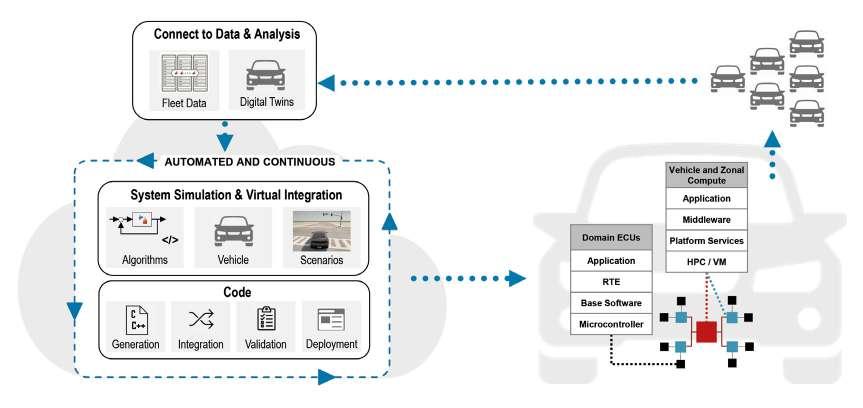
The Software-Defined Vehicle (SDV) trend is catalyzing recent automotive industry transformations in connectivity, automated driving, and electrification. A major benefit of SDVs lies in the ease of providing continuous software updates and fixes, which contribute to an ongoing increase in the vehicle’s value over its lifespan. SDV design demands a holistic approach: shifting from traditional electronic control units (ECUs) to a centralized hardware architecture, integrating in-vehicle computers and zone control units, and at the same time transitioning from conventional functional software development towards advanced paradigms such as Service-Oriented Architecture (SOA). This article explores how model-based approaches support this transition from signal-based to service-oriented software for SDV.
Traditional embedded automotive software development is coupled to specific ECUs, adhering to strict standards like Automotive SPICE and ISO 26262SO. SOA, however, allows software functions to operate as independent and communicable services and is characterized by easy updatability and loose coupling to the hardware. Furthermore, dynamic service discovery, publication/ subscription, and reconfiguration capabilities offer flexibility, efficiency, and reusability of software components, aligning automotive software development with more profitable and sustainable business models. As a result, the SOA concept has been integrated into industry standards, including AUTOSAR1, DDS2 and ROS3 and it is poised to become the foremost software development practice for vehicles of the future.
Model-Based Design (MBD) is widely used for timely delivery of high-reliability automotive software through early design validation with simulation and automation of subsequent implementation steps like high-quality code generation and verification. MBD has evolved to support SOA development by extending code generation capabilities to a wider range of computing platforms and adapting software component design from signal-based models to service-oriented modules. Tools like Simulink® facilitate designing of software behavior, modeling messagebased communication among software components, and simulating service interactions. This streamlines the development process, enabling efficient management of complex software clusters, and accelerating deployment4

However, migrating legacy signalbased applications to SOAs presents challenges, including decomposing monolithic structures into modular services and addressing tightly coupled components. MathWorks developed an approach by providing a unified development platform for SOA-based applications, regardless of the underlying architecture, ensuring consistency and efficiency across the development process. Existing software components can be decomposed into services by following a four-step process: identification and analysis of services, definition of service and
interface, definition of service contracts, and modeling and deployment of services.
In conclusion, MBD has evolved to support the development of SOA applications in the automotive industry, enabling developers to efficiently model, simulate, and validate software behavior before implementation. This approach not only shortens development cycles but also enhances software quality and flexibility, fully leveraging the advantages of SOAs.

Learn more about Mathworks
1 www.autosar.org/standards/classicplatform, www.autosar.org/standards/ adaptive-platform
2 www.mathworks.com/products/dds.html
3 www.ros.org/blog/why-ros/
4 www.mathworks.com/content/dam/ mathworks/ebook/soa-ebooklet.pdf

TXTOmedia's Video Creation Cloud is reshaping the automotive industry by converting existing manuals into interactive instructional videos, benefiting car owners and service and maintenance personnel alike. This innovative platform enhances customer experience, streamlines operations, and boosts engagement through dynamic video content.
For car owners, TXTOmedia's solution simplifies complex procedures by translating manuals into easy-to-follow instructional videos. This visual format enhances comprehension and retention
of crucial information regarding vehicle maintenance and operation, empowering car owners to troubleshoot issues confidently and perform routine tasks effectively.
Simultaneously, automotive service and maintenance personnel benefit from comprehensive training materials presented in video format. TXTOmedia's platform facilitates ongoing professional development, ensuring consistent service quality across technicians and accelerating knowledge transfer within service departments.
The platform's multilingual capabilities enable the creation of instructional videos in various languages, enhancing accessibility and inclusivity for global audiences. This ensures that automotive manuals and training materials cater to diverse markets effectively.
This innovation enhances user experience for car owners and drives operational efficiency within automotive service departments, fostering excellence and innovation in the automotive industry.


When you think of vehicle data, you think of Beijer Automotive. Situated in the south of The Netherlands: the automotive region. The company has been a pioneer in unlocking, analyzing and communicating vehicle data for more than 30 years. Worldwide you will find Beijer technology in taxis, police cars, roadside assistance, telematics fleets and private cars (cruise control and limiters). But also data from trucks, agricultural vehicles, generators and equipment at airports, for example, is made accessible by Beijer engineers. In addition, Beijer Automotive participates in mobility projects where efficiency improvements can be made with large amounts of collected sensor data. For example, the use of windshield wipers can indicate down to street level where it is raining and the outside temperature value of large numbers of cars can map the road surface temperature of an entire highway. Information that, for example, benefits traffic information services.
Beijer Automotive supplies the data in any desired form: via hardware (Beijer CAN Interface) or software (Beijer CAN Library). Talk about unburdening! The customer checks the desired signals and the data rolls out of his application: Speed, Odometer, Engine speed, State-of-
Charge, Range, Charger-Connected, Outside temperature, Lighting, Doors, Seat belts, you name it. And this is just a selection of the large number of signals from vehicles.
While the customer focuses on what he is good at, Beijer engineers continuously research vehicles and equipment, analyze the data and keep the Beijer vehicle database up to date. And therefore also the customer’s system or application. That gives peace and confidence. Independent measuring institutes regularly test Beijer technology to continue to guarantee the accuracy of signals and reliability under extreme conditions. Several vehicle manufacturers have approved the Beijer CAN Interface, including the Beijer service, as Original Equipment Manufacturer (OEM) product. The company therefore considers investments in R&D to be of great importance to stay ahead of and help shape the rapid developments in the automotive industry. New automotive networks (like CAN FD) are mastered in order to continue to translate from vehicle to customer application in the future.
Beijer engineers are continuously researching new car brands that are being introduced in Europe, amongst

others from China, and adding them to the Beijer vehicle database. Furthermore, Beijer Automotive is increasingly manifesting itself in foreign markets outside Europe and is expanding its network worldwide. On-site engineers are locally trained to research new car models and, after the data has been analyzed at the Beijer headquarters, to install the solutions on location. Naturally, this is supported by the INCAR instructions, known in the installation world, and by the Beijer helpdesk.
Beijer Automotive has grown into an important player that has become an indispensable provider of complex vehicle data. Now and in the future.
www.beijer.com


In an era epitomized by technological advancements and competition in the automotive industry, one value that remains at the core of innovation is human capital. In the Dutch automotive industry, a robust focus on human capital is helping to drive innovation and excellence in a way that strengthens and leverages technological and engineering know-how.
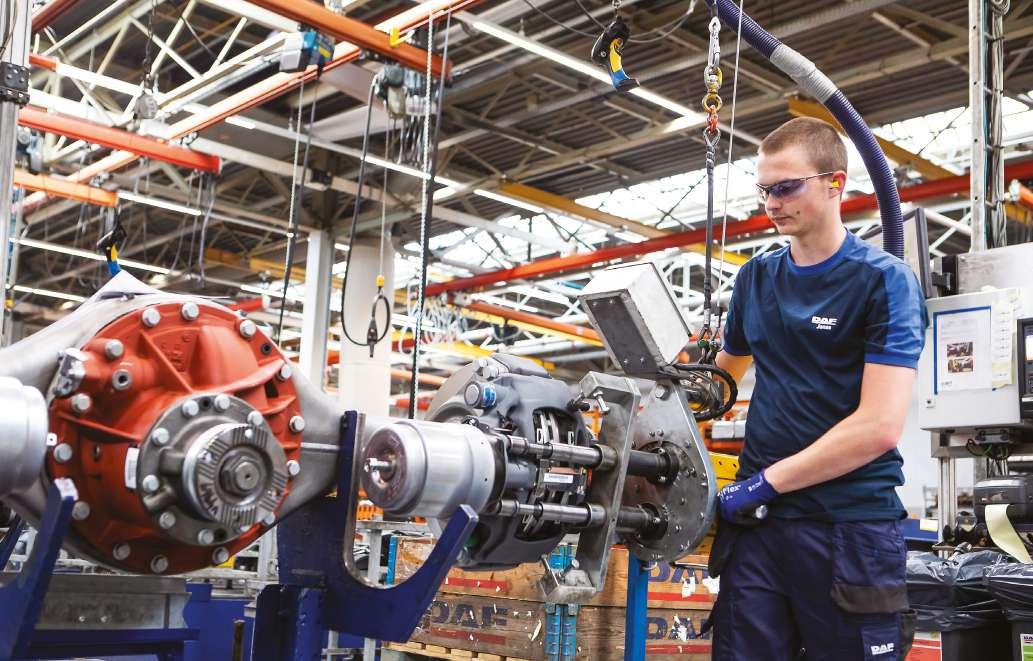
With strong investment from the industry, the government, and education in lifelong human development, The Netherlands is capable of demonstrating world-class quality and quantity of skilled professionals needed to tackle global challenges in the automotive industry. At the heart of this success is RAI Automotive Industry NL, a pivotal organization championing the development and continuous education of automotive professionals.
In The Netherlands, the pathway to a career in automotive engineering is uniquely comprehensive. In a discussion with Jean Pierre Heijster, the section manager at RAI Association responsible for Smart and Sustainable Manufacturing and Human Capital,
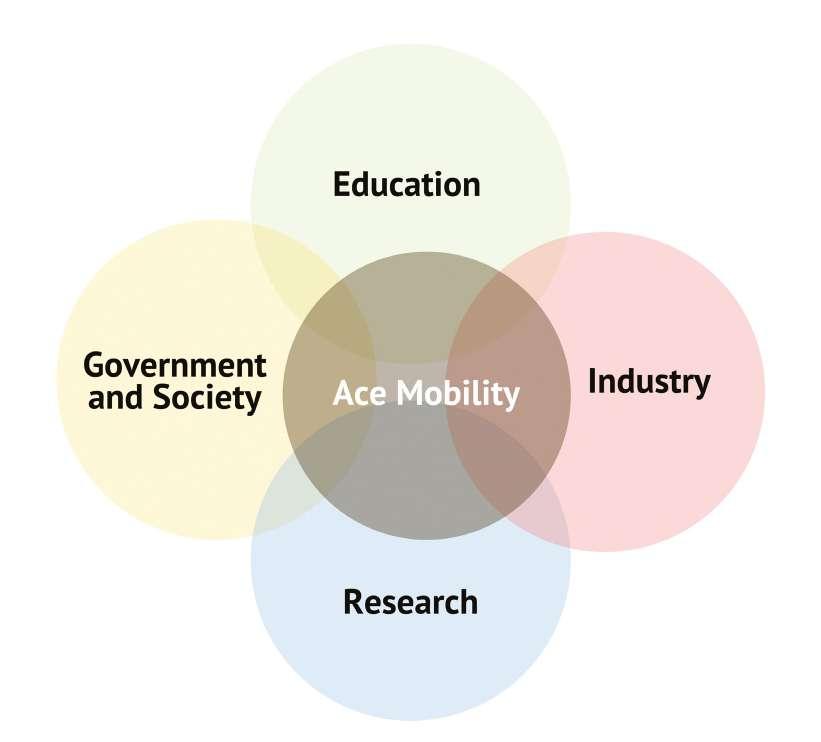
Craftsmanship (MBO Automotive Center), which provides vocational-level training, Additionally, there is a strong attachment to the Automotive Center for Expertise (ACE Mobility), a publicprivate partnership between education and industry.
he explains that RAI Association has established an educational continuum that spans from vocational training to Bachelor’s, Master’s, and PhD programs in automotive engineering.
This structured approach ensures that individuals can progressively build their expertise and qualifications, adapting to the industry’s evolving demands. Heijster highlights the significance of the Center for Innovative
One of the standout programs RAI Automotive Industry NL is involved in is the Green SKHy project, a European initiative focused on developing training for professionals working with hydrogen systems in the automotive industry. This project underscores the importance of preparing the workforce for future technologies, ensuring that the Dutch automotive sector remains at the forefront of sustainable innovation. „We are part of this because we are certain we have to continuously train young people and make them aware of the fact that the automotive industry is the best industry to work in,” says Heijster.
This educational continuum is particularly vital in an industry marked by rapid technological changes. The automotive sector is experiencing a significant transformation, driven
by advances in electric vehicles, hydrogen mobility, autonomous driving technologies, and sustainable energy sources. Adapting to these changes hinges on a well-educated workforce that is not only technically proficient but also agile and innovative. RAI Automotive Industry NL’s efforts in building a comprehensive education pipeline ensure that Dutch automotive professionals are equipped with the latest knowledge and skills, positioning them to lead the industry into the future.
The Dutch automotive industry’s success in human capital development is significantly attributed to the Triple Helix model, which promotes collaboration between government, academia, and industry. Heijster emphasizes that this model is the foundation of their human capital strategy. „The triple helix way of working is the base of the success of having
a good human capital system. We’re still working on it day by day, but we can’t do it without the industry or the government,” he notes.
The Triple Helix model manifests in various collaborative initiatives, such as the Automotive Learning Community (TALCOM) project, where automotive companies, educational institutions, and government bodies create a hybrid learning environment. This environment allows students, teachers, researchers, and industry professionals to innovate and learn together, fostering a culture of continuous development and innovation. RAI Automotive Industry NL’s collaboration with the MBO Automotive Center and ACE Mobility, leading players in the Dutch automotive education sector, exemplifies this model’s effectiveness. Through joint efforts, they ensure the workforce is well-equipped with the necessary skills and knowledge to meet the industry’s current and future demands.
As a key member of RAI Automotive Industry NL, ACE Mobility connects education and industry by organizing

activities and facilitating innovative research projects in collaboration with Fontys and HAN Universities of Applied Sciences, along with various leading partners from the automotive and mobility industry. “In addition to our focus on activities and research and innovation projects, Human Capital has become a key pillar of our strategy,” says Saskia Lavoo, General Manager at ACE Mobility.
“By playing a crucial role in the Human Capital agenda in various national growth initiatives, for example, we help the sector address immediate and long-term challenges, equipping professionals and students with essential skills for future innovations,” Lavoo adds. “We try to achieve this with over 200 cooperating organizations, overseeing over 40 million in Human Capital activities in the upcoming 8 years.” Guided by principles of Safety, Sustainability, and Clean and Smart Mobility, ACE Mobility ensures the Dutch automotive industry remains competitive and innovative, contributing to a sustainable future.
Lavoo is optimistic about the future of the Dutch automotive industry, especially regarding human capital. “In the next ten years, I expect significant growth driven by increased demand for high-tech skills in automation and green technologies. But realistically, we foresee more problems in the next 20 years than what we together as an ecosystem can find a solution for.”
“Our focus will be on developing the competencies, ensuring that the Dutch sector is prepared and leading these changes. Our nationally led approach will reach various regions in order to make a difference directly with education and business through transition hubs, for example. We are setting up our first hub on Batteries at the Automotive Campus, as we speak,” she explains. Continuous learning and adaptation will be key to maintaining The Netherlands’ competitive edge globally.
ACE Mobility’s initiatives in Human Capital development and its role as an industry trendsetter are crucial. The
Technological advancements in the automotive industry are rapid and relentless. To keep pace, professionals must engage in lifelong learning, continuously updating their skills and knowledge. RAI Association plays a crucial role in facilitating this ongoing education. „Those who are already working in the automotive industry also have continuous learning programs because technology is growing so fast. Either you continuously learn and develop yourself, or you will lose,” asserts Heijster.
Dutch automotive sector is set for growth, propelled by technological advancements and a skilled workforce, ensuring a sustainable and innovative future.
In a global context, the Dutch approach stands out for systematically integrating these three pillars. Many countries struggle with fragmented efforts where education, industry, and government tend to operate in silos. The Triple Helix model breaks down these barriers, creating a cohesive ecosystem that drives both educational and industrial advancements. This integrated approach not only addresses the immediate skills gap but also fosters long-term collaboration and innovation, ensuring that the Dutch automotive industry can respond swiftly to emerging trends and technological disruptions.
These continuous learning programs are developed in collaboration with universities, universities of applied sciences, and vocational education institutes. They cater to the needs of both new entrants and seasoned professionals, ensuring that everyone in the industry can stay abreast of technological advancements and industry trends.
A key component of these programs is their focus on practical, handson learning experiences. For instance, TALCOM at the Automotive Campus in Helmond brings together companies like DAF Trucks and Ebusco with educational institutions such as Fontys and Summa. This collaboration enables students and professionals to work on real-world projects, applying their theoretical knowledge to real-world challenges. By engaging in these experiential learning opportunities, participants gain a deeper understanding of the industry’s intricacies and develop the skills needed to drive innovation.
Moreover, RAI Automotive Industry NL recognizes the importance of upskilling and reskilling initiatives in addressing the skills gap. As new technologies emerge, certain skills may become obsolete while new competencies are required. The association’s programs are designed to be flexible and

adaptive, allowing professionals to continuously update their skill sets. This approach not only enhances individual career prospects but also strengthens the industry’s overall capability to innovate and compete on a global scale.
At the vocational level, craftsmanship remains a critical component of the Dutch automotive sector. Skilled craftsmen and craftswomen are indispensable, providing the hands-on
expertise needed to produce innovative automotive solutions. „On the vocational level, craftsmanship is arguably the most important thing that people can develop themselves around,” says Heijster.
The focus on craftsmanship is supported by initiatives like TALCOM, where vocational training is closely integrated with higher education and industry needs. This integration ensures that vocational graduates possess the practical skills required by the industry, making them valuable assets in the workforce.
Craftsmanship in the Dutch automotive industry is not just about technical skills; it also encompasses a deep understanding of quality, precision, and

innovation. Dutch vocational training programs emphasize these values, ensuring graduates are proficient in their trade and committed to continuous improvement and excellence. This dedication to craftsmanship is reflected in the high-quality products and innovative solutions the Dutch automotive industry is known for globally, especially in the heavy-duty sector and its progression towards sustainability.
With good zero-emission plans for the heavy-duty sector, the Dutch automotive industry can approach sustainability through zero-emission programs for BEVs, zero-emission programs for FCEVs, and zero-to-lowemission programs for hydrogen ICEs. This will be further enhanced with the new EU rules and legislation requiring the heavy-duty industry to be zeroemission, leading to more opportunities.
RAI Automotive Industry NL’s emphasis on craftsmanship highlights the broader cultural value placed on vocational education in The Netherlands. Unlike other countries where vocational training may be undervalued, the
Dutch approach celebrates and invests in vocational skills, recognizing their crucial role in driving industrial growth and innovation. This cultural appreciation for craftsmanship fosters a sense of pride and commitment among vocational graduates, motivating them to continually hone their skills and contribute to the industry’s success.
As the automotive industry transitions towards more sustainable technologies, hydrogen systems are becoming increasingly important. The Green SKHy project exemplifies the proactive steps
RAI Automotive Industry NL and its partners took to develop expertise in this area. The project aims to create a European network of hydrogen training labs, providing transnational training schemes to equip professionals with the skills needed for the hydrogen economy.
The initiative focuses on technical training and careers in the hydrogen
automotive industry adopts sustainable technologies and pioneers their development and implementation.
The collaborative efforts between RAI Automotive Industry NL, ACE Mobility, MBO Automotive Center, and other stakeholder highlight the importance of a unified approach to human capital development. This partnership helps create a future-proof automotive sector through joint initiatives in human capital and technology. It operates at the intersection of industry and automotive education, fostering an environment where skills, knowledge, and expertise are continuously exchanged and enhanced.
Such global engagement ensures that Dutch automotive professionals are exposed to international best practices and emerging trends, further enhancing their ability to innovate and compete on a global scale.
The partnership between ACE Mobility and RAI Automotive Industry NL also extends to setting up Automotive Learning Community, a community focused on the Innovation-LearningWork connection and the National Growth Fund initiatives. These initiatives aim to create a supportive ecosystem for continuous learning and innovation, ensuring that the Dutch automotive industry remains agile and competitive in the face of global challenges.
sector, thus addressing the industry’s immediate and future needs. It aims to promote the development of the clean hydrogen sector by reducing the obstacles to the European recognition of skills and related systems through joint action plans.
Hydrogen technology is vital to the future automotive landscape, particularly in the quest for carbon neutrality. The GreenSKHy project supports the European Commission’s hydrogen strategy, which aims to accelerate the development of clean hydrogen as a cornerstone of the EU’s energy system. By training professionals in hydrogen technologies, the project ensures that the automotive industry has the expertise to integrate hydrogen solutions effectively.
This focus on hydrogen also aligns with broader sustainability goals. Hydrogen-powered vehicles produce zero emissions, making them crucial to the transition to greener mobility solutions. RAI Automotive Industry NL’s involvement in the Green SKHy project demonstrates its commitment to leading this transition, ensuring that the Dutch
„By combining the deployment of skills, knowledge, and expertise, we can better streamline our joint constituencies in Human Capital and technology programs and projects, among others, and operationalize them through annual plans,” notes Saskia Lavoo, general manager of ACE Mobility.
This strategic collaboration is not limited to national borders. Both organizations participate in international consortia and represent the Dutch automotive sector at leading trade fairs and congresses.
The Dutch automotive industry’s focus on human capital is a model of excellence, blending continuous education, collaborative innovation, and a commitment to lifelong learning. RAI Automotive Industry NL’s initiatives, from the comprehensive education pipeline to the Triple Helix model, ensure that the sector remains competitive and future-proof. As technological advancements continue to reshape the automotive industry, the Dutch approach to human capital
development serves as a blueprint for success, fostering a workforce that is skilled, adaptable, and ready to drive the industry forward.
The concerted efforts of RAI Automotive Industry NL’s, in collaboration with educational institutions and the government, have created a resilient and dynamic automotive sector. By investing in human capital, The Netherlands is not only addressing the current skills gap but also laying a strong foundation for future innovation and leadership in the global automotive industry. Through initiatives like the Green SKHy project and TALCOM, the Dutch automotive sector is proactively preparing for a sustainable and technologically advanced future.
For more information, visit our website and join RAI Automotive Industry NL.
ACE Mobility and RAI Automotive Industry NL have signed a Memorandum of Understanding (MoU). With this, ACE Mobility and RAI Automotive Industry NL strengthen their cooperation to keep the Dutch automotive and mobility sector strong, agile, and future proof.
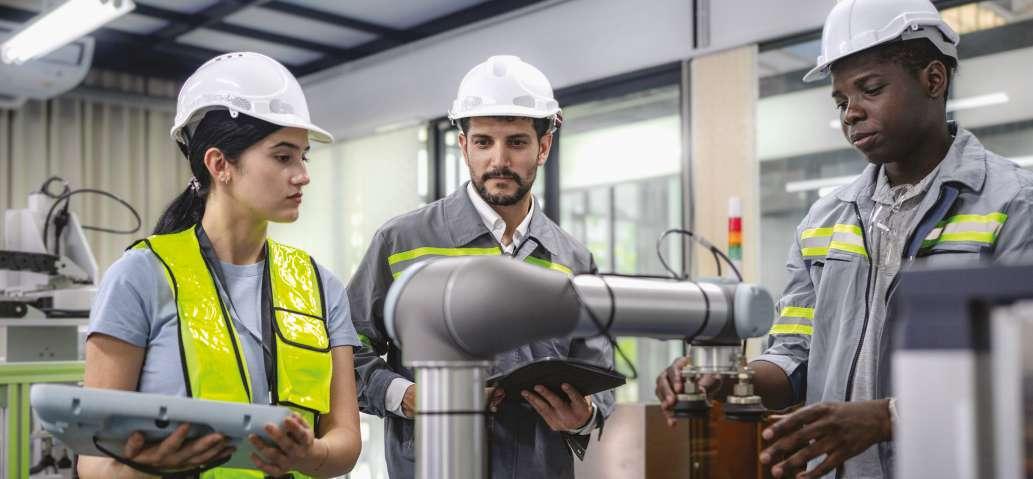

Inalfa Roof Systems is a leading supplier of automotive roof systems. We specialize in system design, development and assembly of innovative and high quality roof systems for car manufacturers. At Inalfa, our purpose is to open up your world with every drive. Enabling all drivers and passengers to experience more fresh air, natural light and a greater connection to the outside world. We seamlessly integrate our technology to make driving more comfortable and fun.
Our headquarters are located in Venray, the Netherlands. Today we serve our global customers from plants and development centers from all around the world to deliver the best quality products in the world.
Today, we have more than 5,000 employees and various global engineering teams, serving the world’s largest automotive brands with products that are seen every day on city streets and country roads.
Innovation and quality drive our growth ambitions. We work closely with suppliers, start-ups, customers and other industry partners to deliver world-class roof solutions.




Last year we introduced and applied a new training format around a new product launch learning journey for an internationally operating OEM. “The combination of new technologies like AR and VR and the global distribution of virtual learning resources through live broadcasts and apps makes our Training 3.0 concept a unique, interactive learning experience that can be enjoyed without the need for a shared physical location” says Bernd-Jan de Rooij, Manager International Business Development of Innovam.
What makes the concept powerful is the experience of physical training, but in a 3D virtual, interactive environment that offers unlimited possibilities compared to reality and is available to the participant, as a group or individual and independent of place or time, through various online channels. Interaction with the trainer or the subject (such as a vehicle) creates greater engagement, a more enjoyable learning experience and a better understanding of the subject matter. This combination makes Training 3.0 a versatile, scalable and logistically interesting product.
Brands think and operate globally today, and that means training and certifying their employees does too. Bernd-Jan de Rooij explains: “while there remains scope for local initiatives based on local needs, most of our OEM customers
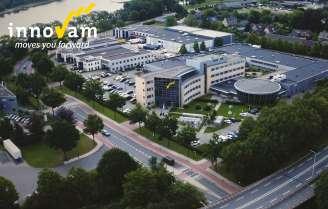
understand that centrally secured development of new training materials and the associated certification program is much more efficient, and can bring a significant cost benefit if it avoids the need for each local market to develop its own program”.
* Therefore, we for example take care of the complete development of new training programs around the launch of new products in the international market, and transfer them to local trainers based on our proven Train The Trainer (TTT) method to ensure the quality of training in all markets involved. And our programs support both the target group of mechanics and sales people to ensure that all have the same knowledge within their discipline and responsibility towards the main subject.

“Clear need for more training in the body repair discipline”.
Founded in 2023, StudioXR can safely be called the company’s fastest-growing department. The department develops and produces virtual solutions as part of complete blended journeys. They do this for various training disciplines, ranging from technicians to service staff and sales target groups. Danny Kroonen of StudioXR explains: “Our starting point is to provide interactive as well as intuitive user experiences that are close to reality”.
With a highly driven team, we develop standardised and customised products. We do this from our recording studios in Nieuwegein and through XR solutions, the collective name for Augmented
“Support our customers to reduce their carbon footprint by offering training courses online”.
“Our interactive learning experience can be enjoyed without the need for a shared physical location”
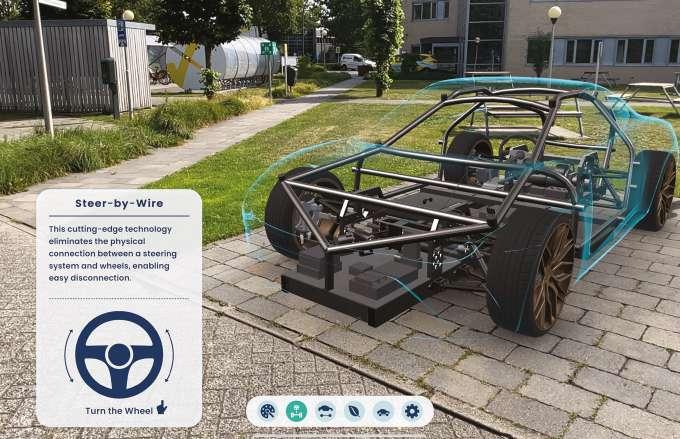
Reality (AR) and Virtual Reality (VR) based apps and experiences. Despite today’s almost limitless possibilities, we like to think about feasible and, above all, usable solutions in both experience and functionality that fit well with the reality of the workplace!
“Educating and training people gets much more value if it can subsequently be shown that they have actually improved their skills”, says Bernd-Jan de Rooij. Retention of staff is becoming increasingly valuable as hiring new staff becomes harder and harder, and Innovam helps its clients by offering appropriate pathways to map acquired skills of employees, and provide additional training or education where they show gaps. The Innovam Branche Kwalificatie Instituut (IBKI) thus certifies tens of thousands experts in our industry on an annual basis, ranging from MOT inspectors to WRM driving instructors, and vocational students that require a proof of their practical skills.
* We also do this on behalf of internationally operating OEMs such
“A centrally and secured development of new training materials or exams is much more efficient”
exotic materials leads to more skills in welding technology, and other joining techniques (such as adhesives).
* As a result, we have greatly expanded the range of available courses and training for this target group and invested significantly in upgrading our training facilities and related equipment. We also serve several OEM customers with an European or even Global program and train their employees on site in Nieuwegein, often completing the training with an exam.
as TIP Trailer, which, on the basis of a new training program developed by us with accompanying certification, is now meeting the great need for new Trailer Technicians in the 12 markets they operate in, in order to be able to maintain the level of service to their customers in the years to come.
* For a renowned premium sports car brand from Italy, we provide certification in 12 languages for their worldwide dealer employees, ranging from technicians to service staff, sales staff and their local body repair experts. We do this based on a combined approach of partly online and partly physical activities in Nieuwegein, or on location in the respective country or region.
In recent years, the need for specialised body repair training has grown markedly. This is a direct consequence of the many (partly mandatory) ADAS systems we find in today’s cars. Calibrating these systems correctly after repair or accident is very important, and there is a clear need for training in this discipline. Also, the use of aluminium and other more
Wherever possible, we help our clients keep their carbon footprint as small as possible. We do this by offering training courses online, where no concessions are made on the learning objectives to be achieved. Participation is then on the basis of e-learning, provision of video tutorials, use of an XR-based solution such as an App, or remote participation in live broadcasts from our studios in Nieuwegein.
Innovam moves you forward!
Innovam helps everyone in the mobility industry to get the best out of themselves and act as the best ambassadors for the company or brand they work for. We have been helping them to do this for more than 75 years, with the support of 275 employees and our many business partners in The Netherlands and abroad. Whether it is about acquiring new knowledge, improving the necessary skills or obtaining a corresponding certificate, we take care of it all.


PROVIDES JOB OFFERS VACANT IN THE DUTCH AND GLOBAL MOBILITY INDUSTRY
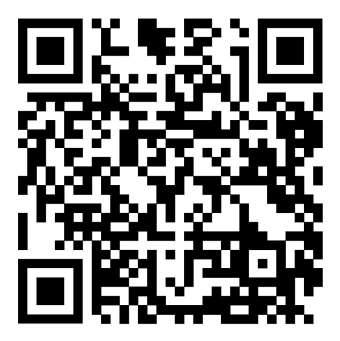

Why is quality management so important?
In the fast-changing world of the automotive industry, with its many challenges, quality is key for success. Consumers expect more and more perfection, so quality management becomes essential for ensuring reliability, safety and customer satisfaction.
At the heart of the automotive industry, quality management facilitates the seamless integration of processes, products, and people. It begins with a comprehensive analysis of customer needs and extends to very close control of every stage of the production process, from design, over manufacturing to delivery and service provision.
However, quality management is more than just procedures; it enables to create a mindset integrated in every organization’s core. It assures a culture of continuous improvement, where mistakes serve as opportunities for learning and improvement. With strict controls and high standards, defects are minimized, enhancing the reputation of the organisation and fostering and enhancing customer loyalty.
How is this done practically?
IATF 16949 is an international standard setting to outline the criteria for a quality management system (QMS) in the automotive industry. It is aligned with ISO 9001, while addressing specific automotive requirements.
The standard was developed by the IATF, a group of automotive manufacturers and their respective trade associations, to promote a unified and standardized approach to quality management.
IATF 16949 is a vital tool in the pursuit of excellence within the automotive industry. By fostering a culture of quality, process management and risk based thinking the standard helps organizations not only to meet the current industry challenges but also to prepare for the future. As automotive technology continues to advance, IATF 16949 guides companies toward the highest levels of quality and customer satisfaction.
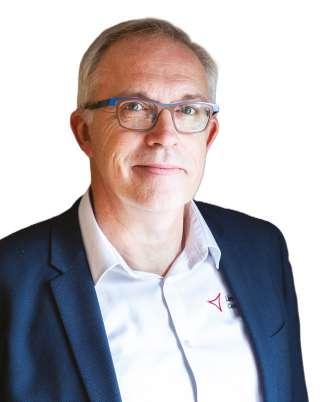
Consulting You has established itself as a competent consultancy company in quality management in the automotive industry. With the years of expertise and partnership with SMMT QMD, we help organisations in achieving and maintaining their IATF 16949- system and organise exclusive certified trainings.
“Quality management in the automotive industry is a critical aspect to ensure customer satisfaction, safety, and compliance with industry standards.”

In the heart of the Dutch automotive industry, innovation is being driven by a new generation of talent. Across the Netherlands, student teams from leading institutions are pushing the boundaries of sustainable mobility with groundbreaking projects. From TU/ ecomotive’s eco-friendly vehicles to InMotion’s high-performance electric race cars, and from Solar Team’s solar-powered solutions to Summa Hydrogen’s pioneering hydrogen
technology, these teams are not only showcasing the future of automotive engineering but also contributing to the global transition towards cleaner and more efficient transportation. In this article, we delve into the inspiring stories, challenges, and successes of these remarkable student teams as they help shape the future of the automotive world.


Student team Solar Team Eindhoven has developed the first off-road car powered by the energy of the sun, making it independent of charging stations
Stella Terra is robust enough to navigate not only on paved roads but also on rough terrain. Starting from the north of Morocco, Stella Terra has been tested extensively, driving over a thousand kilometers through various landscapes and terrains. Finishing the journey in the Sahara, all powered by the sun.
With the solar panels on the roof and its robust construction, Stella Terra achieves complete independence
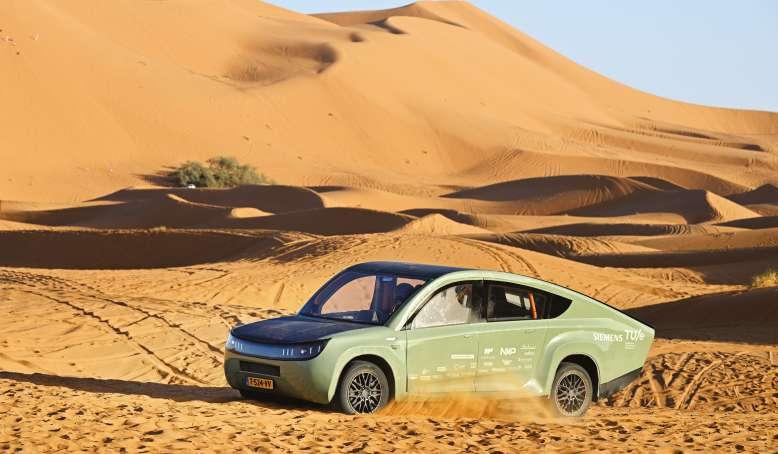
in a sustainable manner anywhere in the world. The solar car, which is road-legal, has a top speed of 145 kilometers per hour, weighs only 1200 kilograms, and has a range of 710 kilometers on a sunny day.
Stella Terra must withstand the harsh conditions of off-roading while remaining efficient and light enough to be powered by the sun. That is why they had to design almost everything themselves, from the suspension to
The award-winning student team InMotion from the Eindhoven University of Technology has developed a groundbreaking cell-level cooling technology to facilitate ‘Electric Refueling’. This means that with their remarkable 4-minute charging time, they aim to match the speed of refueling petrol-powered cars. Showcasing the possibilities of Electric Refueling in the toughest conditions, namely endurance racing, will show its potential anywhere.
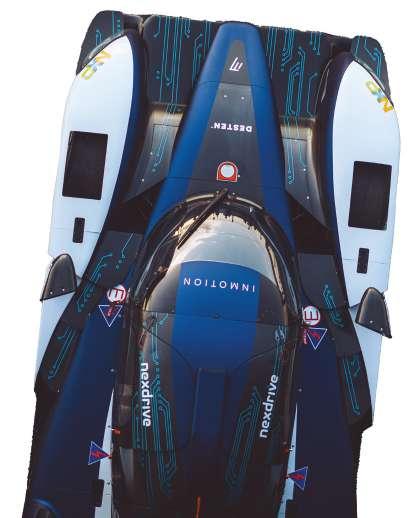
But innovation does not stop at a 4-minute charging time, InMotion is looking to lower the charging times even further while also working on developing an Active Battery Management System which will elongate the life cycle of the battery. Ultimately, InMotion dreams of showcasing Electric Refueling at the prestigious 24-hour race of Le Mans.
Are you interested in collaborating with InMotion or do you want to read more? Send an email to info@inmotion.tue.nl or visit their website www.inmotion.tue.nl
In recent years, hydrogen has emerged as a promising alternative to traditional fossil fuels and batteries. The student team of the Universities in Twente, known as HyDriven, is taking this potential energy source to the racetrack. Every year, they build a hydrogen-powered race car to demonstrate the viability of this technology and work towards a zeroemission society.
HyDriven, formerly known as Green Team Twente, started their journey in 2011 competing in the Shell ECO Marathon, an efficiency race. After having driven 3600 km on 1 kg of hydrogen and achieving numerous European and global championships, the time had come to pursue a new challenge. Which was made possible by the partnering companies of HyDriven.
Starting from 2021, HyDriven has been participating in the Formula Student Competition alongside 1000 other FS teams across the world. In France, the first-ever hydrogen class is being set up, and we have the privilege to set the example. The team competed in The Netherlands and for the first time raced in France with a working hydrogen formula student race car. At this competition, not only efficiency, but also acceleration, velocity, and agility are of great importance.
This is not only a huge achievement for HyDriven, but also for alternative industries, which can apply the knowledge of this proven concept.
the converters for the solar panels.
According to Bob van Ginkel, Stella Terra is five to ten years ahead of the current market. "We are pushing the boundaries of technology. With Stella Terra, we want to demonstrate that the transition to a sustainable future offers reasons for optimism and encourages individuals and companies to accelerate the energy transition."


Educational innovation is so much more than another lesson program or a fresh curriculum. In vocational education it is much more about intensive cooperation with the internal and external environment. This is how we see it at Summa Automotive.
We are fully engaged in innovation and sustainability. Alternative energy, alternative fuels and smart mobility are key words in our approach.
SUMMA Automotive racing H2
Summa Automotive has started an exciting adventure. In 2018 we started
participating in the Horizon Hydrogen Grand Prix competition. Racing with RC cars with a revolutionary hydrogen-electric drive. Student teams from all over the world showed how they develop their skills for life. In addition to winning several National Championships, our students managed to achieve 3rd place at the World Cup in Las Vegas in September 2023, with first place awards for innovation and economy. We are now working on qualifying for the World Cup in Anaheim – California which will be held in September. Of course there are plenty of opportunities for sponsorship.
In January 2024 we opened our own brand new permanent indoor race track at the Automotive Campus in

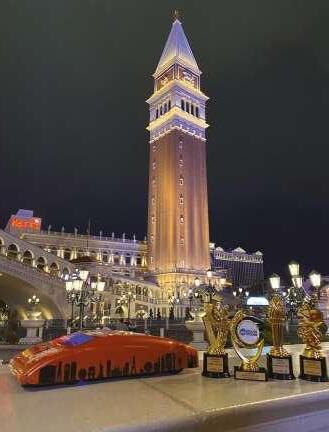
Helmond. In the next years we will aim to participate in several student competitions such as E-karting, Shell Eco Marathon and Autonomous Driving.

Student team TU/ecomotive from Eindhoven University of Technology has built several sustainable concept cars to show the endless possibilities for ecofriendly mobility.
In 2020, the team introduced Luca. This car has been made out of recycled waste including dis-carded toys, old televisions and ocean plastic!
Following up in 2021 was ZEM, the world’s first car to absorb more CO2 than it emits. ZEM focuses on every phase of a car's life cycle, from construction to recycling. Up to 80% of its components are 3D printed for easy recycling and it features a unique

carbon capture system that cleans the air while driving.
Eterna is the car that lasts a lifetime! By ingeniously prioritizing durable materials and modular design, Eterna extends the lifespan of vehicles far beyond conventional norms. Its innovative approach allows for easy customization, swapping out top panels to create diverse vehicle styles.
Driven by passion and commitment to sustainability, this team is on a mission to inspire the automotive industry.
Stay tuned for the next innovative car coming up this year!



We are partners in future mobility design to create & build demonstrators with a focus on new materials, technology, user interface and experience design. Through our dedication to user-centered innovation, our drive is to expand the boundaries in bringing cutting-edge technology to life.
Visit us at b-studio.com
for the ‘Battery
Together with industry, knowledge institutions, and trade associations, the Battery Competence Cluster-NL (BCC-NL) is working to accelerate the energy transition by developing a strong battery ecosystem and combining knowledge and competencies in battery technology. The focus is on the Dutch battery, transport, and maritime industries.
As a storage system for sustainable energy and a driver for the electrification of our mobility, the role of batteries is invaluable. The innovation program BCC-NL aims to give The Netherlands a strong position in the international battery market. By focusing on sustainability, circularity, and material independence, the cluster contributes to achieving climate goals and economic success in our country.
The impact and scope of BCC-NL are surprisingly high. Peter wondered what an innovation program like BCC-NL could offer to large organizations that already have specific knowledge, financial resources, and an international network. “We recently spoke with a major player in the Dutch market. This conversation highlighted that BCC-NL’s added value lies in our extensive knowledge of Dutch industrial companies involved in battery technology. Additionally, these companies collaborate with us, creating a strong alliance. This company was looking for more local clients in The Netherlands, even though it already had major clients in Asia and Western Europe. BCC-NL connects with a wide variety of companies, demonstrating that the entire ecosystem benefits from our program.”
BCC-NL focuses mainly on four themes in the field of batteries:
• Second use, materials, and recycling
• Sustainable battery components and production processes
• Battery systems for a sustainable energy supply
• Battery systems for heavy-duty mobility
For these themes, it is necessary to join forces. Peter explains, “We have about nine research institutions in The Netherlands, which is truly unique for the size of our small country. In addition to companies, organizations such as The Netherlands Foreign Investment Agency (NFIA), governmental organizations, and regional development agencies are connected to BCC-NL. This is an extremely valuable network of
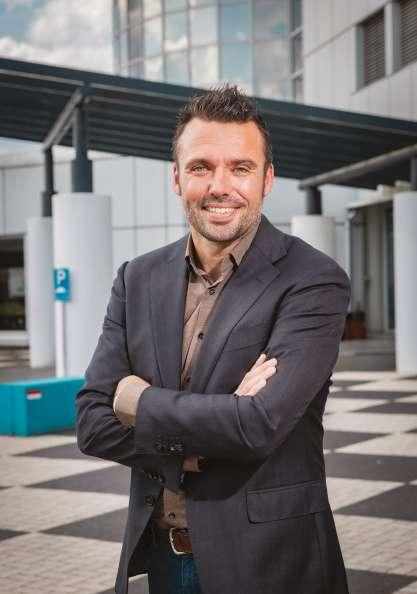
organizations and companies. As a connecting party, we try to unite all these entities. It is our role to navigate, support, and facilitate the program. We want to be a platform where all parties can go and make use of the support we provide to collaborate, address national and international issues, or evaluate where we stand technologically as The Netherlands. BCC-NL is both an innovation program and a platform where we facilitate, collaborate, steer, and advise. We also want to ensure that companies—and any other entities within them—find a way to support the Dutch battery ecosystem and become even more sustainable.”
One of BCC-NL projects is the Material Independence & Circular Batteries project of the National Growth Fund. Peter states: “In this project, companies, knowledge institutions, and the government collaborate to become more independent of rare materials mined in other countries and to use new materials for batteries, including setting up a recycling chain. The main goal is to put The Netherlands on the map globally as a major player in the battery sector, in a sustainable way. To achieve this, three important program lines have been established. The first is about sustainable material supply. This involves providing raw materials through refining and battery recycling. The second program line focuses on developing and scaling sustainable battery technology. This includes materials, components, and equipment. The third program line deals with circular battery systems for transport applications and grid stability. This includes heavy transport and large-scale pilots and demos for bulk batteries.”
The intended results of this program include ensuring that The Netherlands has sufficient capacity and knowledge to recover materials from batteries. That these Dutch companies become key suppliers of sustainable battery processes and components, and that The Netherlands leads in zeroemission end products in mobility, such as buses and trucks. Additionally, The Netherlands aims to be a leading supplier of bulk batteries for grid stability, and the program ensures that there is sufficient talent and personnel with the right skills in battery technology.
“The National Growth Fund is investing €296 million in this project. This should not only contribute to economic growth in The Netherlands but also to a sustainable future. By investing in battery technology, we create this BCC-NL ecosystem that provides opportunities for Dutch companies and contributes to CO2 reduction and more efficient energy use,” Peter explains.
Collaborating with BCC-NL can mean a lot for a company, both nationally and internationally. Peter, who brings extensive experience in sustainable technology and project management, plays a crucial role in this collaborative effort. With his wide experience in the Automotive Industry, Peter leads the BCC-NL Battery Systems for Heavy-Duty Mobility program. This program focuses on developing and implementing advanced battery systems for heavy-duty vehicles. His expertise ensures that the technical aspects of these projects meet the highest standards and align with broader sustainability and economic goals, ensuring all stakeholders are included in the discussion and all aspects of this emerging step in zero-emission mobility are covered, including the grid and overall infrastructure.
Peter’s background in engineering and his previous work with major industry players provide him with a unique perspective on the challenges and opportunities within the battery sector. He is known for his ability to bridge the gap between technical development and practical application, making him an important asset to BCC-NL and the Battery Systems for Heavy-Duty Mobility program. Under his leadership, the program makes significant steps in promoting the adoption of zero-emission technologies in the transport sector.
Peter emphasizes the importance of collaboration in achieving the program’s objectives. “We are a facilitator, a program platform you can communicate with and place your needs. We do our best to support you. We offer our network and facilitate you to enter a collaboration. Whether you think your organization is too small to reach larger partners or know your partners but lack access to decision-making parties, BCC-NL can probably help you. We combine similar requests and try to organize significant events around them. Other participants, of course, also play a role in this. They actively reach out to other companies to understand
where they are or want to be, what the technological roadmap is, or where and when they want to be at what exact level. Because sometimes you need the next technical level, and another company just has that knowledge waiting for you,” concludes Peter. No need to reinvent the wheel twice.
BCC-NL has also fostered partnerships with both established international companies and emerging startups, stimulating innovation and creating new market opportunities. Peter’s vision is to make The Netherlands a leader in zero-emission heavy mobility, contribute to the global shift to a more sustainable future, and achieve this with all key stakeholders on board and aligned.
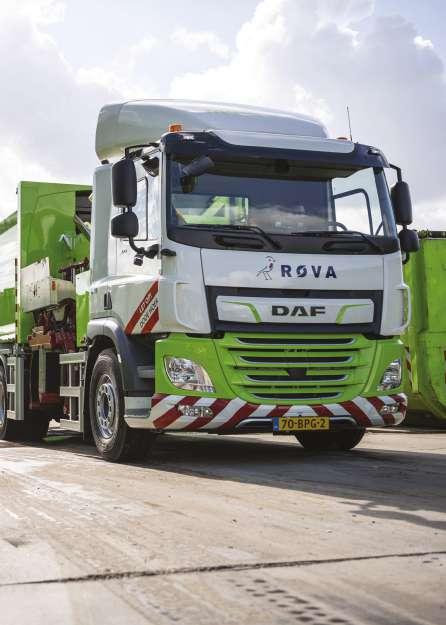


Aluminized is ready to take your projects to new heights. With a proven track record in manufacturing high-quality products for the automotive, Aluminized is the choice for discerning customers across Europe.
One of our projects involved the production of the battery box for a groundbreaking battery pack. In collaboration with a leading company, we developed custom solutions that meet the precise specifications in this industry.
At Aluminized, we understand the urgent demand for high-quality battery boxes and are committed to delivering solutions that meet this need.
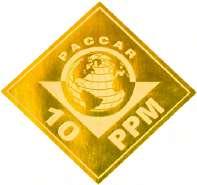



What sets Aluminized apart from the rest? It's all about our unparalleled quality and craftsmanship. Our expertise in leak-tight welding with high tolerances ensures that our products stand the test of time, even under the most demanding conditions. But that's not all - we have perfected the process down to the last detail. The proof? Our 10 PPM Quality Award, which recognizes suppliers who meet or exceed PACCAR’s rigorous “10 PPM”quality standard. In fact, Alumnized achieves an impressive 7 PPM, surpassing the industry standard. This is the equivalent of 7 defective parts for every million components shipped to PACCAR.
Whether you're looking for custom solutions for battery boxes or other aluminium products, Aluminized is ready to bring your vision to life. Contact us today and discover the possibilities we have to offer. With Aluminized by your side, success is garantueed.
Get in touch with our dedicated Sales Engineers: Have questions or need more information? Don't hesitate to reach out to our experienced Sales Engineers:
Sebastiaan Overwater Wannes Bienert +316 28 75 89 41 +316 51 24 61 76 sebastiaan.overwater@sag.at wannes.bienert@sag.at


As sustainability requirements, government policies, and consumer demand continue to put pressure on the automotive market, the Dutch automotive industry is finding effective ways of integrating cutting-edge materials and sustainable design practices to redefine the future of mobility.

Central to this transformation is the strategic implementation of lightweight composites, advanced manufacturing technologies, steel recycling and reuse, and a robust commitment to circular economy principles This forward-thinking approach not only enhances vehicle performance but also significantly reduces environmental impact, positioning The Netherlands as a leader in sustainable automotive innovation. With RAI Automotive Industry NL at the forefront of progress, the Dutch automotive industry is charting a course through challenging but promising terrain, establishing new standards for performance, environmental responsibility, and technological leadership.
The automotive industry is at a crossroads, balancing the demands for sustainability with the need for advanced performance. In The Netherlands, this balance is being managed through innovative design and the use of new materials. In a conversation with Freek de Bruijn, Program Manager Design and Materials at RAI Automotive Industry NL, he says, „Our goal is to emit as little CO2 as possible by 2030,” highlighting the ambitious targets set by the industry. This commitment to reducing emissions is driving a focus on zero-
emission vehicles, hydrogen-powered technologies, and smart innovations, all of which contribute to a greener future.
However, little has been done in terms of policies for materials. “We do have the national circular economy program,” says de Bruijn, “and there is a little bit mentioned about lightweight and what that means for the automotive industry and mobility, in general. But we don’t have a clear policy document for materials like we have with batteries or hydrogen.” Such a limitation means that a lot of companies, including RAI members, are looking for innovation possibilities and subsidies to stimulate their innovation with materials.
The traditional “take-make-dispose” economic model is undergoing a transformation. In The Netherlands, the government is pushing for a complete transition to a circular economy by 2050. This innovative approach aims to keep resources in use for longer by prioritizing reuse and remanufacturing over waste. “Imagine a system where what we currently discard becomes the fuel for new products,” says De Bruijn. “That’s the essence of the circular economy. By repairing, refurbishing, and recycling existing materials, we can significantly reduce our dependence on virgin raw materials extracted from the earth.” This vision is reflected in the National Circular Economy Programme (NCPE), which outlines a roadmap for achieving a dramatic reduction in virgin material use. The ambitious goal is to slash virgin material consumption by 50% by 2030, paving the way for a complete phase-out by 2050.
This theme is already in play and is, therefore, new to the automotive industry and supply chain in The Netherlands. Most SMEs are struggling to keep up, making it a serious challenge. Therefore, design must be optimized, minimizing resistances to meet circularity targets. The circular economy offers a win-win solution. By conserving resources, we lessen our environmental impact. Additionally, it fosters innovation in product design and waste management, creating new economic opportunities.
RAI Automotive Industry NL supports the Circular Economy R-ladder methodology, which emphasizes minimizing raw material use through a hierarchical approach. The R-ladder demonstrates the degree of circularity: The higher up the R-ladder a strategy is, the more circular it is and the lower the raw material use is. The R-ladder consists of six steps representing different circularity strategies:
• R1 - Refuse and rethink: Abandon products or use them more intensively
• R2 - Reduce: Manufacture efficiently or optimize usage
• R3 - Re-use: Utilize second-hand products
• R4 - Repair, refurbish, remanufacture, repurpose: Repair or reuse parts
• R5 - Recycle: Process and reuse materials
• R6 - Recover: Recover energy from materials
RAI Automotive Industry NL is committed to working through this methodology in cooperation with its members. By adopting the R-ladder approach, the industry aims to significantly reduce waste and enhance
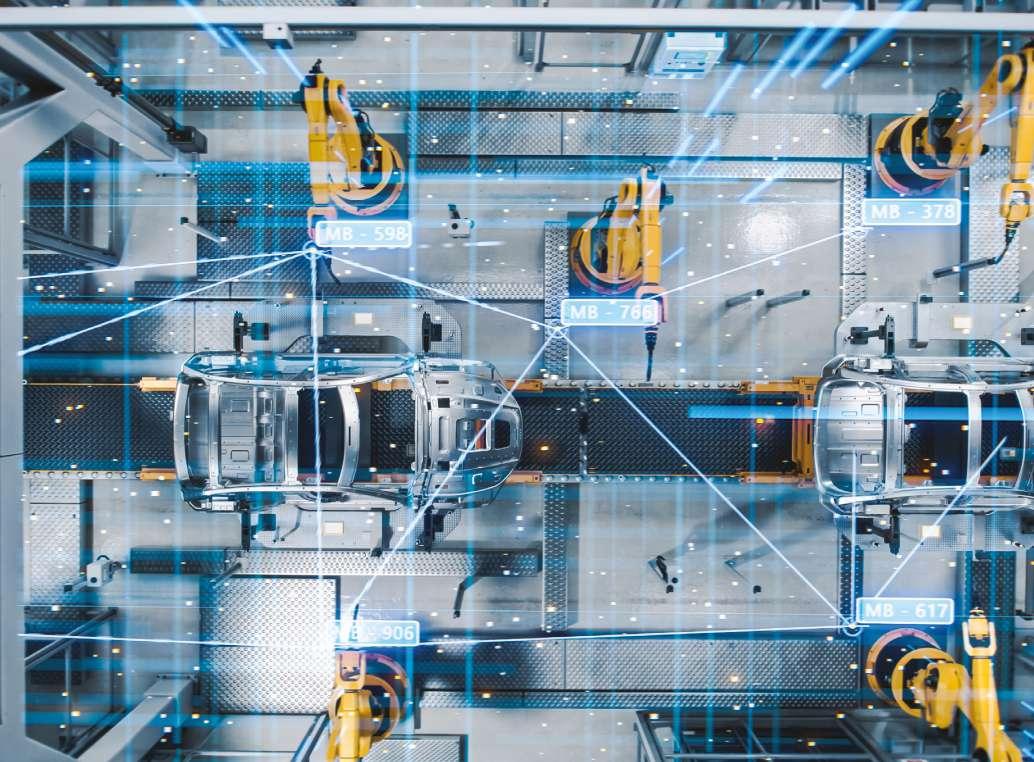
the sustainability of automotive materials, ensuring that resources are used as efficiently as possible throughout the product life cycle. This commitment not only supports environmental goals but also aligns with broader efforts to create a sustainable and resilient automotive sector.
Over the past decade, the Dutch automotive industry has seen remarkable advancements in design and materials. The emphasis on lightweight materials has been particularly significant. “As battery technology advances, vehicle weight is increasing. To counter this, we must prioritize lightweight vehicle construction,” De Bruijn emphasizes. This need has led to a surge in the use of lightweight materials like for instance, carbon fiber, which offers superior strength-to-weight ratios.
A key example of this focus on lightweight materials is RAI Automotive Industry NL’s collaboration with the European Lightweight Association (ELA). This partnership aims to leverage the combined strengths of European regions to advance lightweighting technology. By working with ELA, RAI Automotive Industry NL broadens access to customers, technologies, and best practices, enhancing the competitive position of its member businesses.
The industry’s drive to reduce CO2 emissions has brought attention to the environmental impact of vehicle weight. Lighter vehicles require less energy, thereby reducing overall emissions. The integration of lightweight materials has extended beyond the automotive sector to aerospace and urban infrastructure, showcasing the versatility and impact of these innovations. Additionally, ELA’s efforts support the European Green Deal, highlighting the role of lightweight technology in climate protection and ensuring a brighter future for coming generations.
Simultaneously, the Dutch and European automotive sectors have been pioneers
in sustainable manufacturing practices, with a significant focus on steel recycling and reuse. With steel In The Netherlands, recycling rates for steel are among the highest in the world, thanks to robust systems and technologies for collecting and processing end-of-life vehicles. This commitment to recycling is mirrored across Europe, driven by stringent regulations and a collective effort to reduce the environmental footprint of vehicle production. Sustainable manufacturing in the automotive industry not only includes recycling but also the use of renewable energy sources, efficient production processes, and the development of circular economy principles. These initiatives ensure that materials are reused and waste is minimized, contributing to a more sustainable future for the automotive sector and aligning with broader European sustainability goals.
In 2023, The Netherlands was able to recycle 98.7% in terms of the weight of each vehicle, comfortably meeting the European rules for at least 95% car recycling. The percentage achieved in 2023 consists of 88.1% reuse and recycling and 10.6% energy recovery or other useful applications. The increase in the reuse and recycling percentage is because the proportion of reuse at car dismantling companies has increased.
The quest for enhanced performance and efficiency has led to the exploration of various materials and composites. Thermoplastics and thermosets are at the forefront of this exploration. „Thermoplastic materials are quite easy to recycle, whereas thermosets, while stronger, are more challenging to recycle,” De Bruijn notes. This distinction is crucial as the industry seeks materials that not only perform well but are also sustainable.
Recycling thermoset plastics is challenging compared to thermoplastics due to their permanently linked molecular structure, which doesn’t melt when heated, making them difficult to reshape. However, scientists are
researching new recycling methods, including chemical treatments that break down the cross-linked structure for reprocessing. While large-scale recycling of thermosets isn’t yet commonplace, these developments offer hope for a more sustainable future for these materials.
Another leading sector in this space is the composite industry, given that composite materials are lightweight and can be used extensively in a wide range of automotive parts. The trends in areas like composite materials show that there have been many innovations and advancements, with the most important development being the demand for lightweight solutions.
A significant development in this area is RAI Automotive Industry NL’s partnership with CompositesNL, which focuses on advancing the use of composite materials within the automotive industry. By working together, RAI Automotive Industry NL and CompositesNL aim to enhance the performance and sustainability of composite materials, ensuring they meet the rigorous demands of modern vehicles while promoting recyclability and environmental responsibility.
In addition to developments in materials, advanced manufacturing technologies, such as 3D printing, are revolutionizing the automotive industry. “3D printing offers design freedom, cheaper manufacturing, and reduced energy use,” De Bruijn points out. This technology allows for layer-by-layer manufacturing, creating complex parts with minimal material waste. The ability to produce lightweight, organic-looking parts enhances both performance and efficiency. This not only applies to plastics but also to metals. Metal 3D printing leverages the metals’ strength properties, allowing for more gaps in the structure without compromising the structure’s integrity and strength.
Hybrid combinations of materials, such as steel and plastics, are also gaining

traction. These combinations offer the best of both worlds, providing strength and durability while reducing weight. The challenge lies in ensuring these hybrid materials are easily disposable and recyclable, aligning with the industry’s sustainability goals.
RAI Automotive Industry NL plays a crucial role in supporting the Dutch automotive industry through policy advocacy, knowledge exchange, and international collaboration. „Our goal is to connect parties so that they know who is doing what, which is a productive solution,” De Bruijn explains. By facilitating connections between manufacturers, suppliers, and other stakeholders, RAI Automotive Industry NL helps foster innovation and collaboration.
One of the association’s key initiatives is learning from international counterparts. Countries like Germany, Austria, Switzerland, and Sweden have implemented successful policies and funding programs for materials innovation. By studying these models, RAI Automotive Industry NL, together with ELA, aims to replicate and adapt successful strategies for the Dutch
context. This approach ensures that Dutch companies have the support they need to innovate and remain competitive.
On the international scale, RAI Automotive Industry NL works closely together with CLEPA, the leading voice for European automotive suppliers, representing 3,000 companies across 19 countries. As a key industry liaison with governments and global bodies, CLEPA advocates for its members’ interests, including RAI Automotive Industry NL.
Collaborations between Dutch automotive companies and research institutions are pivotal in advancing design and materials innovation. One notable example is the Light Vehicle 2025 project, where RAI Automotive Industry NL worked with their member Sekisui Europe amongst others, to develop innovative automotive components. The project focused on reducing the life cycle analysis (LCA) of various parts, achieving significant improvements in sustainability.
„We reduced the number of parts and amount of material, and looked at different manufacturing technologies,” De Bruijn explains. The success of the
development to stay ahead in the global market, and Dutch companies are known for their innovation and high-quality engineering, positioning them well to tackle the challenges of sustainability and digitalization.
Looking ahead, Pontis Engineering predicts significant advancements in the use of composite materials and smart design techniques. The push towards electric and autonomous vehicles will drive demand for lightweight, durable, and versatile materials. They expect to see more integration of different materials with different properties creating smart hybrid structures meeting different requirements in an efficient way, enhancing vehicle performance and safety.
components, suggesting improvements like using snap fits instead of screws. Currently, there are many different rare metals in PCBs. Existing recycling methods are not designed to recover these substances effectively, leading to losses. The solution lies in scanning and designing methods to locate and extract these metals. Research shows that AI, combined with cobots, can identify and remove these materials from printed boards, a step towards developing a passport for PCBs similar to battery passports.
industry stakeholders with government bodies and research institutions to facilitate innovation and share best practices.
Looking ahead, the Dutch automotive industry is committed to overcoming these challenges through continuous innovation and collaboration. By integrating sustainable materials, advancing manufacturing technologies, and developing supportive regulatory frameworks, the industry aims to lead the way in creating a more sustainable and efficient future for mobility.
Light Vehicle 2025 project led to the submission of the CYPRESS project, which aims to further explore circularity and sustainable manufacturing.
One of the RAI members that stands out in the design and materials space is Pontis Engineering. They specialize in advanced composite materials and innovative design solutions for the automotive industry. Their primary focus is on developing lightweight, highperformance components that enhance vehicle efficiency and sustainability. A notable example of their work is the development of carbon fiber-reinforced polymer (CFRP) structures for electric vehicles (EVs). These materials significantly reduce the overall weight of the vehicle, thereby improving battery range and reducing energy consumption.
Recently, Pontis Engineering collaborated with a leading EV manufacturer to create a fully composite chassis. This chassis not only meets stringent safety standards but also offers superior performance characteristics compared to traditional materials. The use of CFRP allowed for a 30% weight reduction, demonstrating the potential of advanced materials in revolutionizing automotive design.
Pontis Engineering sees the Dutch automotive industry as a dynamic and rapidly evolving sector. The industry is heavily investing in research and
Despite the significant advancements, the Dutch automotive industry faces unique challenges in adopting sustainable materials. “Raw materials are scarce, and it takes a lot of energy to extract them,” De Bruijn highlights. This scarcity underscores the importance of recycling and reusing materials to mitigate environmental impact and reduce dependency on finite resources. For example, prices for copper are reaching all-time records almost daily, and if the way copper is harvested is not changed, known reserves could run out in as little as 37 years. Research is being conducted on replacing copper with silver and carbon in PCBs to address this issue.
Projects focused on retracting materials from existing vehicles and PCBs are crucial in addressing this challenge, aiming to create a circular economy where materials are continuously repurposed. There are research projects using AI to identify every part of a depreciated vehicle: what materials are present, their locations, and the types of metals involved. This AI system also assesses the degree of recyclability for each metal and provides feedback on how to efficiently disassemble
One of the critical strategies being explored is remanufacturing, which involves dismantling and rebuilding engines and other components to extend their lifespan and reduce waste. “Remanufacturing allows us to rebuild certain parts from scratch, minimizing the need for new raw materials,” De Bruijn explains. However, this process is still in its experimental phase and not yet profitable, posing a challenge for widespread adoption. The industry is working to refine these techniques to make them more economically viable and scalable.
Another challenge is the integration of lightweight materials such as carbon fiber and composites, which are essential for reducing vehicle weight and improving efficiency. While these materials offer significant performance benefits, their production and recycling processes can be complex and costly. The industry is investing in research to develop more efficient manufacturing techniques and recycling methods for these advanced materials.
In addition to technological advancements, regulatory frameworks must evolve to support the adoption of sustainable materials. “Legislation and regulation need to catch up with technological developments,” De Bruijn asserts. This includes creating policies that incentivize the use of recycled materials and support the development of infrastructure for collecting and processing end-of-life vehicles and components. Collaboration and policy support are critical in overcoming these challenges. RAI Automotive Industry NL plays a central role in connecting
The Dutch automotive industry is poised for further advancements in sustainability and materials innovation in the near future. Circularity will remain a central focus, with efforts to redesign, remanufacture, and recycle automotive components gaining momentum. „It’s important to keep the raw materials within Europe and ensure they are reused effectively,” De Bruijn reiterates.
The integration of lightweight materials will continue to grow, driven by the need for efficient, high-performance vehicles. Composite materials, particularly carbon fiber, will play a key role in this evolution. The industry’s commitment to reducing emissions and enhancing sustainability will drive ongoing research and development.
The Dutch automotive industry is navigating a transformative period, driven by the need for sustainable practices and innovative materials. With the support of RAI Automotive Industry NL and its members, the industry is addressing the challenges of reducing emissions, resource dependency, and material scarcity. By embracing new materials, smart technologies, and circular economy principles, the Dutch automotive sector is set to lead the way in sustainable automotive innovation.
NRF has a strong focus on e-Mobility, as the aftermarket for electric vehicles is also growing substantially. The entire range for these consists of more than 1.000 parts and is continuously growing.
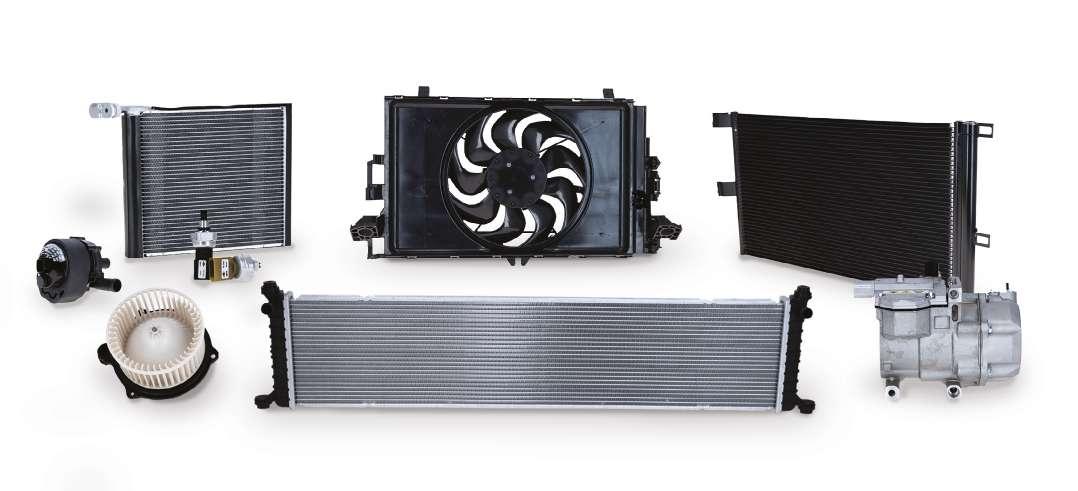
In an electric vehicle the cooling system remains an integral part of the powertrain. To provide optimum performance, the batteries and power electronics need to be maintained within a specific temperature range. The cooling system thus retains its recognizable layout with the radiator as a main component. The coolant is circulated by an electric pump to ensure the powertrain electronics are operating safely and with the highest efficiency in all environmental conditions.
As with internal combustion engine (ICE) vehicles, EV’s also have HVAC (heating, ventilation & air-conditioning) for the passenger cabin. In ICE vehicles the engine provides the power for the HVAC via a compressor on the engine itself. In an electric vehicle the power is provided by an electric motor/ compressor. A poorly functioning HVAC will increase power consumption and reduce the vehicle range, so keeping these systems properly maintained is vital, NRF is in prime position to help its customers with this.

In line with the increasing proliferation of electric vehicles NRF is constantly adding new parts to its range. Included in the range already are a Tesla Model 3 condenser (NRF no. 350517) and a Tesla Model Y cooling fan (NRF no. 470078). Check the NRF webshop to find out what other parts are available.
NRF has a team of technical specialists providing training on demand. Yearly these trainers provide more than 1.000 technical trainings across Europe. Next to the trainings on location, NRF also offer online training sessions. During the dedicated EV training courses, mechanics gain the necessary knowledge to work on these vehicles. Topics include safety regulations, battery (dis)connection procedures, HVAC maintenance and much more. Very interesting!
Last year, NRF opened their own e-Mobility head office at the Automotive Campus in Helmond, The Netherlands. This new development underlines NRF’s focus on developing their e-Mobility product range and a forward-looking approach. At the campus NRF has access to training and EV test facilities.


Are you looking to upgrade from ordinary products and embrace modern manufacturing advancements?
It’s time to elevate your automotive solutions with HTR Rubber and Foam, the industry leader in technical rubber and foam material products. With over seven decades of experience and a commitment to excellence, HTR is positioned to take your business to new heights.
Picture this: a cutting-edge vacuum forming production line, carefully crafted after years of research and development. What sets it apart? Innovation. Quality. Precision. Care. At HTR, we don’t just meet industry standards – we exceed them. Our IATF16949 certification is a testament to our unwavering dedication to excellence.
But we didn’t stop there. Recognizing the limitations of existing equipment, we embarked on a journey to revolutionize the manufacturing process. The result?
A game-changing 3D-foam forming solution, years in the making. Installed in December 2023 at our facility in Eindhoven, The Netherlands, this fully automated production line is unlike anything you’ve ever seen.
From roll-fed foam material to laserprecise measurements, every aspect of our production line is optimized for efficiency and quality. Say goodbye to
manual labour and hello to maximum output with minimal waste. With HTR, you’re not just getting products – you’re getting solutions.
But don’t just take our word for it. Experience the HTR difference for yourself. Contact us today to learn
how our unique technical solutions can transform your business. From design to manufacturing, HTR is your partner in success. Together, let’s pave the way to a brighter future for the automotive industry.
www.htr-nl.com

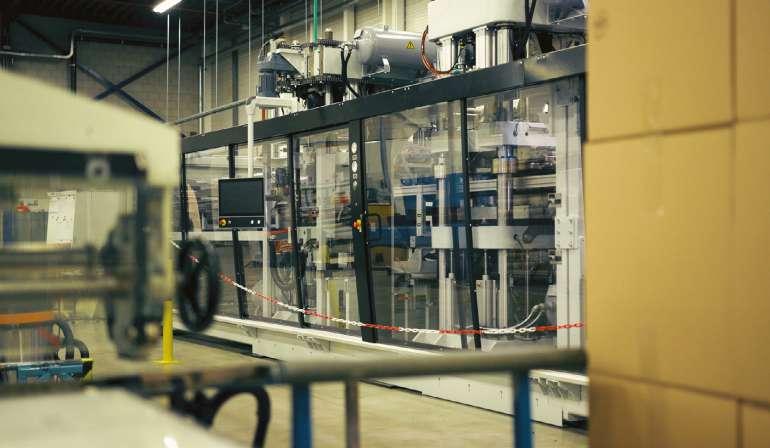

Since joining VADO Beheer in 2018, we’ve remained steadfast in our pursuit of innovation, quality, and customer-centricity.
Peter Rutten, who also heads sister company, Gereedschapsmakerij Van Vlijmen, emphasizes the significance of innovation within EMD Tooling, stating,
“Innovation is the key to our success.”
We continue to invest in research, development, and our team to enhance our products and processes, meeting the evolving needs of our customers.
With a dedicated team of professionals, we are a reliable partner for companies striving for perfection and quality in their production processes. Our commitment to excellence and sustainable growth drives us forward, as we look towards the future with confidence.
Rutten underscores the importance of customer focus, stating,

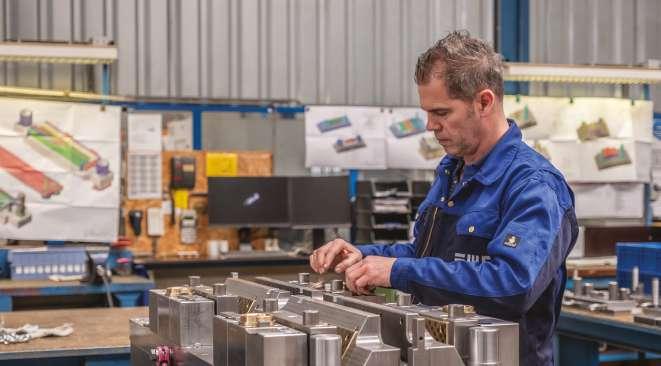
“At EMD Tooling, the customer is always at the forefront.”
We aim not only to deliver high-quality precision tools but also to collaborate closely with our clients to offer bespoke solutions that truly meet their needs, enabling them to excel in their respective sectors.
Through close collaboration with clients and partners worldwide, we have gained invaluable insights into their specific needs and challenges. This enables us to provide tailored solutions that truly meet their requirements. Furthermore, EMD delivers fully assembled production lines, such as those for the production of cooling fins. EMD is not merely a toolmaker; we are architects of seamless Turn Key solutions for advanced production lines. Every step, from coordination to delivery, is meticulously handled by us. Before a production line leaves our premises, we ensure it operates flawlessly and meets the expectations and requirements of our clients.
Our products are crafted using advanced technologies and premium materials to meet the strictest standards for precision and reliability. At EMD, we also take a step further with innovative simulation technologies. We delve deep into the heart of each tool design and material selection, analyzing and optimizing every facet. By refining performance and efficiency in a virtual environment, we can anticipate and address potential challenges before they manifest in reality.
EMD Tooling has been active in the automotive industry for many years, serving clients with a range of stamping tools, from simple to highly complex. These tools are used in the production of various components, such as oil coolers, headlamp parts, airbag covers, engine mounts, and stabilizer bars.
At EMD Tooling, we excel in collaborating with customers to minimize production costs. We achieve this by integrating various operations and products into our tool designs and builds, enabling our customers to produce more efficiently and reduce expenses.






Fill in the diagram so that each row, each column, and each 3 x 3 block contains the numbers 1 through 9 only once.
Fill in only zeros and ones. No three consecutive zeros or ones. Each row and column is unique.
Electrification of commercial vehicles requires lightweighting solutions to extend range, increase payload, and provide heating to passengers without sacrificing performance.
Available lightweighting solutions for large series are often not suitable for commercial vehicles such as trucks and buses. The approach must be different due to lower volume (market size), different requirements and the level of industrialisation of processes.
Fibre reinforced plastics, or composites, can provide an efficient solution for these challenges. However, different challenges for commercial vehicles require a different approach from that for high volume car manufacturing.
Current solutions in composites available for the high-volume manufacture of passenger cars (high investment) or for aerospace applications (high reliability and associated cost) are not adequate.
A solution is necessary that is sustainable, affordable, scalable,

reliable with an appropriate supply chain for smaller series. Composites offer a wide range of manufacturing processes that can be matched efficiently with the required production volume, but this requires making the right choice for product development.
In composites manufacturing, to successfully develop a product, it is necessary to focus on manufacturing and industrialisation, as these aspects have the largest impact on affordability and scalability. This is a key difference compared to more traditional development methods.
Developing a composite product from a design point of view should therefore be avoided as this leads to decisions that do not consider manufacturability and inevitably introduce higher cost and complexity.
“Pontis develops affordable and sustainable composite products together with their customers and can execute or support all steps necessary to develop a composite product, from initial conceptual design to full industrialisation.”

Piet Heinkade 55 1019 GM Amsterdam The Netherlands Phone: +31 207 370 294 www.pontis-engineering.com
International collaboration is a cornerstone of RAI Automotive Industry NL’s strategy for driving technological advancement and market expansion. The global automotive industry is highly interconnected, with innovation and market trends often emerging from various parts of the world. RAI Automotive Industry NL ensures that Dutch companies remain at the forefront of these developments by actively cultivating international relationships, assisting members with international missions, and providing data-driven market research and business intelligence from the global automotive industry.

A major focus for RAI Automotive Industry NL is building relationships with automotive and tech firms worldwide, which will assist in driving innovation and enhancing technological capabilities within the Dutch automotive sector.
“The Dutch Automotive industry doesn’t contain the big brands as OEMs, we are more of a supplier industry. However, when you look at our total turnover, it’s about 30 billion euros, which is quite substantial. This industry supports approximately 70,000 jobs, making it very important. That’s why we focus heavily on internationalization, with 90% of our total turnover coming from exports. We are truly dependent on the global market.”
One way RAI Automotive Industry NL supports members in accessing international collaboration is by assisting them in meeting and building relationships with key players worldwide via international trade missions and delegations.
“The automotive mobility world faces similar challenges in our focus countries: France, Germany, Sweden, and the United States. We are all working on safety, a greener automotive ecosystem, and more. What makes building these partnerships even more enjoyable is the cultural exchange. It’s so valuable to have these global connections.”
These efforts are crucial in helping companies navigate global markets, establish business relationships, and stay competitive. RAI’s activities can be divided into three categories:
missions
RAI organizes trade- and innovation missions around the latest technology advancements. Missions attract many participants and offer the possibility of visiting many international companies and institutions. The missions aim to connect Dutch start-ups, scale-ups, SMEs, corporates, governments, and knowledge institutions with international ecosystems and partners. These missions are specifically interesting to those who want to enter foreign markets with smart and sustainable mobility technology, like new battery solutions and new materials, or wish to do more business there.
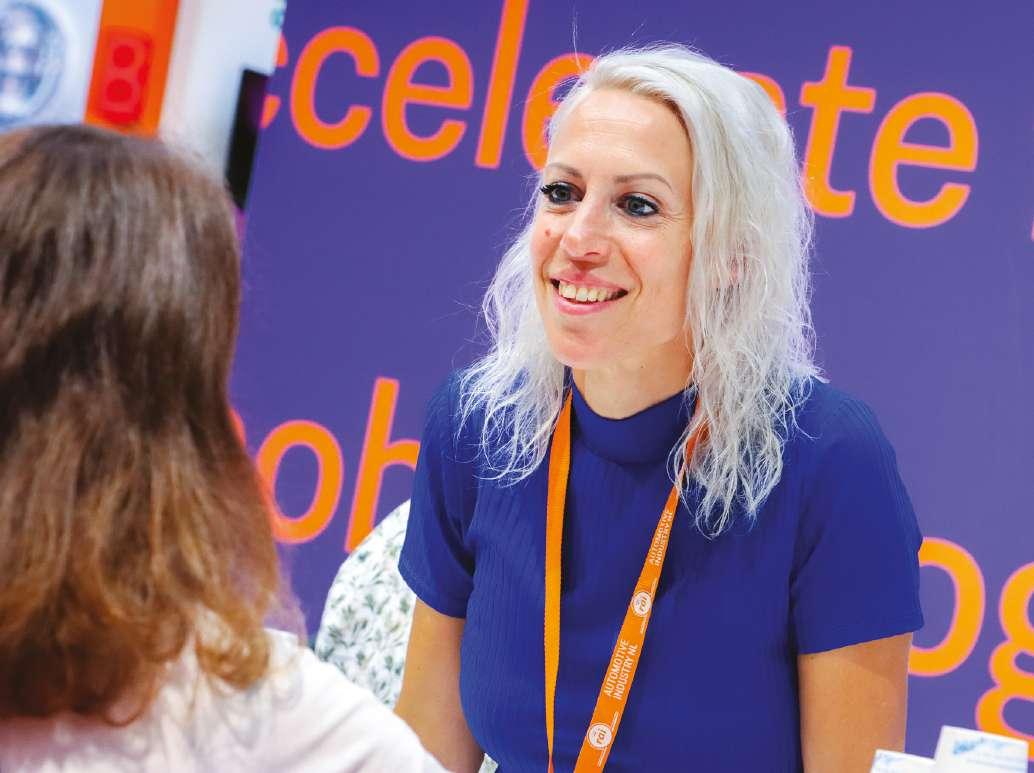
Businesses that operate internationally tend to be more productive, innovative, and successful. By participating in the trade or innovation missions, entrepreneurs can expand their networks and enhance their international opportunities.
For those wanting to exhibit at prestigious international trade fairs, RAI offers a joint platform for innovation and networking. RAI members can join the NL Pavilion by reserving a space within the exhibition area. This is particularly attractive for start-ups, scale-ups, and SMEs who cannot afford a pavilion on their own. The pavilion has an open, representative appearance with recognizable, strong NL branding. RAI takes over the complete preparation regarding the stand construction on behalf of exhibitors. Participants can focus on presenting themselves professionally and use the collective space with a bar area and catering. RAI also organizes programs for international delegations in the pavilions. In addition, participants
benefit from joint promotional activities that increase traffic to the pavilions. RAI will be present at shows like the IAA, and Automechanika in Germany and Solutrans, EQUIP Auto and the Paris Motor Show in France.
“At RAI, we believe that fostering international collaboration is the key to unlocking cutting-edge advancements in the automotive industry.”
Bram Hendrix, RAI Program Manager
for Internationalization
RAI organizes co-innovation days that serve as a platform for fostering collaboration and synergy between The Netherlands Automotive and Mobility industry and OEM and TIER1 companies from the international industry. These events, held several times a year, aim to facilitate the exchange of knowledge, innovation, and expertise to drive advancements in these areas and promote mutual growth and development. In the past, co-innovations days have been organised at and with leading companies such as Renault, Continental and Vitesco. The goal is
to facilitate exchange between the innovation departments of companies.
RAI gathers market intelligence and conducts research for the Dutch automotive industry by fostering strong relationships with its network of companies and embassy networks. Their member network serves as a rich source of insights, helping to navigate the ever-changing automotive industry landscape.
RAI collaborates with embassy networks, including innovation attachés, to gain deeper insights into specific focus countries. The Innovation Attachés provide an overview of scientific and technological developments in their respective regions and have an important trendwatching role. RAI also partners with other cluster organizations, which are groups of interconnected businesses

in a particular industry or location. This collaboration allows for the sharing of knowledge and resources, enhances market research capabilities, and fosters collective growth.
RAI’s strategic approach to understanding automotive industry trends involves concentrating on a specific group of countries, ensuring a deeper comprehension of these markets. This approach underscores RAI’s commitment to driving informed and targeted advancements in the automotive sector. RAI gathers intelligence most relevant to Dutch companies seeking international partnerships and trade opportunities.
RAI Automotive Industry NL plays a crucial role in propelling the Dutch automotive industry to the forefront of global advancements. By fostering a collaborative environment and international partnerships, RAI empowers Dutch companies to access global expertise and markets and helps them to drive innovation and navigate a complex international landscape.
Collaboration with international partners allows Dutch companies to stay at the cutting edge of technology, contributing to the development of next-generation vehicles and mobility solutions. By connecting Dutch companies with international partners and markets, RAI facilitates export growth, strengthens the Dutch automotive industry’s global footprint, and secures its position in the global supply chain. International partnerships open doors for Dutch companies and help them access a wider pool of talent and expertise, allowing them to build stronger and more diverse teams.

The transition to the goal of electric propulsion is clear, and while it is an enormous task, Vitesco Technologies is well prepared to meet the challenges.
In addition to the transition to EVs, there are further challenges to overcome. The arrival of new players in the Tier 1 and OEM arena, who bring a different speed and development culture, means that established companies must adapt. This requires an exchange of ideas and practices outside of one’s known circles. Here, the brokerage function of an industry organization like RAI can help to identify the connections between the Tier 1’s needs and the Tier 2’s offerings. The goal is to build up a business relationship that is mutually beneficial.
RAI’s strong added value is maintaining an effective matchmaking process by identifying and reaching out to member companies that show clear potential in our innovation topics.



•


Zero emissions, zero congestion, zero accidents: faced with the triple challenge of the automotive and mobility industry, RAI Automotive Industry NL and NextMove clusters are weaving a network of transnational players to strengthen the ecosystem while stimulating innovation.
NextMove is the French cluster organization of the automotive & mobility sector, based in the scientifically and technologically advanced regions of the Ile de France and Normandy. These regions compose a territory historically defined as the “Mobility Valley” as they represent around 70% of the French R&D potential in the automotive and mobility sector, where innovative mobility solutions are invented, developed, tested, and industrialized to meet the future challenges. The local ecosystem consists of international leader groups (Renault, Stellantis, Valeo, Forvia, STMicroelectronics, etc.), many innovative startups and SMEs, academics, research centers and local public authorities. NextMove’s role is to federate this network of more than 500 members, and to support the local actors and their innovations by representing this ecosystem and its interests on the European and international level.
Why
In a Europe in full transition, no one can do it alone: we need to act as part of a European economy, and this is exactly the strategy that our two clusters have embraced since our first common activities in 2016.
RAI and NextMove both have a head start in the industry: after 9 years of culturally rich and highly inspiring collaboration, the two clusters are now each the main trusted partners in their ecosystems.

Since the start of our collaboration, our joint activities have focused on two areas: participation in collaborative innovation projects and facilitating business for our networks.
Regarding the first, RAI and NextMove have been involved in two European projects funded by the COSME program, which ran between 2018 and 2022, and aimed at strengthening cluster management excellence, while facilitating strategic connections between clusters and specialized ecosystems across Europe.

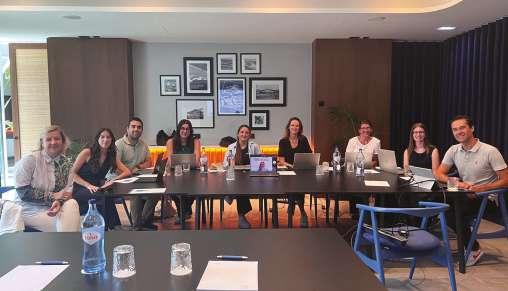
In terms of facilitating business opportunities for our members, the two clusters implement on a regular basis discovery mission to allow their respective networks to visit the other ecosystem: on each occasion, an enriching three-day study tour on a specific mobility topic is organized with a targeted program of site visits, events and discussions. The objective? To forge links between the Dutch and the French ecosystems’ representatives to identify and develop concrete areas for collaboration.
The last edition of this activity has been proposed at the occasion of the Hyvolution trade fair in January 2024: bringing together the major European players in the hydrogen sector, we
created a very rich program, working hand in hand. Social events (company visits, dinners, etc.) generally attract more companies. It didn’t take long to see the results: more than 30 people joined us, instead of the twenty or so we had planned. This is proof that we need to go beyond trade shows to create real connections within our ecosystem.
There are a number of objectives on the future joint roadmap: To engage in a potential next joint project financed on European funds, in order to develop free and high added-value activities
for our networks; Encourage the development of international research and development projects between our networks; Continue offering missions to discover our ecosystems in both directions; Coordinate our presence at international trade fairs to maximize networking opportunities for our members.
A lot has already been done, but this is only the beginning! The quality of joint activities is only meant to increase thanks to the accumulated experience, feedback from our members who benefit from these actions and thanks to the solid partnership in place and the strong knowledge of our respective networks, needs and strengths.Nieuwegein, often completing the training with an exam.
These two projects, RECiPE4Mobility and REMOBILISE, have given teams from both clusters the opportunity to discuss their respective difficulties as well as successes, in order to identify best practices and enable both organizations to upskill and offer high added-value support to their respective members.
Another objective of these projects was to enable our networks to benefit directly from the project’s activities, such as trainings, support in identifying European funding, as well as missions to discover the mobility ecosystems of the other partners active in the project: for this purpose, visits to the French, Portuguese, Hungarian and Dutch ecosystems have been organized.

“My compliments, well organized, balanced and with new useful leads and insight in actual market conditions and maturity.”
- Mitsubishi Turbocharger

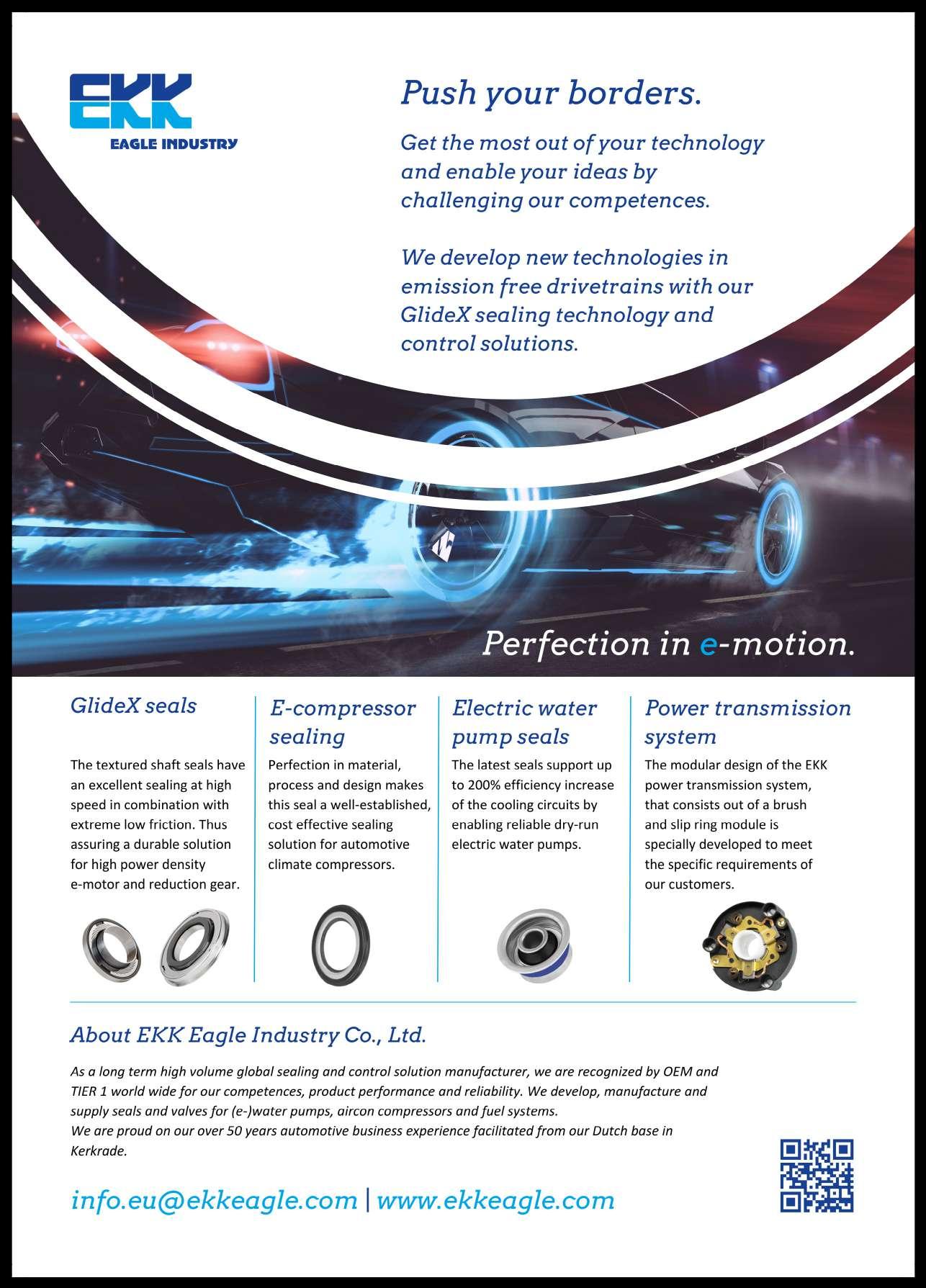

Managing Director Pim Grol p.grol@raivereniging.nl

Program Manager Enabling Technologies Peter Engels p.engels@raivereniging.nl

Secretary Danara Vereijken d.vereijken@raivereniging.nl

Section Manager
Program Manager Manufacturing Jean Pierre Heijster j.heijster@raivereniging.nl

Program Manager Materials & Design Freek de Bruijn f.d.bruijn@raivereniging.nl

Project Manager Danielle van den Berg d.vd.berg@raivereniging.nl

Office Manager Marleen Meurs m.meurs@raivereniging.nl

Program Manager Smart Mobility & Internationalization Bram Hendrix b.hendrix@raivereniging.nl

Communications & Events
Nadieh van Kesteren n.v.kesteren@raivereniging.nl
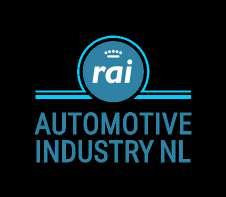
Automotive Campus 30 5708 JZ Helmond, The Netherlands info@raivereniging.nl Support the strengthening of the Dutch Automotive sector with your membership












